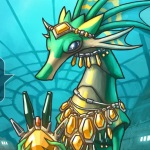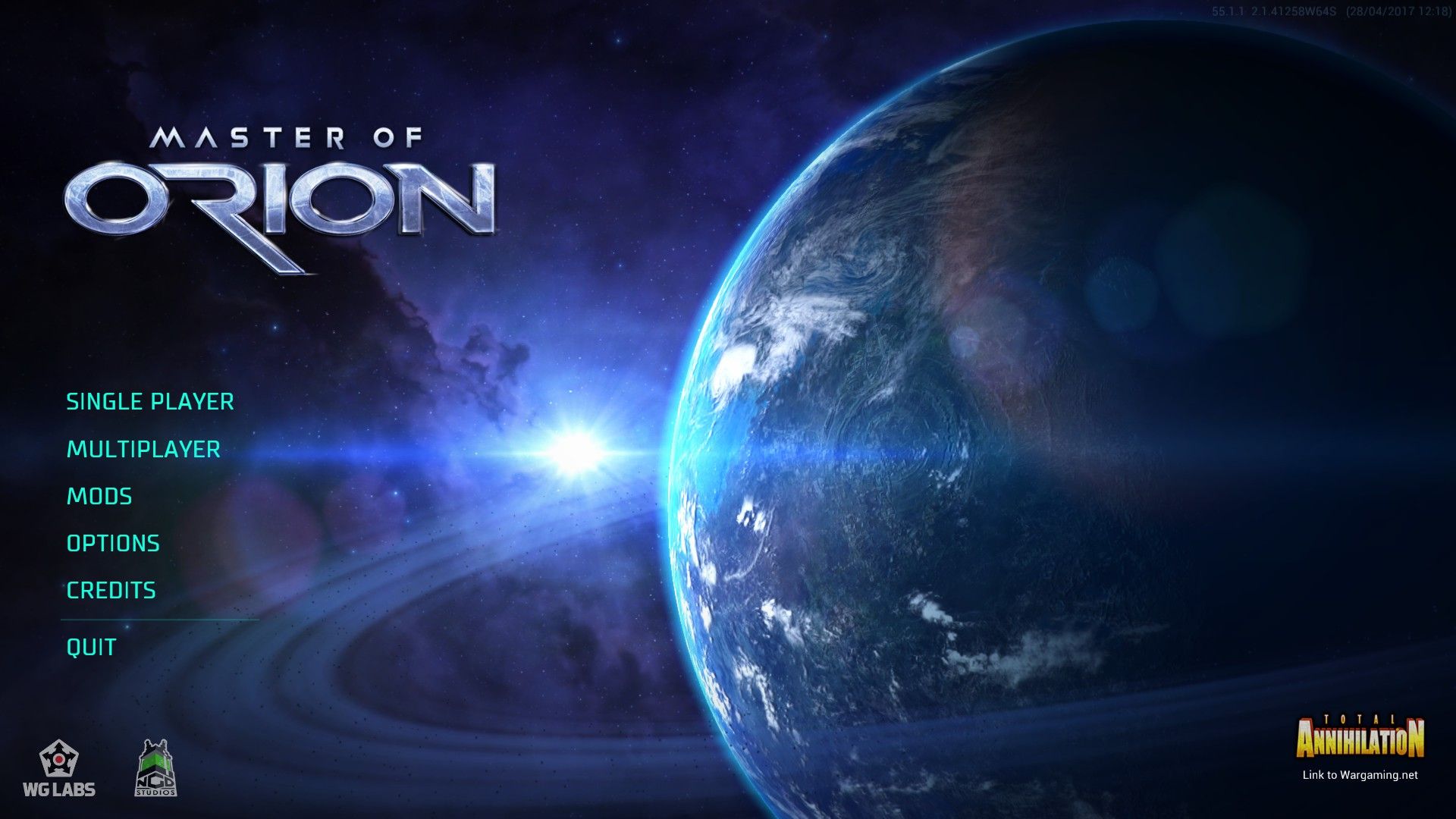|

|
| # ¿ Apr 27, 2024 15:44 |
|
The Moment Before the Dawn It is the year 1800 Old Imperial Reckoning, and the planet Val is at peace. Four billion Gnolams, although only loosely bound by the official institutions of the Universal Mercantile League, are nonetheless tightly bound in a network of commerce and culture that spans the continents and oceans of Val. Since 1692, the Universal Mercantile League has acted to ensure freedom of commerce and movement between its wide array of constituent states, and has maintained a small oceanic patrol fleet to keep the trade lanes of Val open. Approximately five percent of Val's population serves in the critical sectors of heavy industry, research, and agriculture, with the remainder of the population employed in other sectors or too young, too old, or too sick to participate effectively in the workforce. 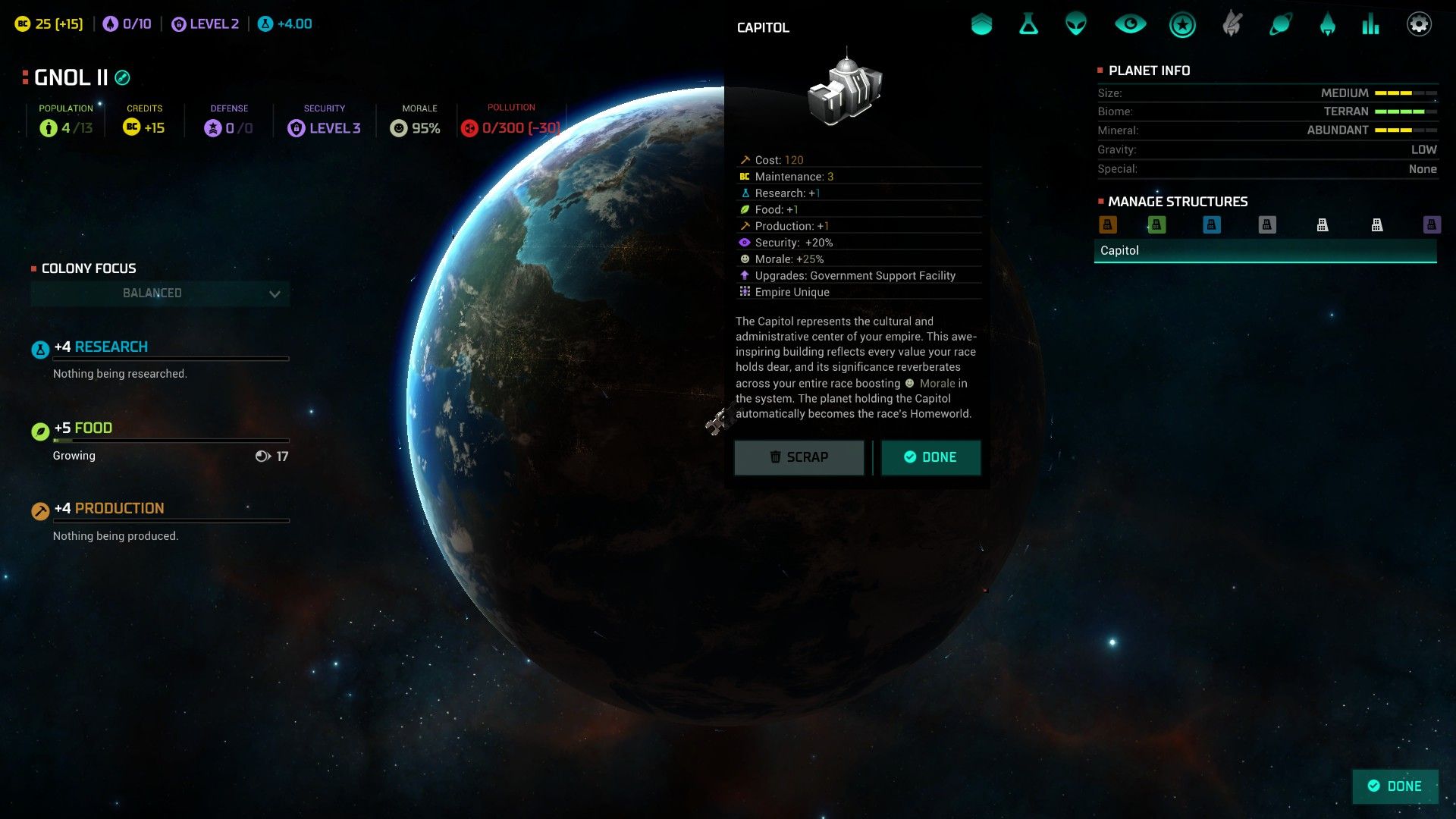 The long development of Val has ensured an extensive array of legacy industries on the planet, squeezing additional productivity out of many different sectors and providing an array of conveniences and services to the population. Even if Gnolam society expands off of Val, it seems likely that Val will remain the effective economic and political center of Gnolam society. 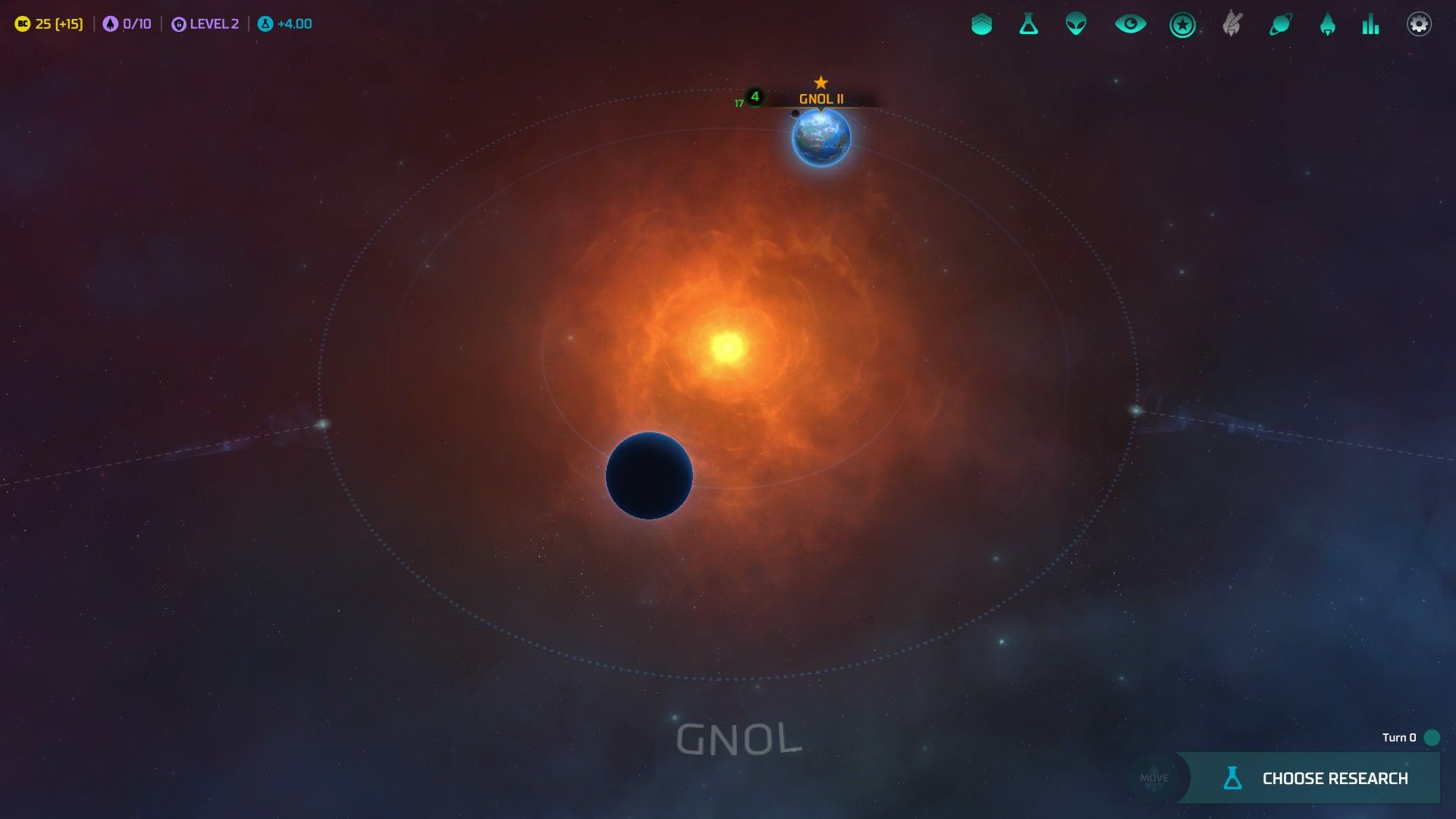 It has long been believed by Gnolam physicists that the speed of light is an absolute barrier- but only now, with the publication of a paper on the complex interactions of deep gravity wells with one another, has it begun to become clear that this is untrue. So-called 'hyperspace conduits' exist between deep gravity wells, wherein objects might be placed in an exotic state permitting faster-than-light travel. Although the practical technology to take advantage of this discovery does not yet exist, two conduits serve to link Gnol, the orange star around which Val orbits, to the gravity wells of neighboring stars. Although an array of planets orbits Gnol, a full survey to determine which could be most usefully exploited has yet to be accomplished. 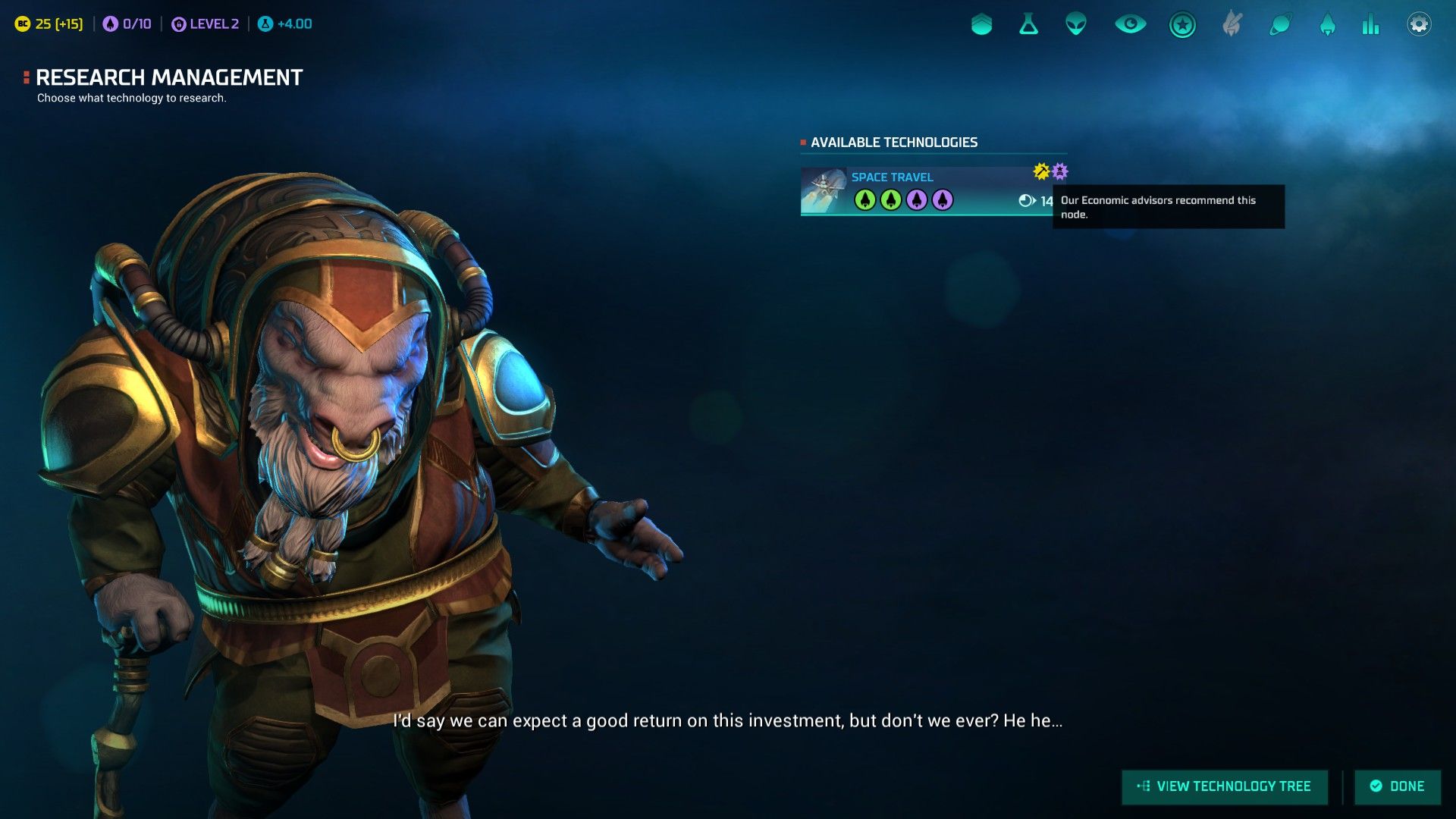 The discovery of the hyperspace conduits has sparked immense interest in the development of effective and economical space technology- both the development of drives that can make use of the hyperspace conduits, and the lift capacity to begin large-scale exploitation of bodies away from Val. Research departments across the League are confident that real breakthoughs will come well before the next two decades are out. 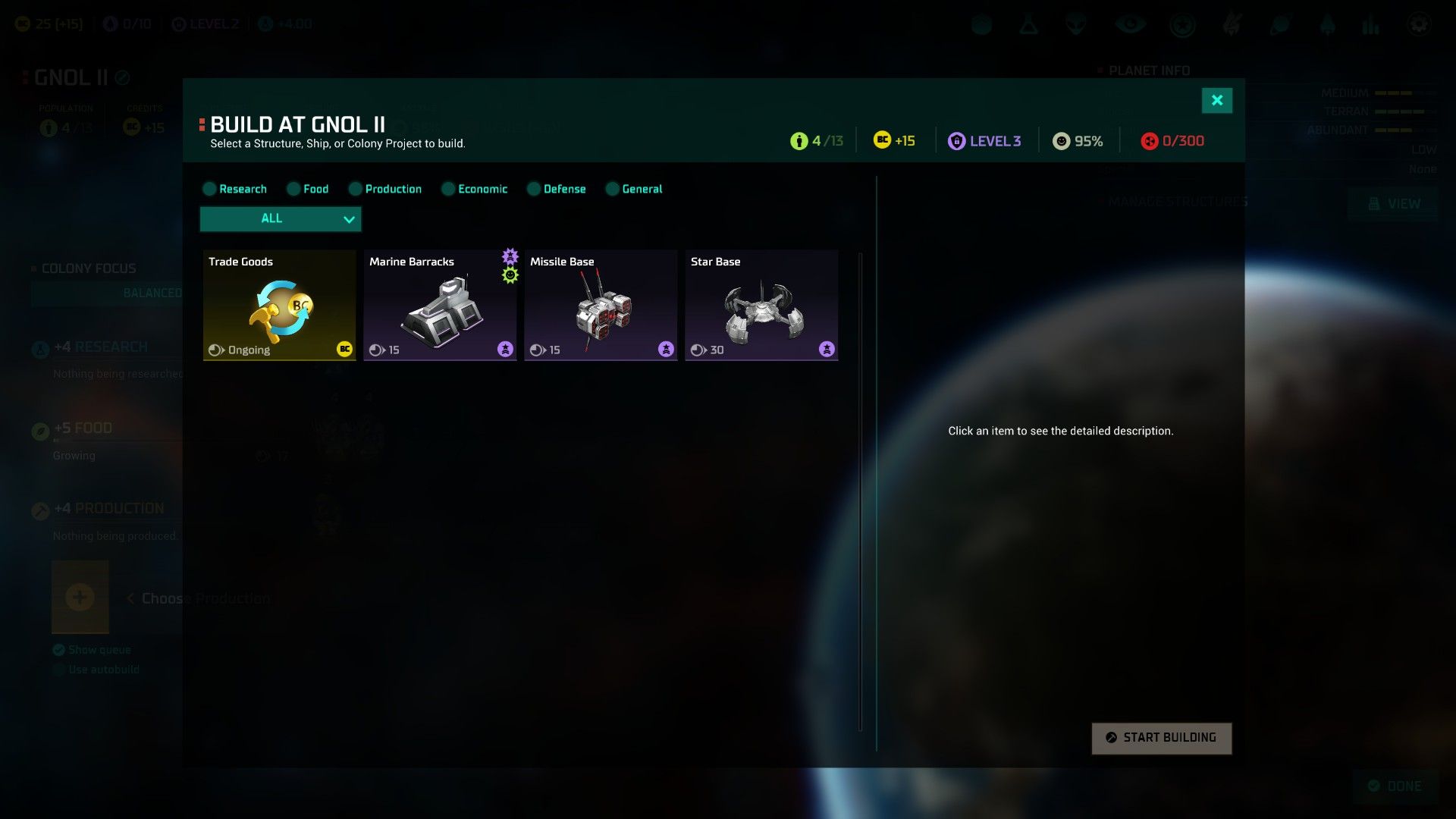 The economic development of Val is essentially mature, given current technology, although a few theorists suggest that developing an orbital station that could serve as an effective logistics base for Gnolam expansion beyond Val's surface could be a valuable project. 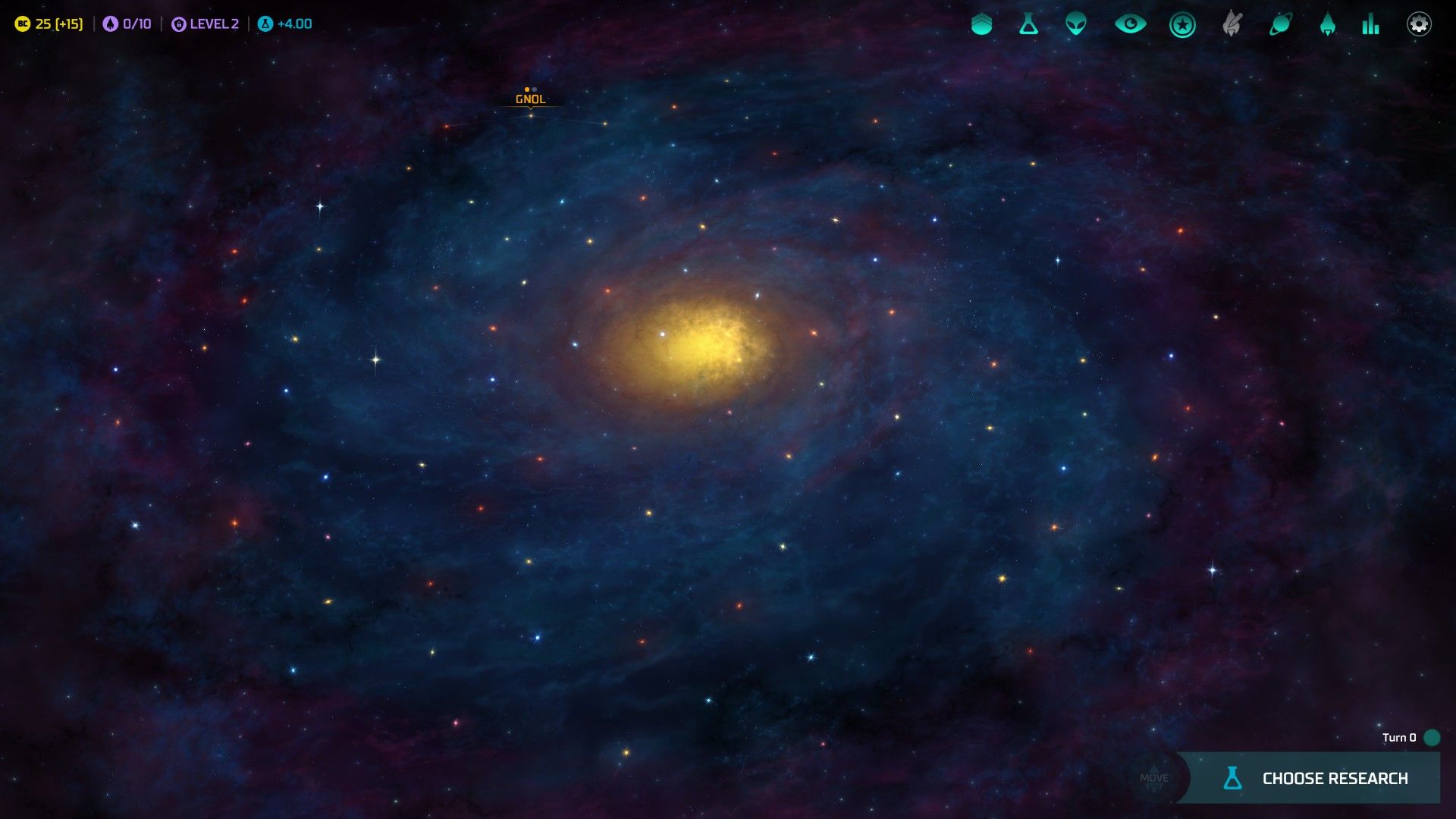 Gnol rests very close to the galactic rim. It seems likely a vast network of stars linked by naturally-occuring hyperspace conduits shall be opened to the Gnolams, although only real exploration shall prove or disprove this. Proposals for the Universal Mercantile League Early Industrial Priorities The League Assembly could, potentially, vote to begin initial construction of an armed logistics base over Val. Although completion of any such base may remain far in the future- resources will almost certainly be more productively applied to other projects as longer-ranged spacecraft become viable for construction- nonetheless this may spare some years of construction work in the future. Alternately, Val's industrial base may productively be turned to general construction of valuable durable goods- or labor may be drawn off from the heavy industrial sector as the research or agricultural sectors expand. Please vote between beginning construction of a Star Base, producing trade goods (+4 BC/turn), or diverting our workforce to research (reducing our first technology's research time from 14 to 8 turns) or agriculture (reducing our time to grow our first new unit of population from 17 to 11 turns). In both the research or agricultural diversions, incidental trade goods will earn us +1 BC/turn. Secondary Research Priorities The development of the technology to exploit the discovery of the hyperspace conduits shall almost certainly be completed relatively soon, and other projects in pure research and applied technology are quietly being worked on behind the scenes. Work in sociology and political theory may not only lay the groundwork to more effectively scale the League's institutions beyond Val itself- it may also help with the development of a more effective educational establishment that could allow for more efficient research in the future. Work in basic physics may lead not only to improvements in robotics and computing, but a new generation of space-based weapons, in the event of any threats to the League. Finally, work in advanced biological sciences and agronomy should allow for improved crop yields and medical treatments. Please vote between Government, Physics, and Biology research to follow Space Travel research. Government will allow for improvements to the morale of new colonies and improved research, Physics will allow for new weapons and improved industry, and Biology will allow for improved agriculture and very modestly improved research. It seems without doubt that the resources of the stars will lead to a new era of prosperity for the League and for its citizens. Opportunity awaits the League! nweismuller fucked around with this message at 14:56 on Aug 7, 2021 |
|
|
|
The Gnolams and the Universal Mercantile League The Gnolams are the native sapient species of Val, an Earthlike garden world with a surface gravity of approximately 0.6G and a rotational period around Gnol of 291 Earth days. As Val's day is approximately 22 hours long, Val's year is 320 Val days long. Gnolams are warm-blooded mammaloids adapted to low gravitation and poorly-suited to higher levels of gravity. Although they are omnivorous in diet, this is a relatively recent evolutionary innovation compared to their herbivorous ancestors, and the vast bulk of the modern Gnolam diet is vegetarian. Gnolam psychology is stereotypically hedonistic, self-centered, and calculating- although they are exceptionally intelligent, even for a spacefaring species, they apply this intelligence far more to pragmatic matters of trade and negotiation than to abstract intellectual pursuits or the development of theoretical knowledge (although, of course, variance within a species means that the Gnolams have their own share of theoretical scientists and philosophers). The modern Gnolam government is the Universal Mercantile League- a treaty organisation founded by a wide array of member states, chartered for mutual defense and the security of the trade lanes. The League itself is a fairly unwieldy representative body with more prestige than real power, with an Assembly of representatives from its member states that elects a 'Commodore' (currently, Commodore Nian Bortis, also CEO of Bortis Shipping and Logistics) who heads the limited executive and military functions of the League. The Commodore serves an indefinite term, but is subject to recall and replacement by the Assembly at any time. The bulk of the League's member states are democratic republics, although a sizeable minority of its member states are sovereign corporate states or constitutional plutocratic republics relying on formal processes of bid and auction to select legislative seats. What is essentially universal across all League member states is a freewheeling dedication to commerce, and the treaty provisions of League membership mandate standards of open trade between members. The economy of the League is powerful and efficient, and its citizens enjoy high disposable incomes- but League society is fluid and not friendly to the complacent, with little security save that one works for. Gnolams work hard, play hard, and when they fail- they fail hard. The damage caused by major disasters in Gnolam society over history has been surprisingly limited, and they have enjoyed a generally smooth and uninterrupted curve of development over their history. Perhaps this 'luck'- or, as Gnolams would have it, 'careful risk management'- will persist into the future. Gnolams are a Low-G species, suffering no penalties on Low-G worlds, but suffering penalties on Normal-G worlds. As Fantastic Traders, they gain +25% income from trade treaties and +100% income from trade goods production. They also gain a +50% bonus to the base income generated by their population. They are Lucky, never suffering from negative random events and being shielded to some extent from... certain other risks. nweismuller fucked around with this message at 08:04 on May 30, 2020 |
|
|
|
'If the League is expanding to new worlds, Bortis Shipping and Logistics will be there. I believe that we will not only remain a major player in oceanic container shipping, but that we can adapt our expertise to spaceborne shipping and logistics, and that this will help secure new profit streams for the company, hah, well into the future. Val was only the beginning, my friends!' Nian Bortis throws the resources of Bortis Shipping and Logistics behind the financial support of space technology research programs, while building up an in-house R&D program tackling the communications and logistics problems that stand in the way of effective commerce and government at interplanetary and interstellar scales. In his person as Commodore of the League, he urges the Assembly to lay an effective groundwork for orderly processing and registry of off-Val property claims.
|
|
|
|
wedgekree posted:Focus early on Agriculture and secondary goal of Government Keep things general. Feel free to hint on techs about a level past Government/Physics/Biology/Engineering as 'on the horizon', but deeper than that in the tech tree, it's not like we have guesses yet. Basic mechanics that are in play as of the start of the game (income/taxes/population growth/research/pollution/production and the like) are fine to discuss what's going on; I probably should have had more mechanical notes in the OP.
|
|
|
|
Woke early and unable to get back to sleep, so may as well play through the next 20 turns (25 Valian years) and grab the images. Looks like research and physics take the lead. E: Got the images collected and uploaded, thinking of trying to get back to sleep if I can. In any event, doubt I'll be in good shape for writing without some rest first, but will try and get things written up later today. nweismuller fucked around with this message at 13:50 on May 31, 2020 |
|
|
|
Home is Where the Heart Is, But the Stars are Made of Gold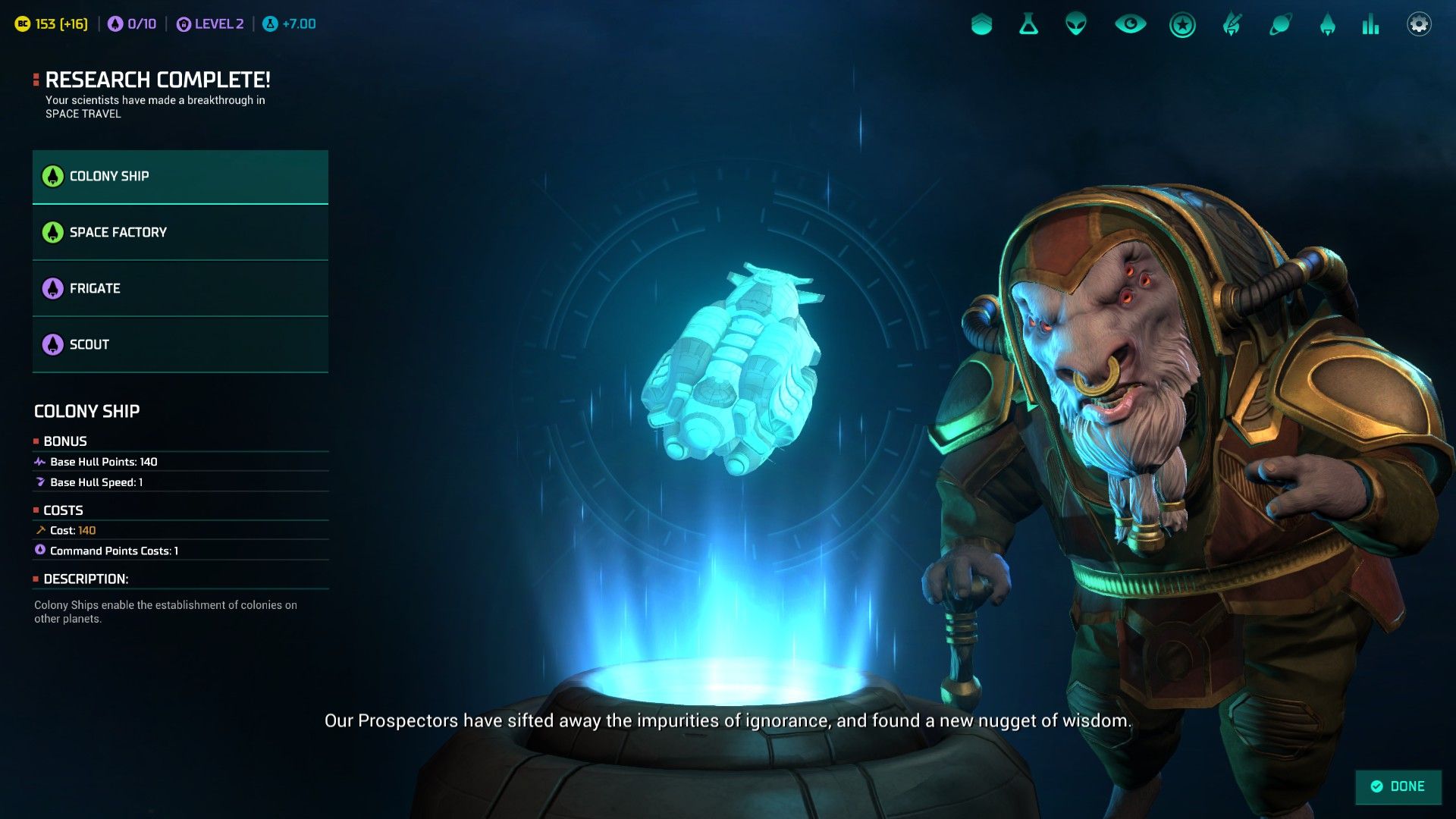 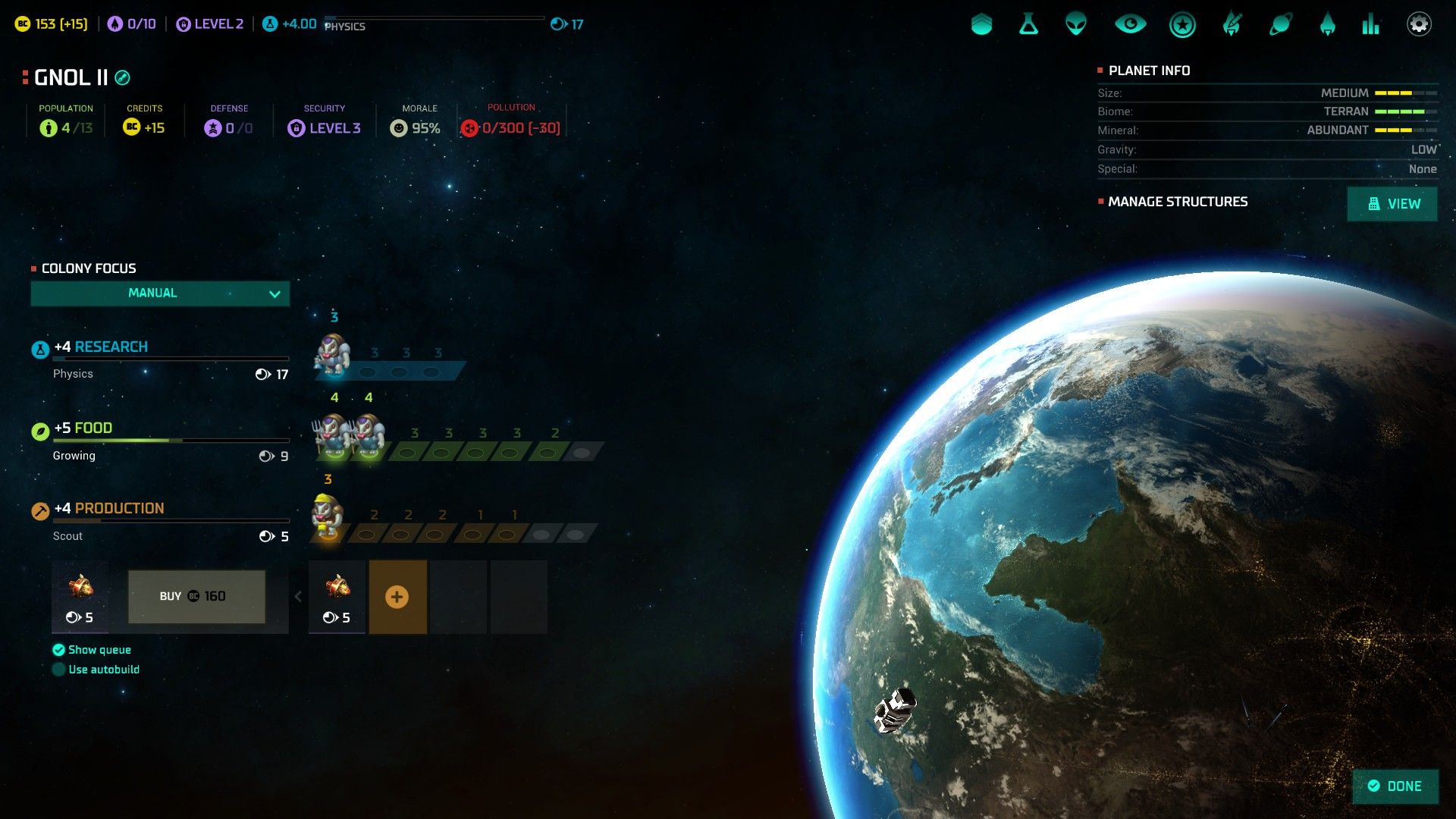 As the 1800s began, resources on Val were thrown wholeheartedly into a program intended to perfect the technology needed to take the Gnolams to the stars. By 1810, Reliant Aerospace became the first firm capable of manufacturing drive systems capable of pushing ships out into the faster-than-light state along the drive conduits between stars, while the resources needed for large-scale, long-term operation in interplanetary space had been perfected by an array of other firms. Almost immediately, a manufacturing program to assemble deep-space scout craft capable of surveying the Gnol system for easily exploitable resources, and then pushing on to discover what could be found around the stars beyond Gnol. Other manufacturers, in parallel, began work on the factory ship Creator, chartered by the Horizon Engineering Corporation in the hopes of assembling spaceborne habitats that could support the exploitation of space-based resources. 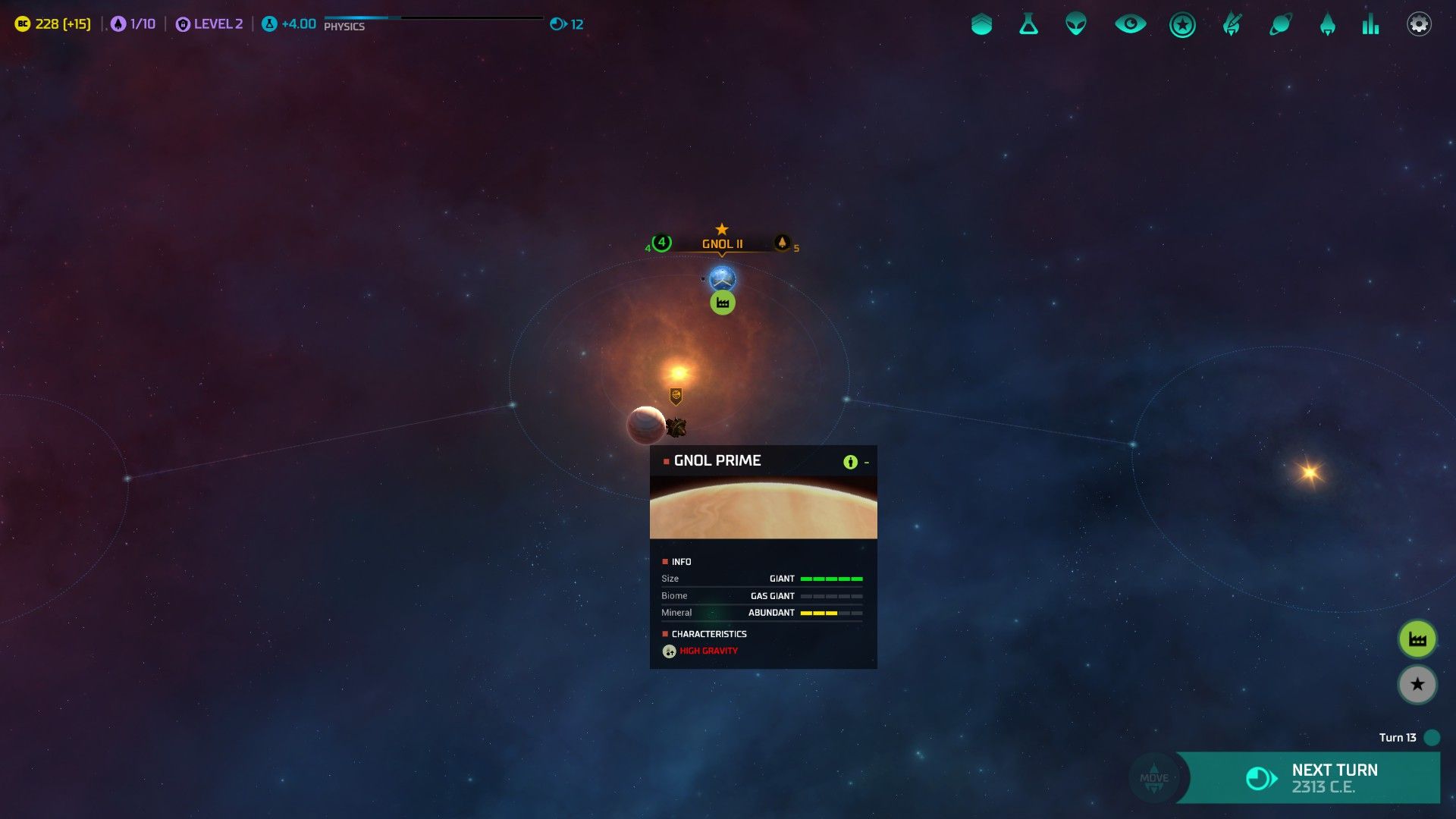 By 1816 the scout craft Prospector launched from the surface of Val, the first FTL-capable constructed by the Gnolam species- and, by early 1817, it had determined that the gas giant Evorak within Val's orbit was the most promising body in the Gnol system for exploitation. A vast wealth of hydrogen was available to be scooped from its upper atmosphere, along with trace gases, some of which were carbon-containing. Combined with the high insolation a station in Evorak orbit could expect to support abundant solar power, and the potential for refining operations to synthesise valuable hydrocarbon compounds was obvious.  During the system survey of Gnol, the Prospector had detected anomalous readings in the deep outer system of Gnol- as if getting sensor reflections from some sort of manufactured object. The Prospector was ordered out to investigate these readings, pushing deep into the outer system on sublight drives.  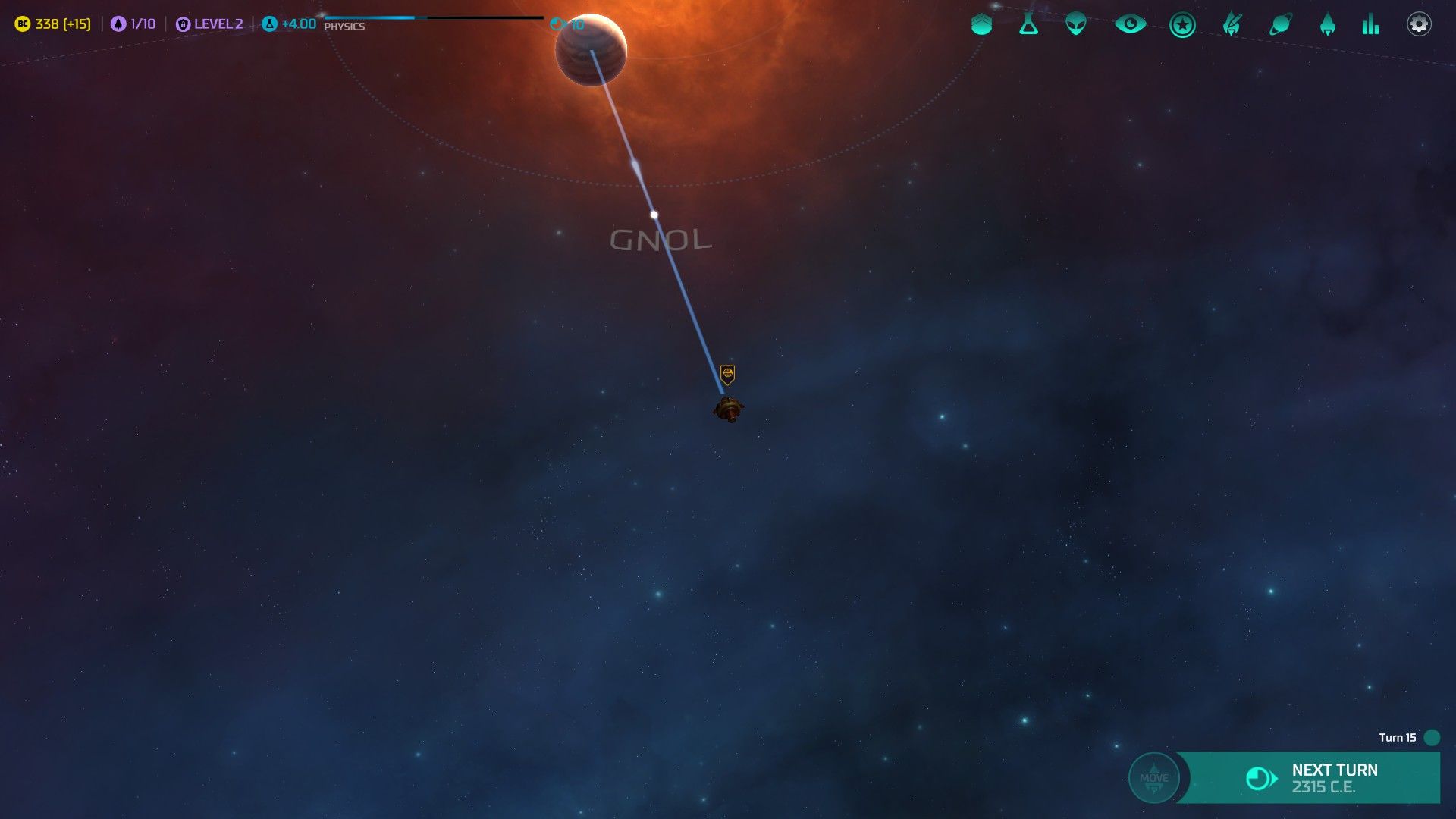 In 1819, the Prospector intercepted the source of these strange readings- a massive cargo container, battered and dust-pitted, drifting in a long, lonely orbit around Gnol. The markings on this container, although obviously some form of purposeful language, seemed unrelated to any known Valian language, and provided far too small a sample size to decipher any hint of their meaning. Within the container, which had evidently been drifting through space for many thousands of years, was a find of staggering value- a load of refined metal ingots- titanium, tungsten, iron, platinum, gold, chromium, and others, enough metal to swamp Gnol's domestic refining output for several years. The container was pushed gently towards an orbit that would allow for retrieval by tugs operating off Gnol, providing a windfall for Val's industries even as the Prospector pushed its way back closer to Gnol in preparation for a boost to one of the hyperspace conduits out of the system. 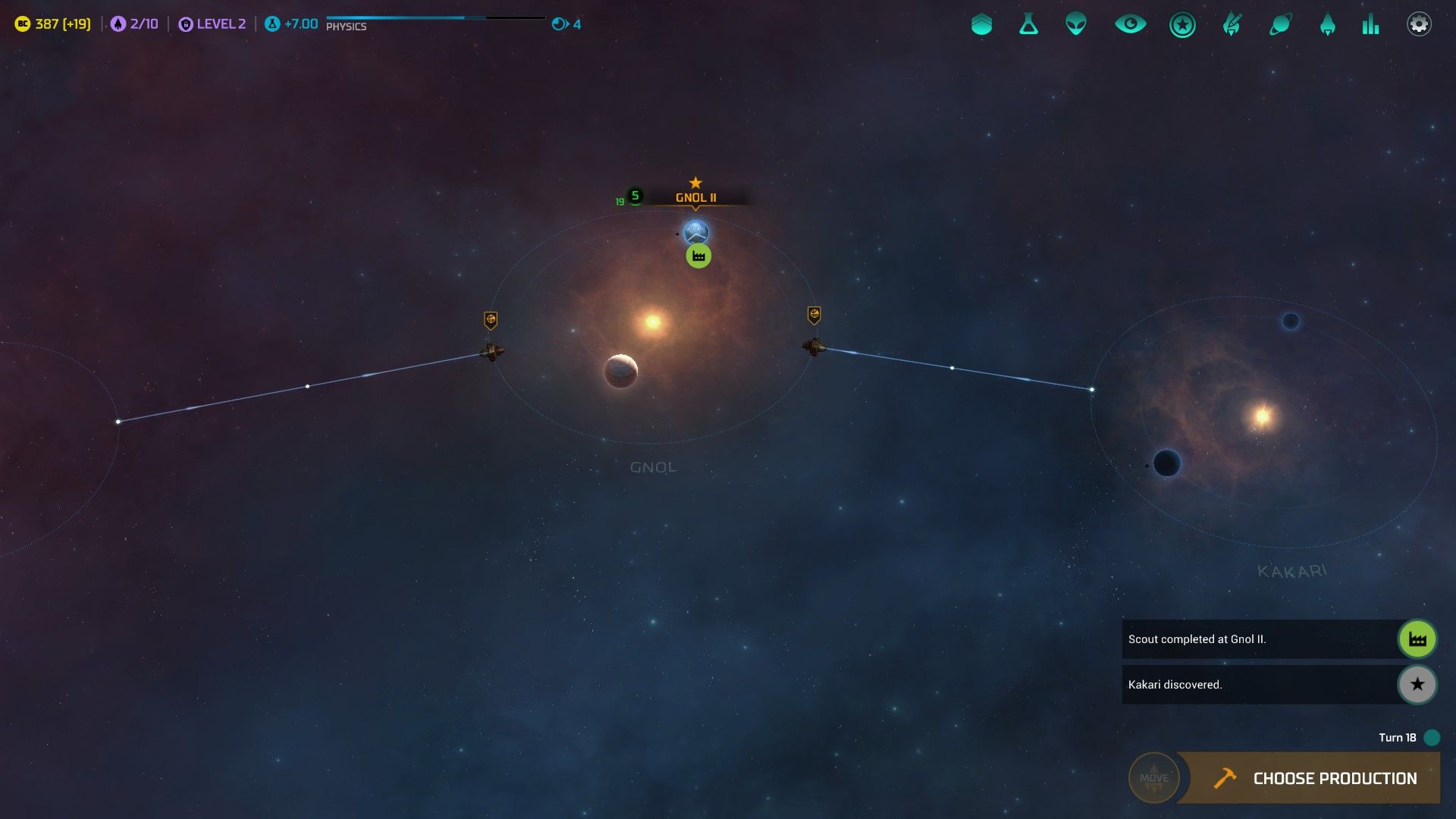 The scout vessel Endeavor launched from Val in late 1822, and, by 1823, the Prospector had reached the entry zone for the conduit driftward to another promising orange star like Gnol, while the Endeavor was in the entry zone for a conduit spinward to a cooler red star. Although it had not been planned this way, the two scouts leapt into FTL travel within two days of each other, making the first two FTL voyages of the Gnolam people nearly simultaneous. 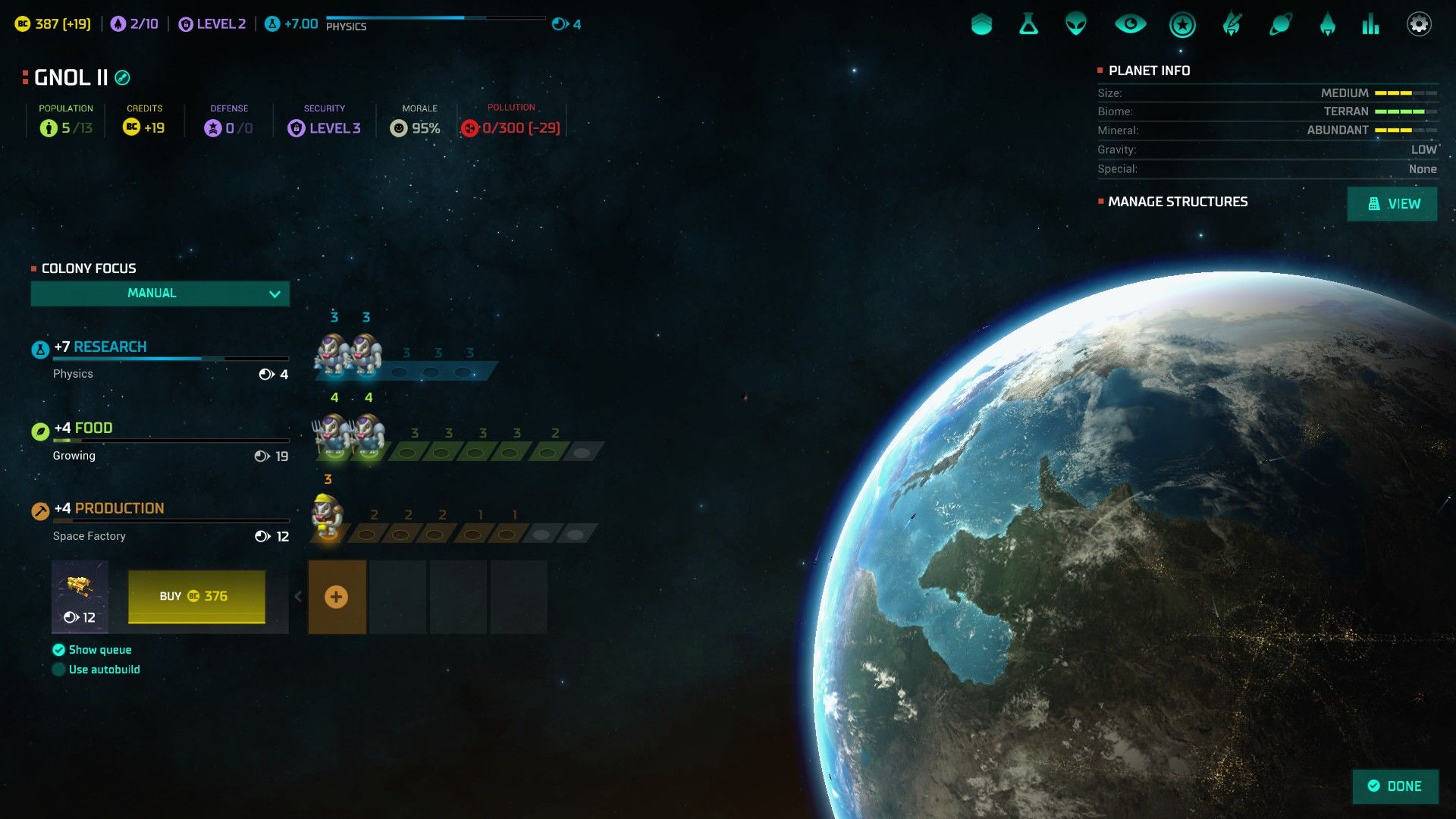 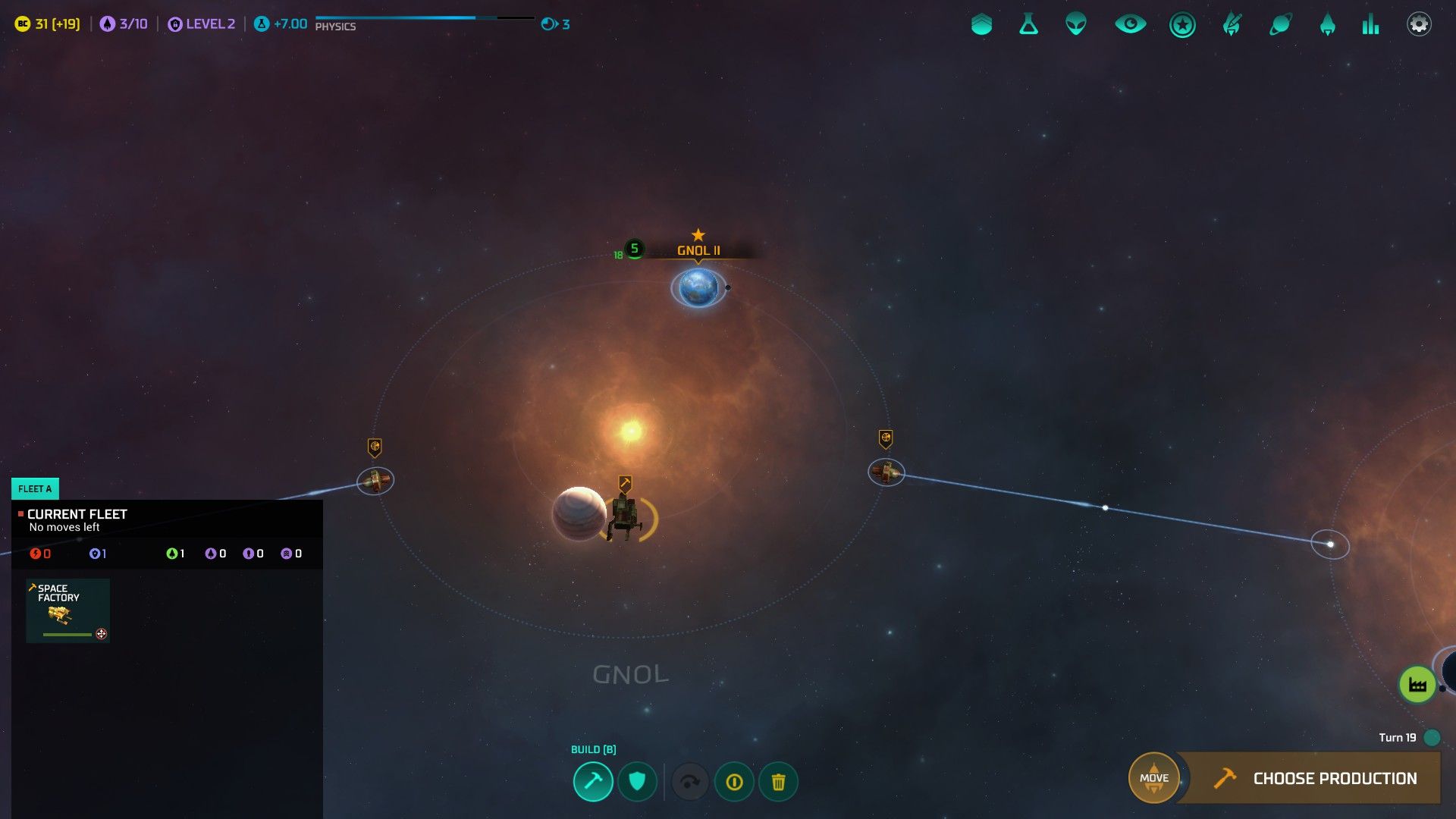 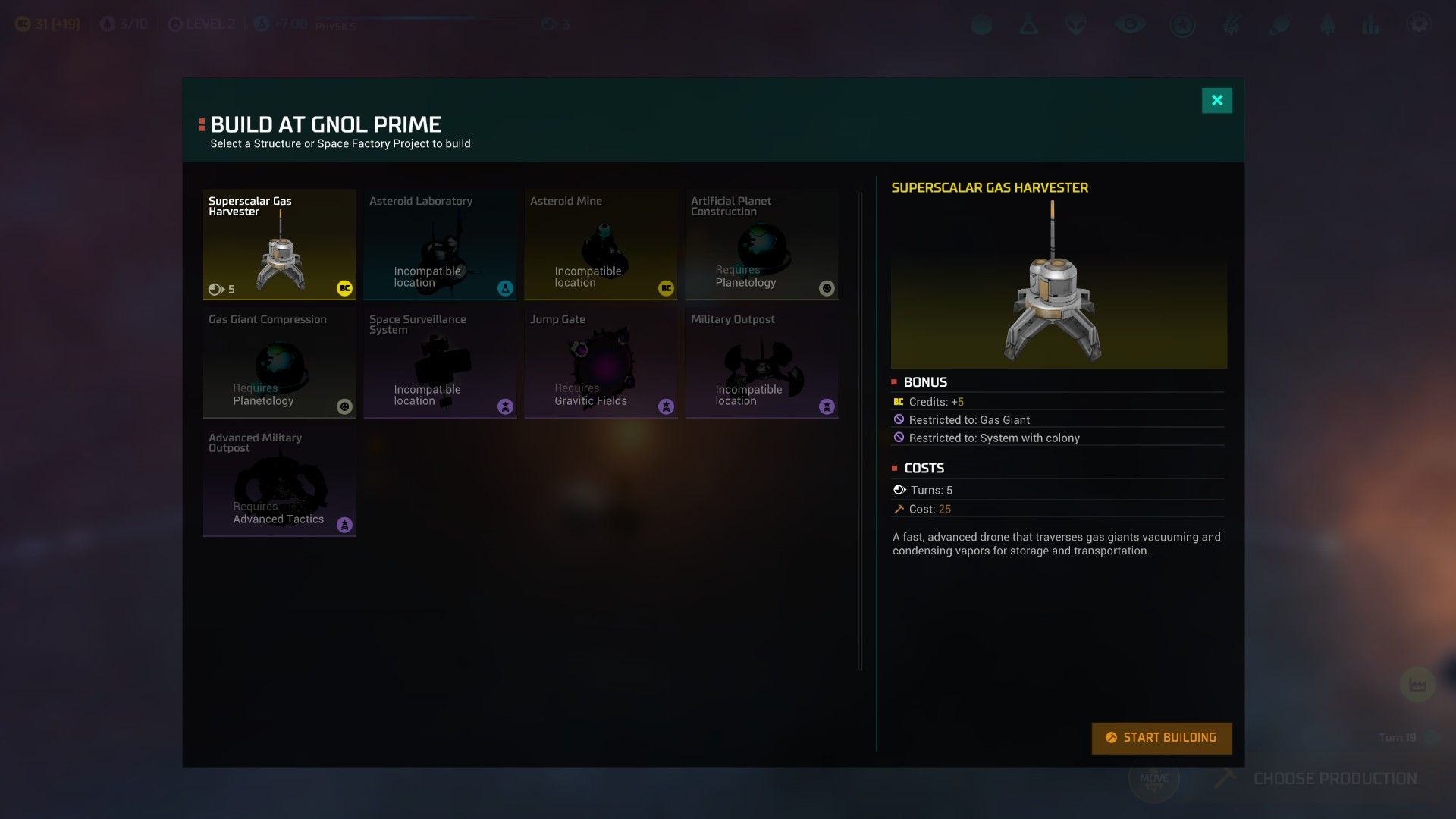 While assembly of the Prospector and Endeavor had been underway, work to assemble the Creator had been underway in other factories, pushed by a steady stream of investment capital and swallowing the vast load of refined metals recovered by the Prospector's efforts almost in its entirety, allowing the Creator to begin operations in 1824. The Creator was a gargantuan ship with a crew of thousands, equipped with all the facilities needed to manufacture deep-space habitats and infrastructure, laying the groundwork for the first permanent Gnolam presence in space. Work began on assembling the first of several refinery stations over Evorak in late 1824, tapping the wealth of this gas giant to provide an inexhaustible fountain of hydrocarbons for the use of Gnolams back on Val. We spend the majority of our accumulated treasury to complete our Space Factory in a single turn. The Universal Mercantile League and Known Space as of 1825 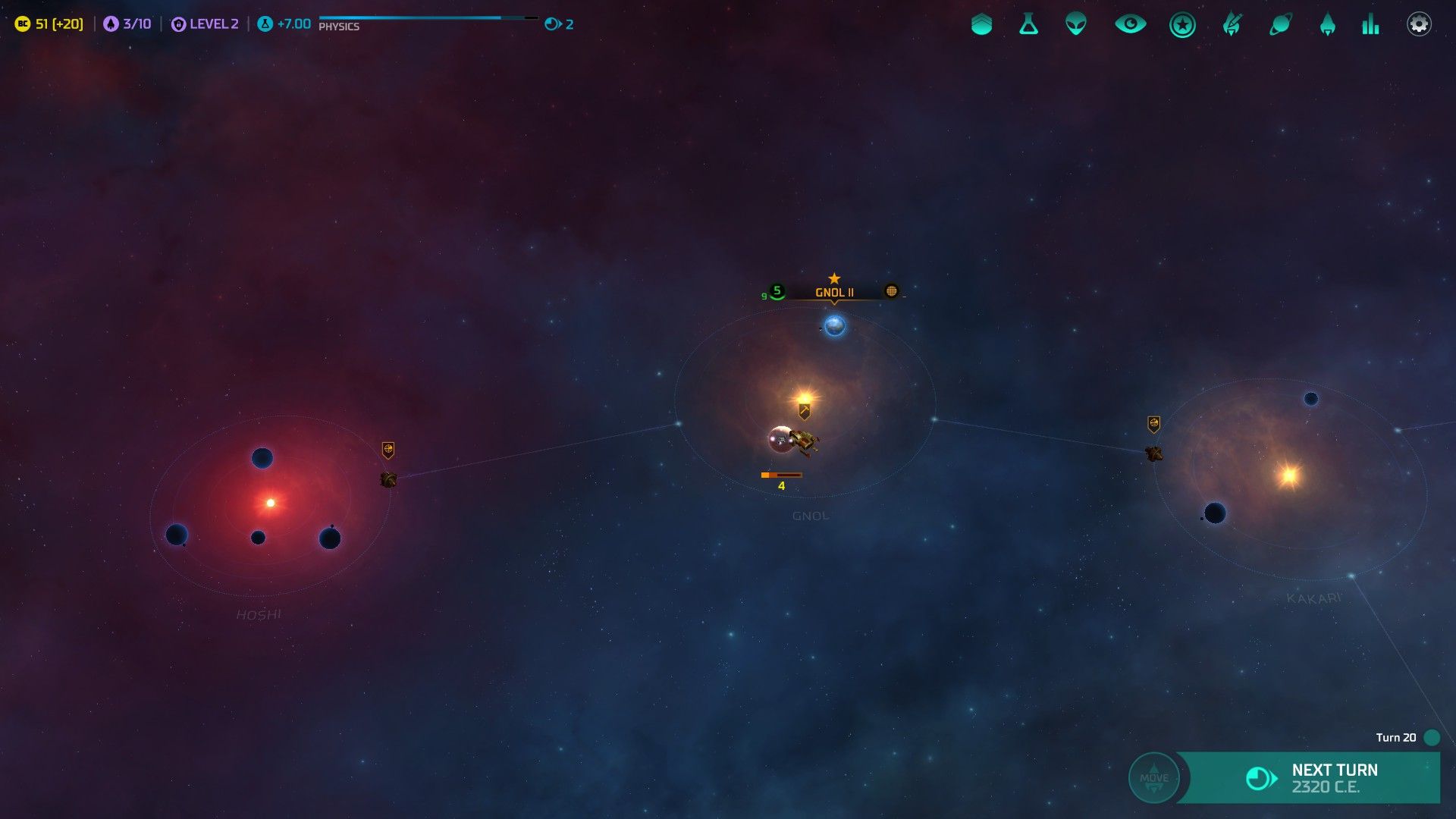 The Prospector and Endeavor have recently arrived at the two systems neighboring Gnol along the hyperspace conduit network, although systematic survey of the contents of these systems has yet to be carried out. The red star Hoshi, spinward of Gnol, appears to lack any hyperspace conduits linking it to any star but Gnol, while the orange star Kakari has two unexplored conduits, one leading driftward along the rim while another heads coreward and slightly driftward. Meanwhile, construction on refinery complexes over Evorak is continuing smoothly, with refineries expected to begin providing their output to Val by the end of 1830.  On Val, the population has exceeded five billion persons, with 100 million employed in the research sector, 150 million in the agricultural sector, and only a few million in heavy industries. Intensive agricultural exploitation has led to the cultivation of land somewhat more marginal than the prime farmland previously under cultivation, slightly reducing the efficiency of the agricultural workforce. Agriculture and industry on a planet are limited by the local resources, and, with more population placed in agriculture or industry, begins to suffer diminishing returns. The first two units of agricultural population on Val produce 4 food each, while the next three produces 3 food, and the sixth produces 2 food, with no further agricultural population permitted. The first industrial population produces 3 production, the next three 2, and the last two 1. Research, meanwhile, is bounded only by population that can be spared from agriculture and industry. 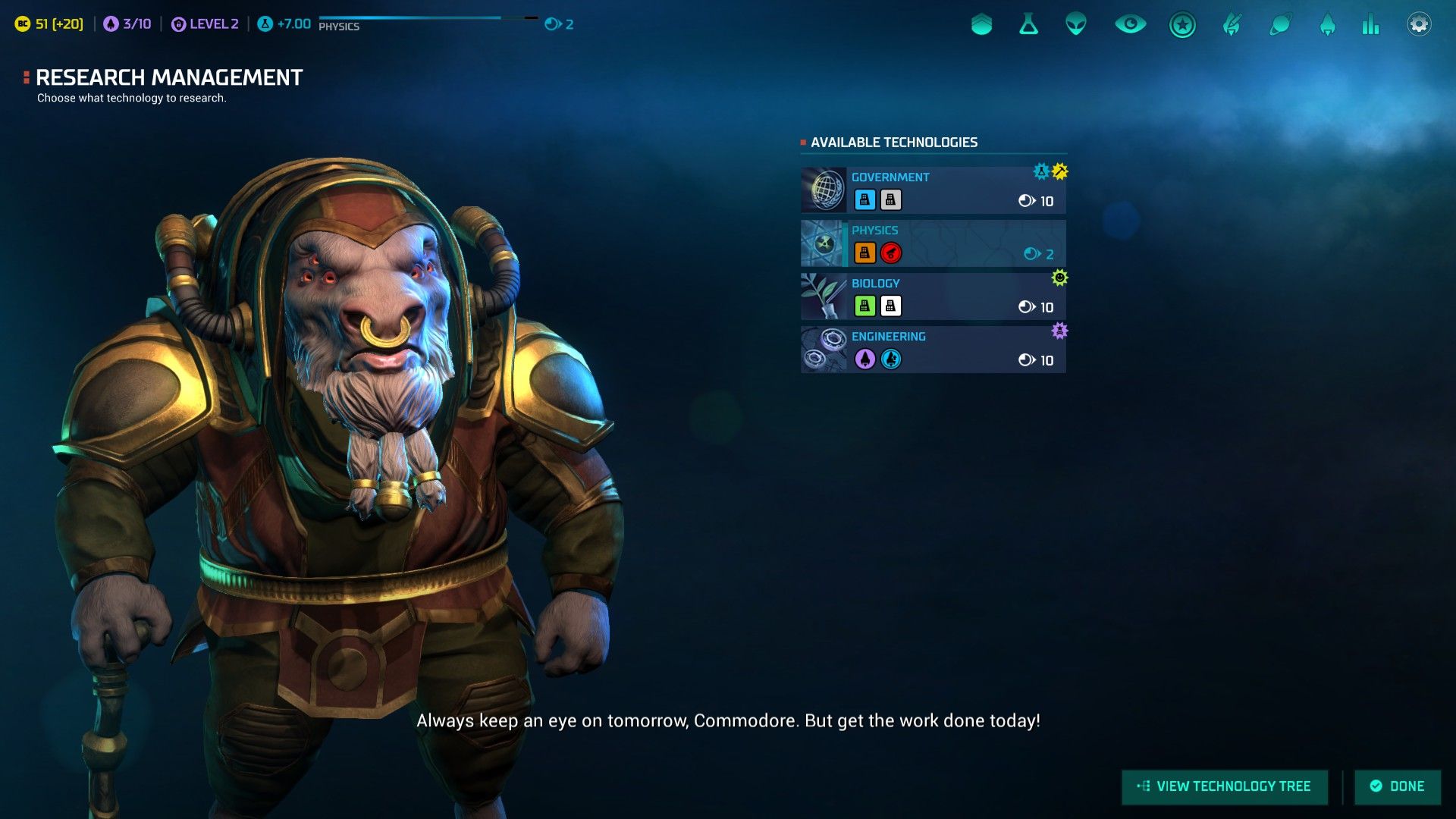 Work in basic physics is anticipated to bear fruit in improved computer processing units by 1827 or 1828, which may well allow for improved robotics in production lines and a more productive industrial sector. Research into biology and agronomy or sociology, logistics, and political science is still expected to bear great fruit in the near future. Proposals for the Universal Mercantile League Research Proposals Research into biology and agronomy is anticipated to allow a significant boost in Val's agricultural yields and food security, while research into sociology and logistics will lay the framework for more effectively integrating new colonies into the League and the development of more efficient research departments, speeding future technological projects. Work in logistics and sociology is almost a necessary condition for developing a framework for the smoothest possible colonisation of new planets that may support a Gnolam presence. Please vote between working on Biology or Government first. Once both are completed, we will immediately begin work on Deep-Space Exploration in order to gain the all-important Colony Base improvement on new colonies, which cannot be built after the fact. Industrial Investment Work on establishing improved high-technology industries will almost certainly lead to at least a modest surge in industrial employment, drawing resources from other sectors. Investment into modernising factories could ensure an even larger industrial workforce, but this is likely to impact resources available to both research and agricultural sectors. Please vote between an industrial workforce of 50 million or 100 million while we get automated factories up. Defense Appropriations The Assembly has approved commissioning the Creator to establish deep-space fortifications to control the hyperspace approach to Gnol from Kakari, given the evidence that- at least historically- Gnolams are not the only spacefaring species in the galaxy. As a hedge against further risk, debates are under way whether to approve combat-rated cruisers suitable to support deep-space fortifications and engage in counter-piracy patrols. Please vote between approving 0, 1, or 2 early combat vessels suitable to scouting, light combat, and counter-piracy duties while not working on infrastructure on Val. Time not spent on infrastructure construction or military construction will be spent getting a head start on our first colony ship. Already space has provided the opportunity for new riches for the Gnolam people, even if many of those resources have, thus far, been thrown straight back into space exploration. The long-term prospects from refineries around Evorak will certainly help improve life for all Gnolams, however, and the future seems bright. nweismuller fucked around with this message at 15:06 on May 31, 2020 |
|
|
|
Corporation Reference List Corporations canonically established thus far: Bortis Shipping and Logistics Reliant Aerospace (open) Horizon Engineering Corporation (open) News All Day Network (open, by kind permission of Theantaro) Nutris Weapons Systems, Incorporated Blue Horizon Shipping Lines Einar Transport (open) Golden Glory Logistics (open) Uncle Trorn's Foods (open) League Herald News (open) Provveh Orbital Hauling InterPlanetary Shipping Gnolstar Fountainhead Energy (open) League Consolidated Metals (open) Apocrypha Engineering Sunny Orchard (open) Dairy Gold (open) Logical Computing (open) Republican Atlantic (open, United Republic-based) Drevner Mass Drivers Rainbow Optical (open) Ston Precision Computing (open) Foundation Metallurgical (open) Stollen Innovations (open) There is room for competition in all the sectors represented by these corporations. nweismuller fucked around with this message at 14:21 on Jul 1, 2020 |
|
|
|
Ship Design Contest, 1828 The Universal Mercantile League has begun consideration of designs for armed deep-space cruisers for long-range scouting, counterpiracy, and space defense duties. A spaceframe fitted with a FTL drive system, basic armor, and the necessary life support, electronics, crew quarters, and storage to support its operations will cost a minimum of 10 trillion credits (or significantly more, if the production process is rushed) and will have 575 tons remaining for mission equipment. Power is provided by a uranium reactor, while titanium armor backed by a boron carbide layer provides effective protection against the physical stresses of FTL travel, ambient radiation, micrometeorite impacts, and possible weapons fire. SPECIAL SYSTEMS Rebuilding both sublight thrusters and FTL drive systems to take advantage of higher power draw could be possible. This would provide faster travel both in-system and between stars, and provide greater agility in combat, helping make the ship a more difficult target. Such a redesign would take 60 tons of discretionary displacement and add a minimum of 10 trillion credits to the cost of the cruiser per unit. WEAPONS SYSTEMS Current cruiser fire control systems render having more than three distinct types of weapon impractical, including different mount types for the same basic weapon technology. BOMBS Heavy unguided nuclear warheads could be effectively applied to orbit to surface bombardment, as well as being an essential tool in the suppression of the support infrastructure for piracy, although they would need to be supplemented with effective space-to-space weaponry. Nuclear bomb bay- 100 tons, 4 trillion credits MISSILES Long-range guided space to space nuclear missiles, although they would have difficulty making a contact intercept at the ranges and speeds of space to space combat, could nonetheless deal severe damage by close-range detonation by a target. Guided missiles will almost certainly be able to make an intercept sufficient to detonate in range unless shot down, but are likely to be highly vulnerable to point defense fire. Nuclear missile launch tube- 100 tons, 4 trillion credits, 20 damage, launch cooldown 18s, range 60 CANNONS Direct-fire cannon, although dropping off in damage over range and subject to firing inaccuracy, could nonetheless prove an effective alternative to guided missiles in an offensive role. Recent breakthroughs in particle physics have allowed for neutron burst cannon, which are likely to be significantly more effective as primary weapons systems than simple lasers, although neutron burst cannon resist the effective miniaturisation to serve in a point defense role. Laser point defense mounts may provide some level of effective defense against enemy space-to-space missiles- heavier mounts lack the effective tracking speed to serve effectively in this role. Neutron burst cannon, limited-traversal front or rear mount- 80 tons, 5 trillion credits, 9 optimal damage, firing cooldown 7s, range 50. Neutron burst cannon, paired broadside mounts- 100 tons, 7 trillion credits, 9 optimal damage, firing cooldown 7s, range 50 Neutron burst cannon, full-rotation dorsal or ventral turret mount- 120 tons, 10 trillion credits, 9 optimal damage, firing cooldown 7s, range 50 Laser cannon, limited-traversal front or rear mount- 60 tons, 2 trillion credits, 5 optimal damage (anticipated 3.8 damage against titanium armor due to lack of penetration), firing cooldown 6s, range 50 Laser cannon, paired broadside mounts- 75 tons, 3 trillion credits, 5 optimal damage (anticipated 3.8 damage against titanium armor due to lack of penetration), firing cooldown 6s, range 50 Laser cannon, full-rotation dorsal or ventral turret mount- 90 tons, 4 trillion credits, 5 optimal damage (anticipated 3.8 damage against titanium armor due to lack of penetration), firing cooldown 6s, range 50 Laser cannon, point defense array, full globe coverage- 20.4 tons, 1 trillion credits, 2.5 optimal damage (anticipated 1.9 damage against titanium armor due to lack of penetration), firing cooldown 4.5s, range 10, +25% accuracy, may effectively engage missiles The UML Navy is currently accepting submissions for deep-space cruisers intended to serve in a counter-piracy role, with secondary scouting and space superiority missions. At least one bomb bay and at least one space-to-space weapon mount is considered a design requirement. Feel free to submit design proposals to the contest. nweismuller fucked around with this message at 15:07 on Jun 1, 2020 |
|
|
|
MechaCrash posted:For the ship, all I've really got is "give it a bomb, fill the rest with front mounted neutron cannons, any space left over should go to PD lasers." With your permission, MechaCrash, I give you this proposal: 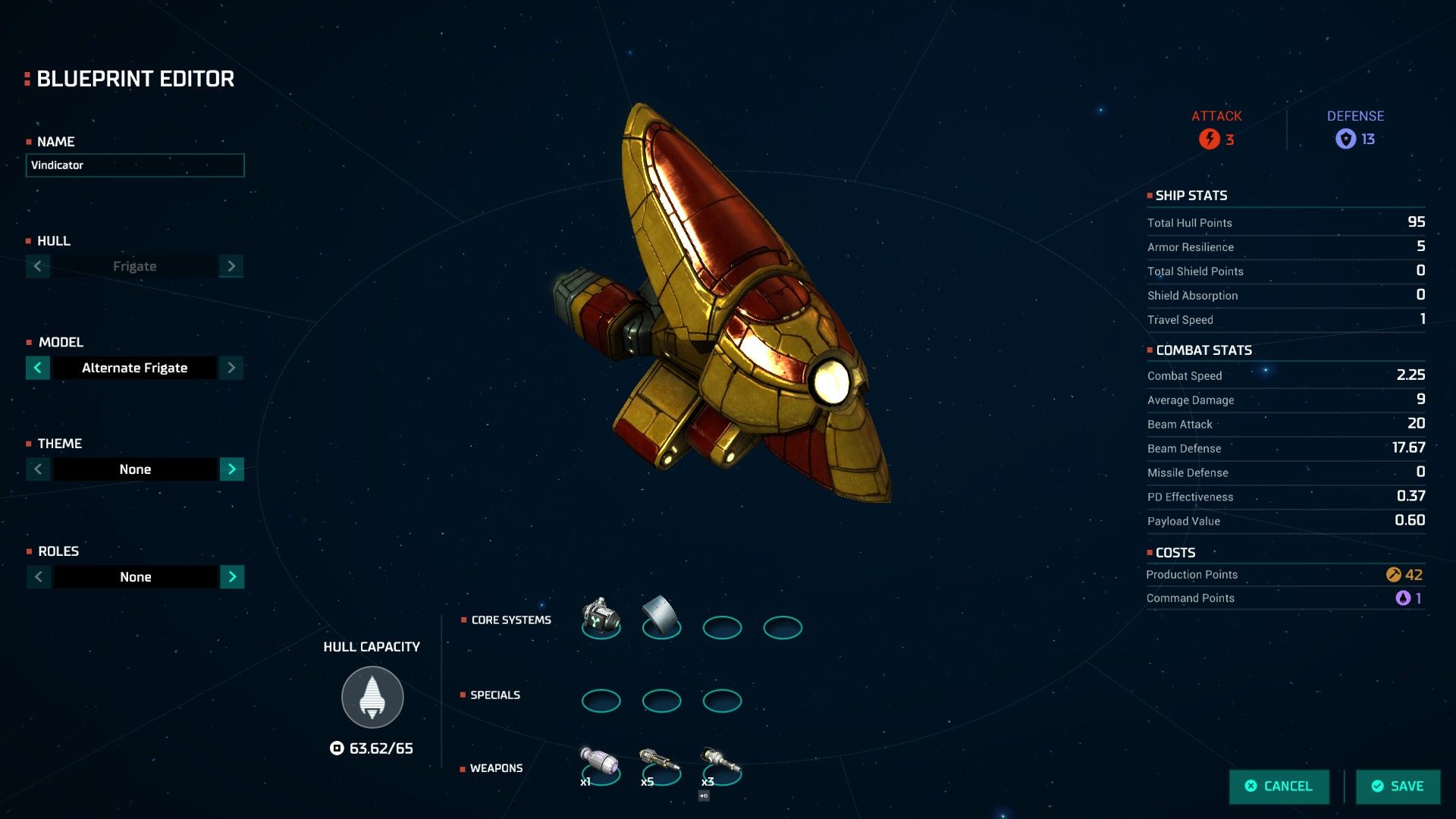 The Reliant Aerospace 'Vindicator'. Primary armaments are a single nuclear bomb bay and a cluster of five forward-mounted neutron burst cannon, defended by three point-defense laser arrays. Cost totals to 42 trillion credits, under ideal manufacturing conditions. Spaceframe, drive system, and flight electronics manufactured by Reliant Aerospace. Weapons, life-support, armor material, and reactor are sourced from Reliant's corporate partners.
|
|
|
|
Bortis Shipping and Logistics has already invested in several in-system transports, helping carry supplies to the construction sites over Evorak, and anticipated to be able to help service trade between the permanent stations over Evorak and Val. The R&D department of Bortis Shipping and Logistics continues to work on addressing the challenges of interplanetary logistics, while Nian Bortis, in his role as Commodore of the UML, has advocated for taking steps to ensure the military readiness of the UML. Government, 50 million industrial workers, 1 combat vessel
|
|
|
|
I'm going to need a tiebreaker between Government and Biology before I play through the next update, and would also welcome any further submissions to the first naval design contest for the Navy to choose between.
|
|
|
|
Appreciated, Slaan. Government, 50 million, 1 ship, Vindicator, then.
|
|
|
|
Extragnolar Survey Report, 1850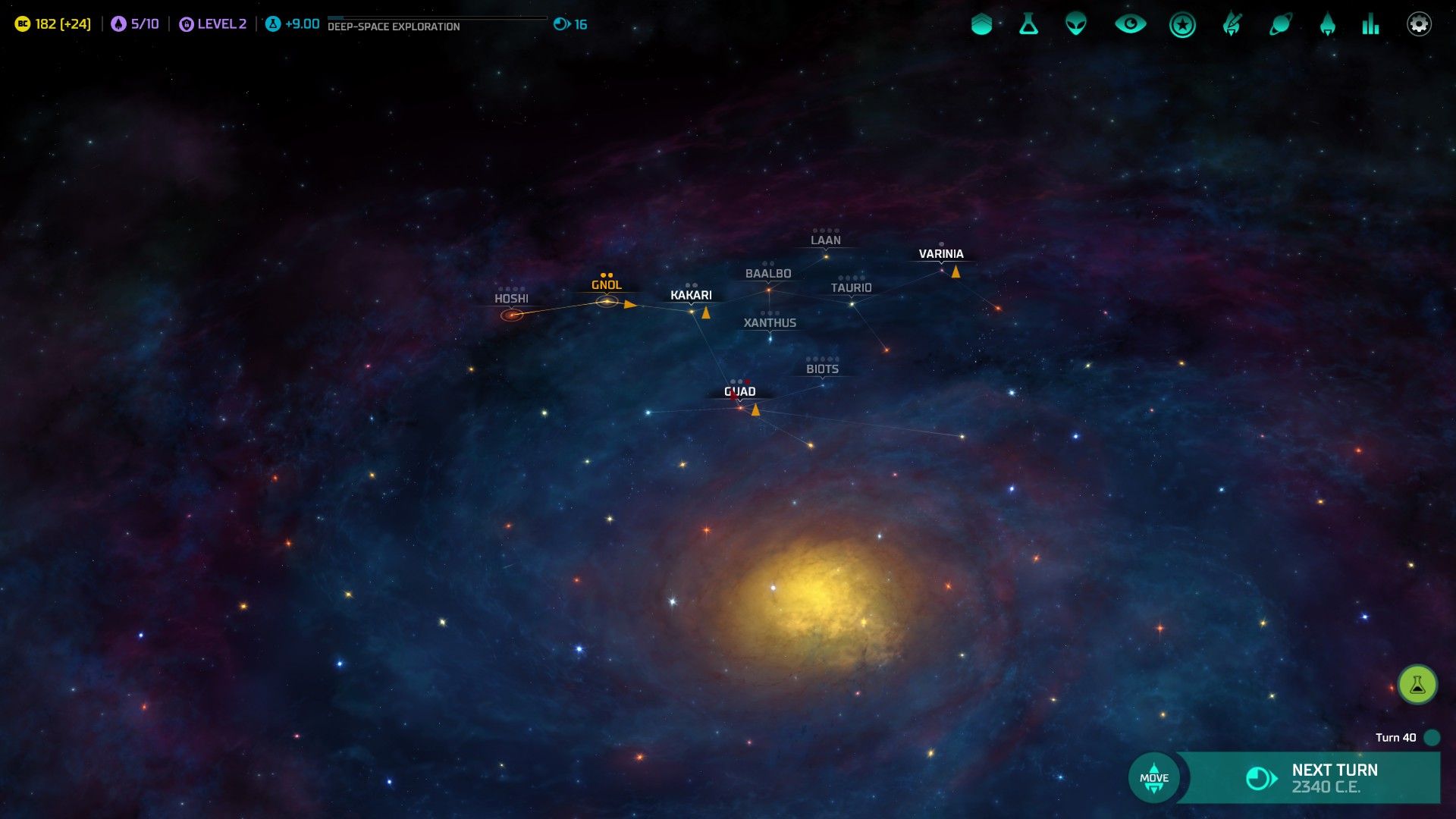 Over the past 25 years, the Prospector and Endeavor have charted much of the nearby hyperspace conduit network, and have developed full reports on the resources and colonisation viability of six extragnolar star systems. Hoshi 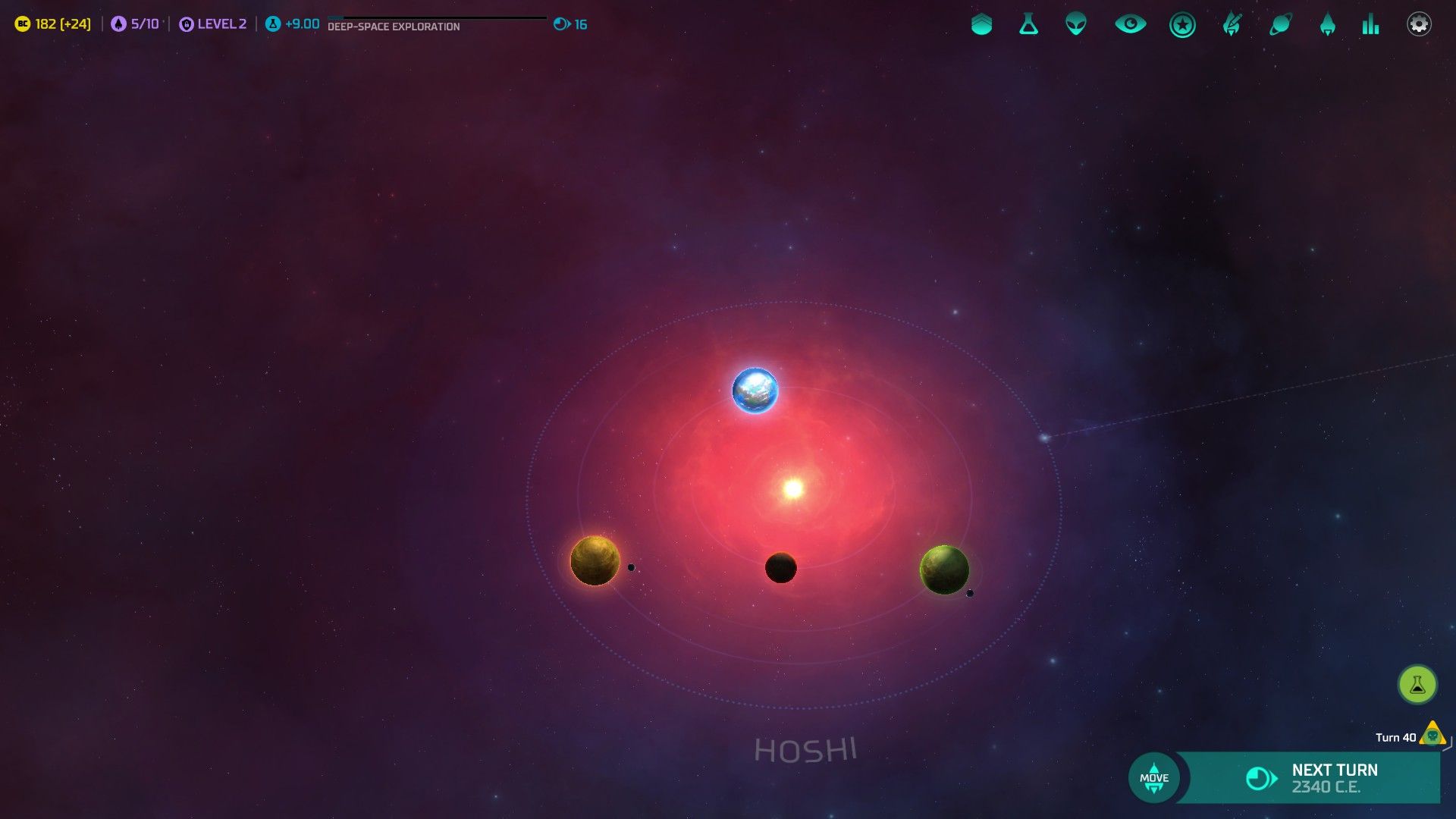 The only approach to the red star Hoshi is through the Gnol system; even without active presence in the system, it seems likely that the UML effectively controls the system. Four bodies show even theoretical promise for colonisation around Hoshi. Hoshi Prime, although rich in gold and other precious metals, has been formed with scarce deposits of other critical industrial metals, and further has an extremely unstable surface with a murderously high surface temperature. Constant vulcanism, tectonic activity, and molten flows render it an almost impossible challenge for colonisation. Hoshi II is in many respects a Val-like world, with a complex and fertile biosphere, abundant surface water, and promising mineral and metal content. The only drawback of Hoshi II is its uncomfortably high gravity- although it seems Gnolam colonists shall be forced to deal with high-gravity environments into the future. Hoshi III has a choking ammonia atmosphere and an unpleasantly high gravity, but supports a simple biosphere using ammonia as a solvent with abundant ground cover. Preliminary analysis of native life of Hoshi III is that, with heavy processing, some usable nutrients could be derived from it, although it seems likely to be supremely unpalatable. Finally, Hoshi IV lacks any atmosphere and is constantly bombarded by stellar radiation. Despite being relatively poor in most necessary industrial resources, abundant deposits of a quartz variant with unique semiconducting properties could be of some industrial value there, at least if a local colony can endure the radiated conditions and high gravity. Hoshi Prime is tiny, volcanic, poor (reducing output of industrial workers), and low-G, with gold (+2 BC/turn for free once colonised) as a planetary special and a maximum population of 3 billion. Hoshi II is medium, terran, abundant, and normal-G- and as low-G creatures, we suffer some penalties on normal-G worlds. Otherwise a very solid planet with a maximum popultion of 13 billion, just like Val. Hoshi III is medium, toxic, abundant, and normal-G, with red fungus (+2 food/turn) as a planetary special and a maximum population of 5 billion. Hoshi IV is medium, radiated, poor, has dark quartz (+2 production/turn) as a planetary special, and can sustain up to 5 billion colonists. Volcanic, toxic, and radiated worlds cannot support any agricultural population at all, and must rely entirely on planetary specials and structures to feed and grow their population. Kakari  The orange star Kakari controls all access from Gnol into the wider hyperspace conduit network, and contains two worlds with notable promise. Kakari Prime is a Val-like garden planet of similar size, and further supports extensive gold and platinum veins that could easily and profitably be exploited very soon after colonisation. Its only drawback, of course, is high gravity. Kakari II is a planet largely covered in permanent ice sheets, but supports a nitrogen-oxygen atmosphere and a rudimentary local biosphere using water as a solvent. Although it is extremely small and suffers under bleak conditions, its local gravity is comfortable, and agriculture here should be viable. The Creator has been establishing an early warning listening station at Kakari with a minimal crew. Kakari Prime is medium, terran, abundant, and normal-G, with gold (+2 BC) as a planetary special and a maximum population of 13 billion. Kakari II is tiny, tundra, abundant, and low-G, with a maxmum population of 5 billion. Guad  Guad, coreward of Kakari, supports two rather unexciting worlds that could hypothetically be colonised, and a resource-rich asteroid belt. Although five hyperspace conduits have been charted leading out of the Guad system, two are extraordinarily unstable and are not believed to be navigable. Guad Prime suffers from extremely high temperatures and an unstable surface, but some deposits of 'dark quartz' like those on Hoshi IV could be of industrial value, if a succesful colony could be founded there. At least the gravity is tolerable. Guad II is a lifeless world with a thin, inert atmosphere that protects it from the worst stellar radiation, but is extraordinarily-metal poor. Some limited agriculture could be supported on Guad II, but this would be barely viable. Beyond both these worlds is the asteroid belt, which could be usefully exploited with the support of a planetary colony, and which currently hosts a crude industrial base for a rag-tag collection of nomads and criminals self-exiled from League society. Guad Prime is small, volcanic, poor, and low-G, with dark quartz (+2 production) as a planetary special and a maximum population of 4. Guad II is small, barren, ultra-poor, and low-G. As an ultra-poor world, industrial production on Guad II shall be extremely slow. Guad II can support up to two units of agricultural population of a maximum population of 6, but each would only produce enough food to feed themselves. Baalbo 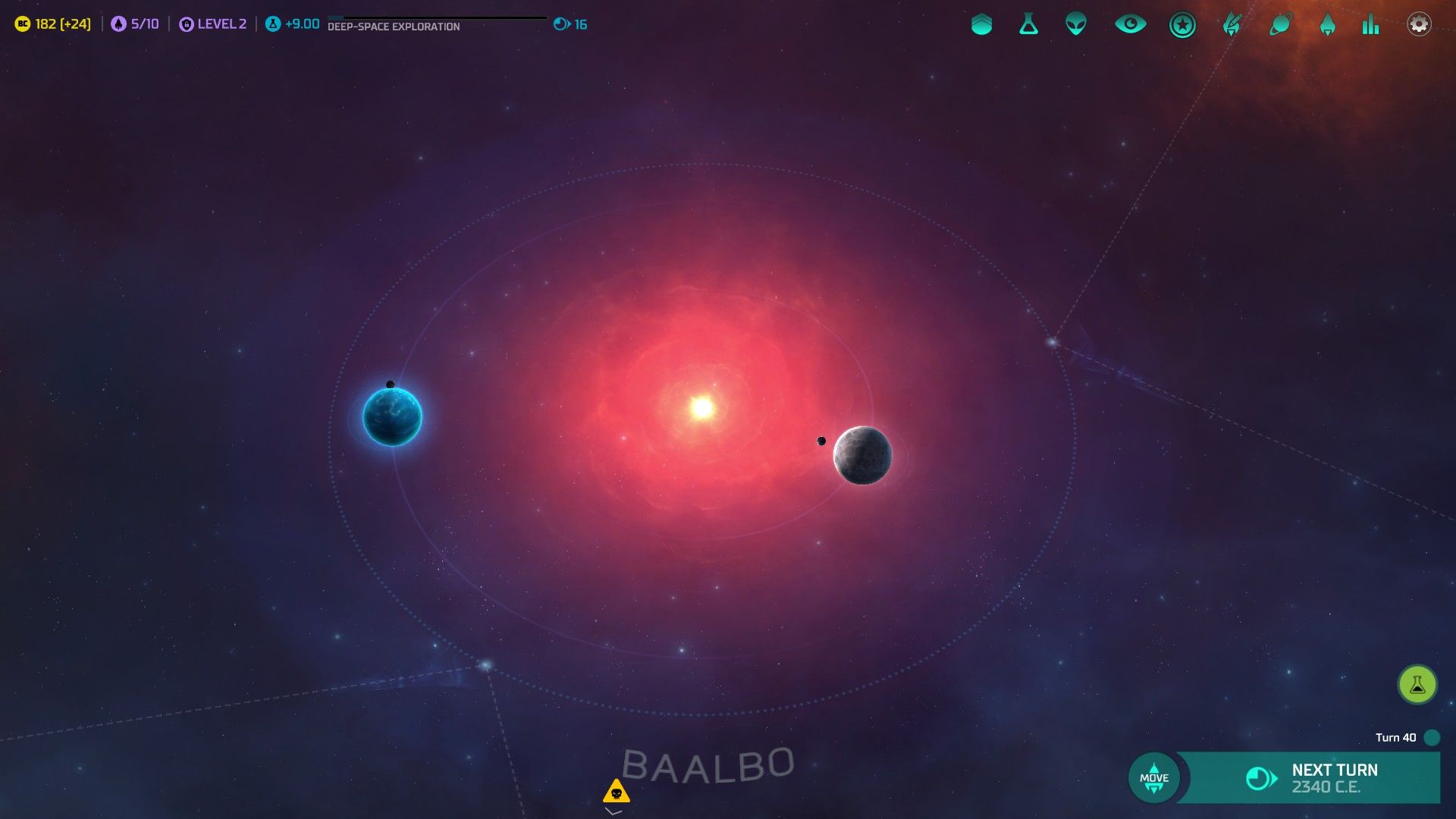 Baalbo is a red star driftward of Kakari, supporting two reasonably promising planets. Baalbo Prime is a lifeless Val-sized world with an inert atmosphere, reasonable mineral and metals resources, and abundant easily-accessible deposits of platinum and palladium. Baalbo II is a life-abundant garden world the same size as Val, but suffers from a somewhat low metal content and limited land surface area- somewhat over 90% of the planet is covered by water. Baalbo Prime is medium, barren, abundant, and normal-G, with gold (+2 BC) as a planetary special and a maximum population of 8 billion. Baalbo II is medium, ocean, poor, and normal-G, with a maximum population of 11 billion and similar agricultural viability to terran worlds. Taurio 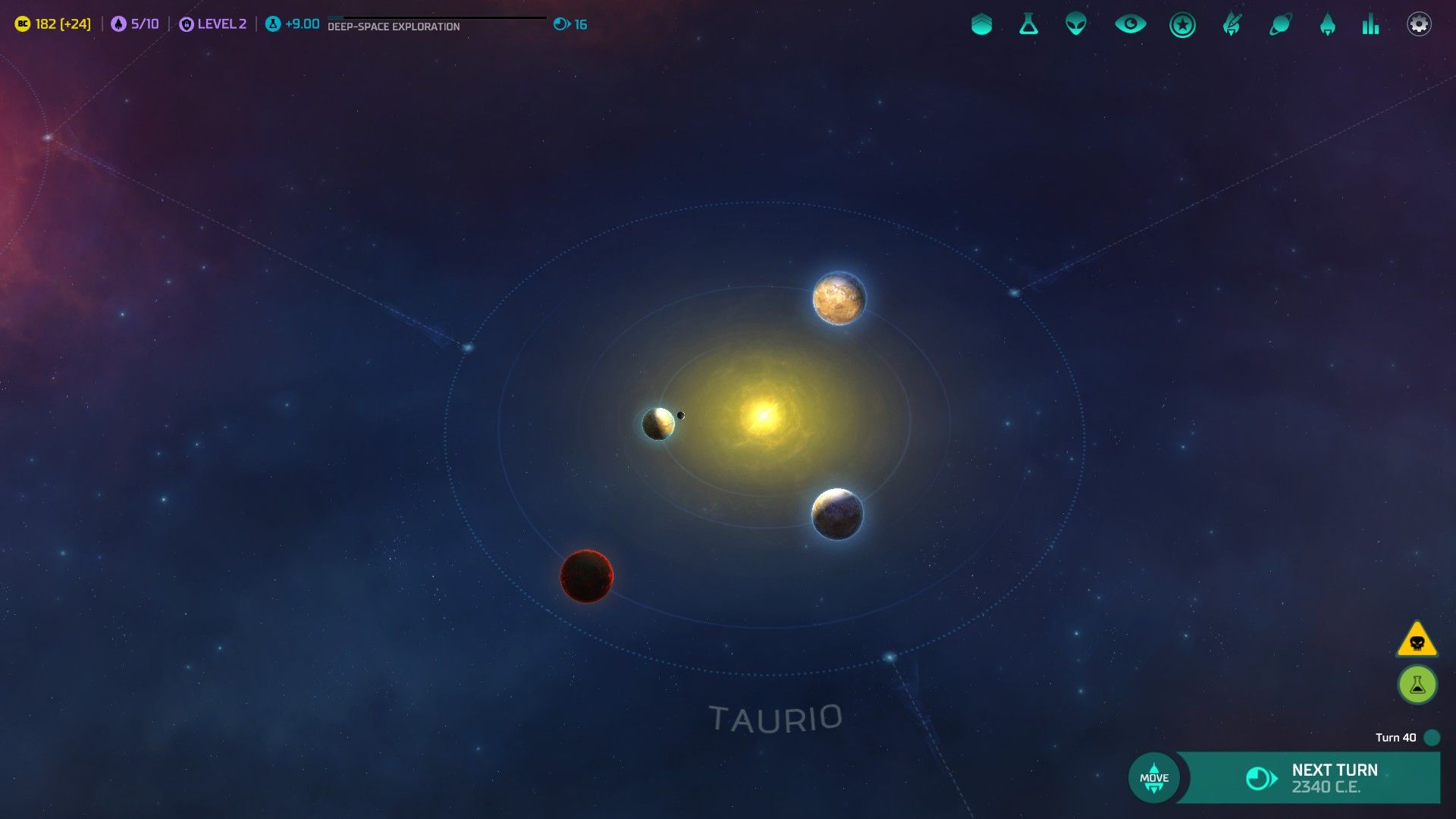 All four potentially-colonisable worlds of the Taurio system have rich and easily-accessible deposits of precious metals and gem-grade stones, although they all suffer from notable drawbacks of one sort or another as potential homes for Gnolam people. Taurio Prime is a marginal garden world, with small, land-locked oceans surrounded by limited rainy, fertile terrain and vast inland deserts. Although extremely small, it is extraordinarily rich in heavy metals and actually has an uncomfortably high gravity for Gnolams. This could, potentially, support remarkably productive industry. Taurio II is a Val-sized world with a technically breathable atmosphere and a rudimentary biosphere, held back by the extreme scarcity of liquid water on its surface. Other than its precious metals content, it has relatively few valuable resources. Taurio III is a colder life-bearing world that, like Taurio II, suffers from extreme aridity. The natural crystal formations of Taurio III are remarkable for their beauty, and the planet's large size means it may potentially support an equally large population. Taurio IV, other than its native precious metals deposits, lacks almost any useful resources, and further suffers from extreme vulcanism and a corrosive atmosphere. Taurio Prime is tiny, arid, rich (which boosts industrial population output), and normal-G, with gold (+2 BC) as a planetary special and a maximum population of 6 billion. Arid planets, as near-terran worlds, can support reasonably productive agriculture to sustain their populations, more efficient than the agriculture on tundra or desert worlds (which likewise are more efficient than barren worlds for agriculture). Taurio II is medium, desert, poor, and normal-G, with gold (+2 BC) as a planetary special and a maximum population of 9 billion. Taurio III is large, desert, poor, and normal-G, with gems (+2 BC) as a planetary special and a maximum population of 12 billion. Taurio IV is medium, volcanic, ultra-poor, and low-G, with gold (+2 BC) as a planetary special and a maximum population of 5 billion. Varinia 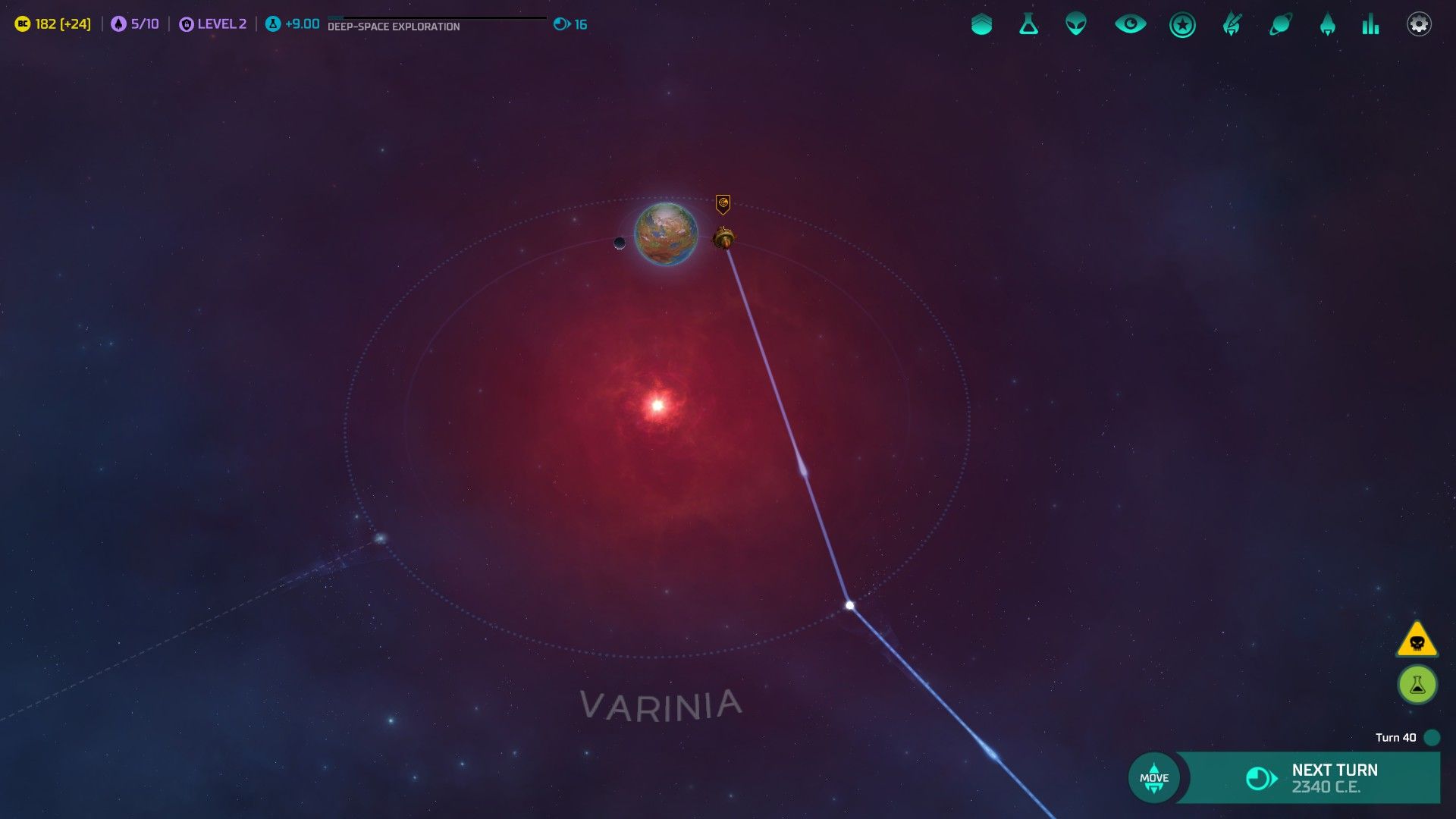 Varinia, even further driftward than Taurio, has only a single potentially-colonisable body, although this planet is significantly larger than any other colonisable planet thus far encountered. Varinia Prime is a dry garden world similar to Taurio Prime, supporting a sophisticated and abundant biosphere around its small seas. Although it is relatively poor in heavy metals and suffers an uncomfortably high gravitational pull, the friendly environment and vast habitable area means it could potentially support vast populations. Varinia Prime is huge, arid, poor, and normal-G, with a maximum population of 16 billion. nweismuller fucked around with this message at 16:23 on Jun 12, 2020 |
|
|
|
MechaCrash posted:
It is not.
|
|
|
|
Cat Mattress posted:<interesting discussion on planet mechanics snipped> All this said, agriculture is also a factor, and the normal-G terrans and oceans are agriculturally-productive enough and can support large enough populations that I think they may also be interesting colony sites. As far as strategic positions go, Guad actually has a good position that we'll want to secure, eventually... but terrible planets. nweismuller fucked around with this message at 21:03 on Jun 1, 2020 |
|
|
|
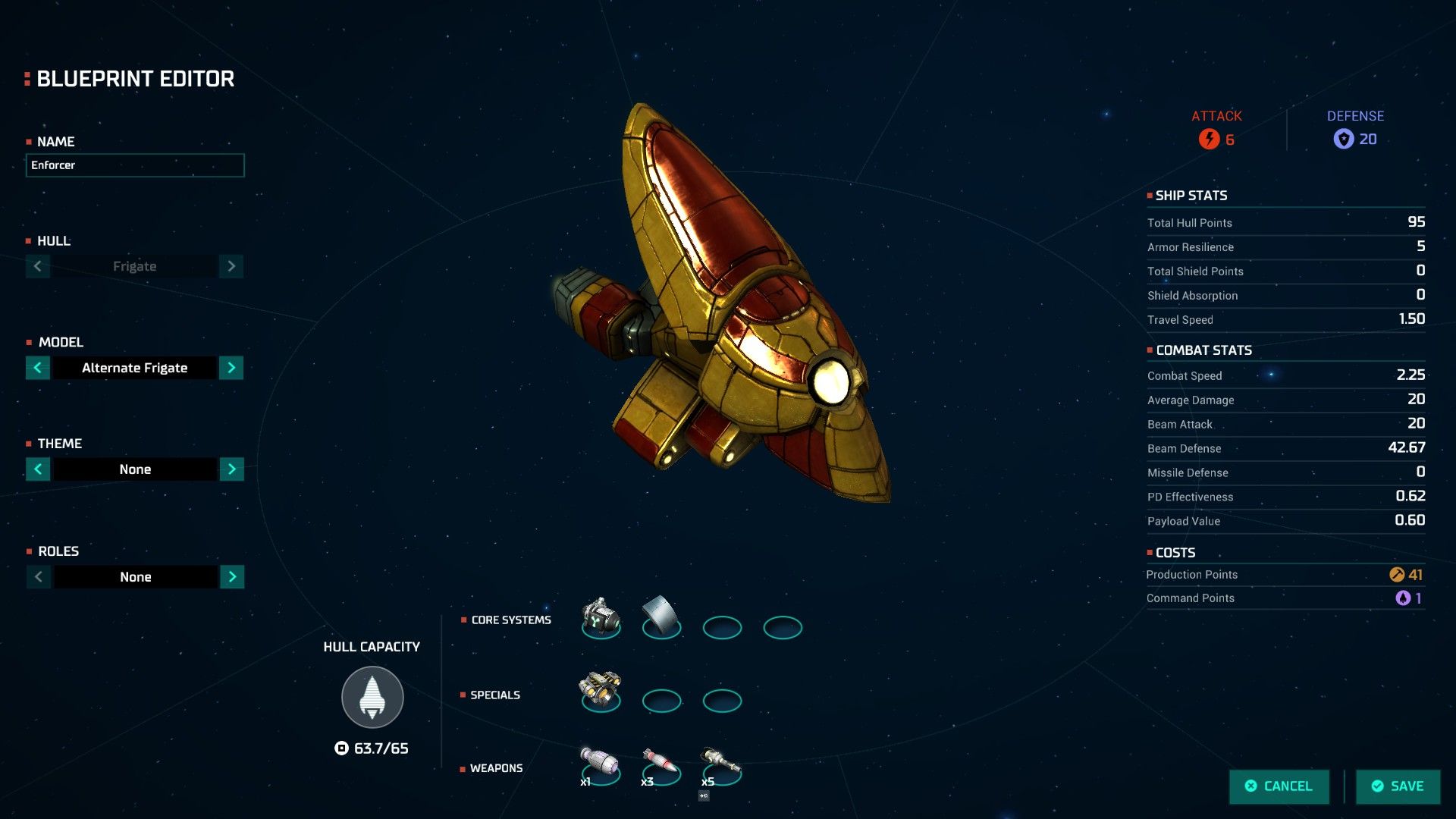 The eventual result of the feedback to Reliant's chief project engineer was the 'Enforcer' counter-piracy cruiser proposal, which exchanged cannon armament for three nuclear missile tubes and a higher-performance drive. With an optimal manufacture cost of 41 trillion, it would even save slightly on procurement costs per unit, if it were approved as a standard. nweismuller fucked around with this message at 09:44 on Jun 2, 2020 |
|
|
|
Here There Be Monsters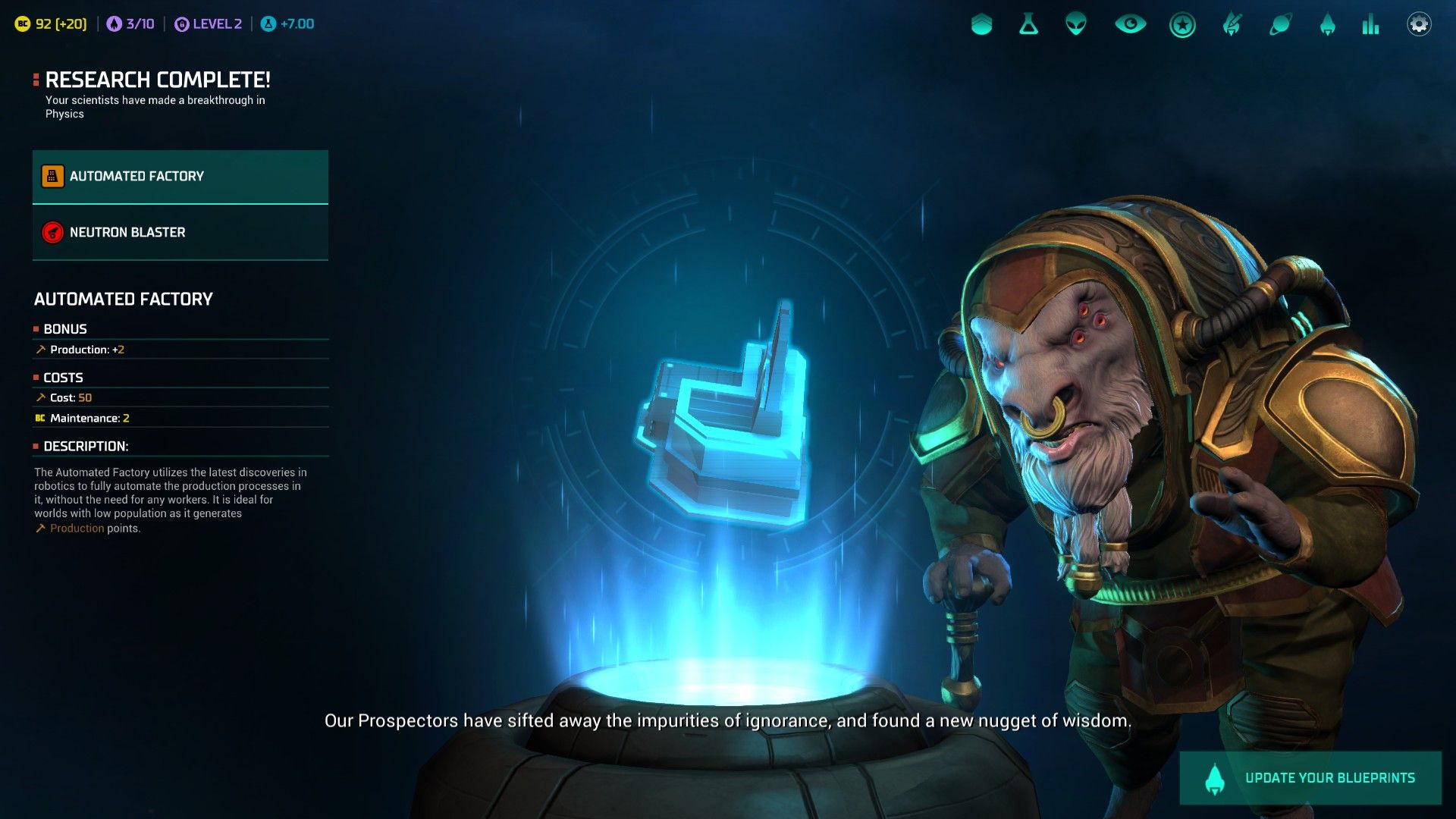  By 1827, Gnolam studies into particle physics and electronics had allowed for the first viable testbeds of neutron burst cannon- space-based weapons which released a burst of hard radiation at a target. Although the radiation shielding provided by boron carbide layers in ship armor greatly mitigated the immediate risk such a weapon would have to ship crew, nonetheless the mechanical effects of this radiation upon armor materials could cause embrittlement and catastrophic failure. New, more sophisticated factory robotics taking advantage of improved computing also slowly began to be integrated into Val's industry, taking advantage of the forward march of knowledge. With trials of new space-based weaponry complete, the Universal Mercantile League Navy announced a design competition to develop the first Gnolam warship design to take on counterpiracy duties in space. Ultimately, the only firm to submit a viable proposal was Reliant Aerospace, which in 1828 submitted a design built around a heavy forward neutron cannon armament and a nuclear bomb bay to demolish pirate infrastructure, were it to be found- the Vindicator-class cruiser. The slow work to begin construction of the first, eponymous member of the Vindicator class began, although it would not reach completion for many years, with the UML unwilling to knock loose the funding to concentrate efforts on establishing a space navy in a short timeframe. 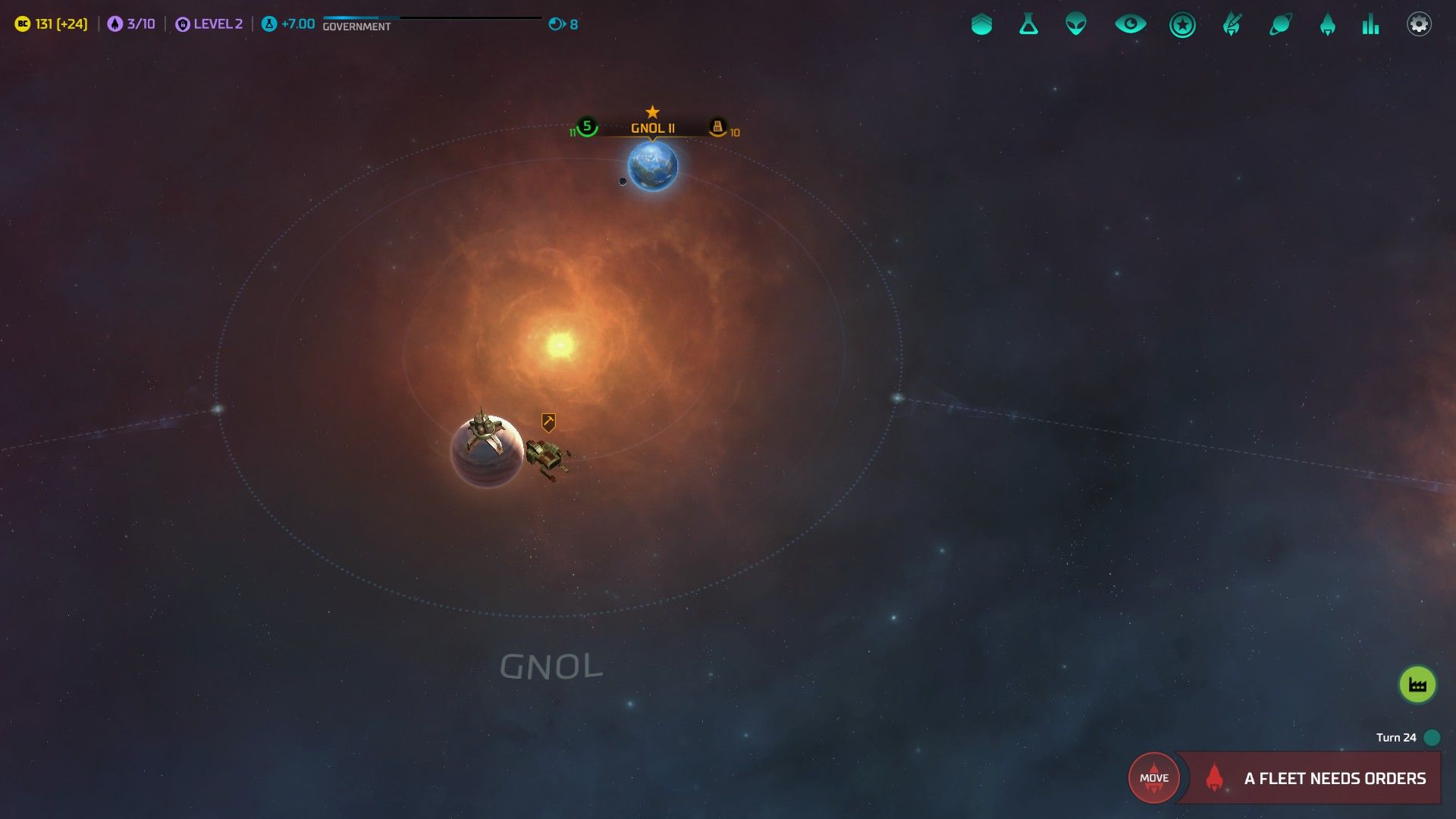 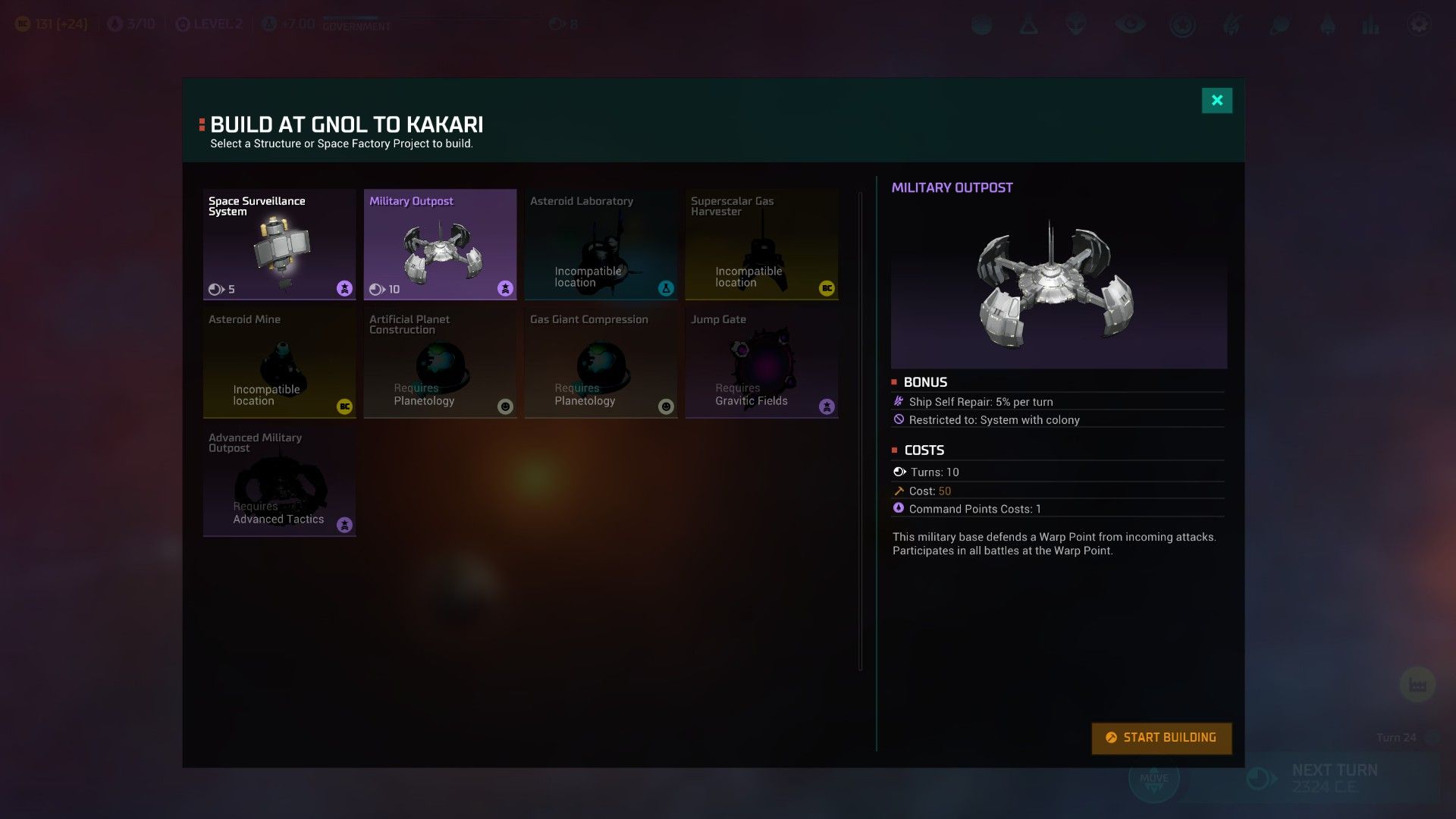 By 1830, construction had been completed on eight different refinery complexes operated by five different firms over Evorak. A steady line of in-system trade brought hydrocarbons, with all their myriad applications, from Evorak to Val, while Val provided a steady stream of supplies and personnel to these orbital refineries. With construction work on the refineries complete, the Creator was chartered by the UML goverment to establish a deep space fort designed to hold position at the entry point to the hyperspace conduit from the Gnol to Kakari systems. With this fortification, it was believed that Gnol- and, thus, the Gnolam people- would be effectively secured against many threats. The gas giant refinery brought our per-turn income from 19 BC to 24 BC, which is not a bad improvement at all. 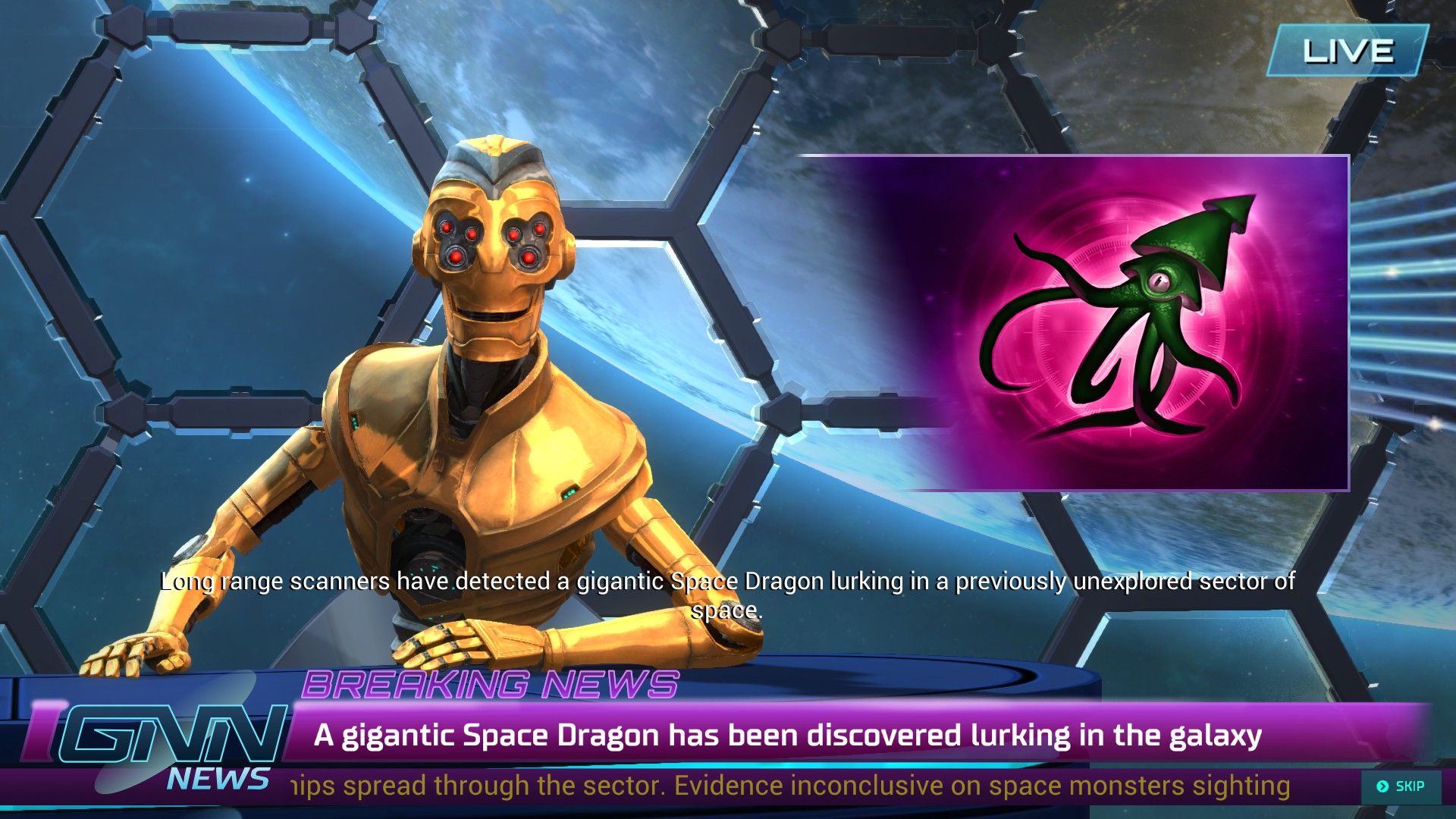 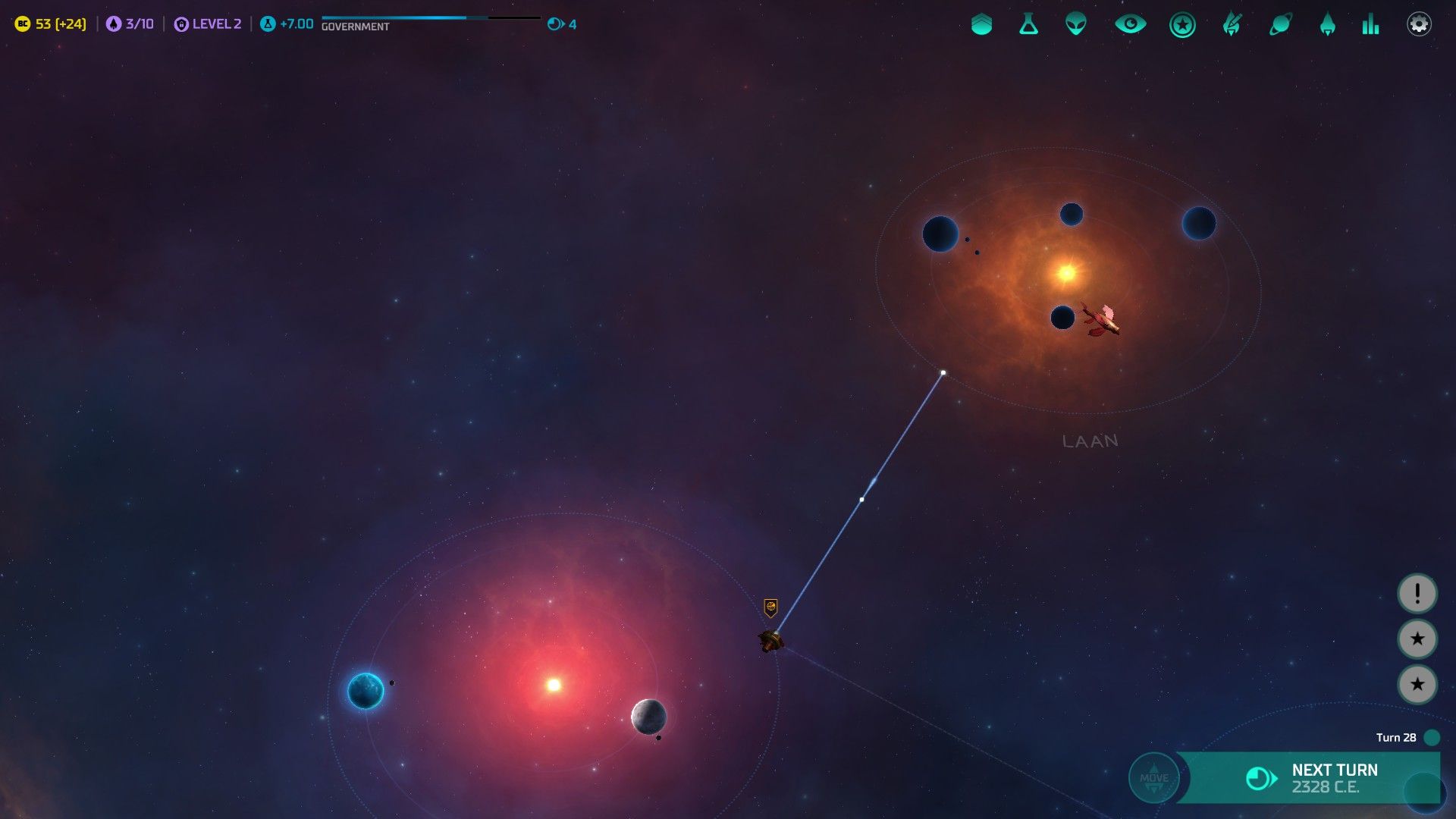 While the light and bustle of Gnolam civilisation had begun to spill out from Val into the wider Gnol system and the Gnolam economy was steadily developed, the Prospector and Endeavor had been slowly and steadily charting the hyperspace conduit network. Early in 1835, iaround an orange star along the galactic rim, the Prospector found something remarkable and terrifying. A massive organism, evidently sustained by its own natural internal reactor and dwarfing the mobile ships Gnolams could thus far build, lurked in the Laan system. The exact threat presented by this creature remained ambiguous, as the Prospector's master immediately made the command decision that the ship should not risk provoking this creature. 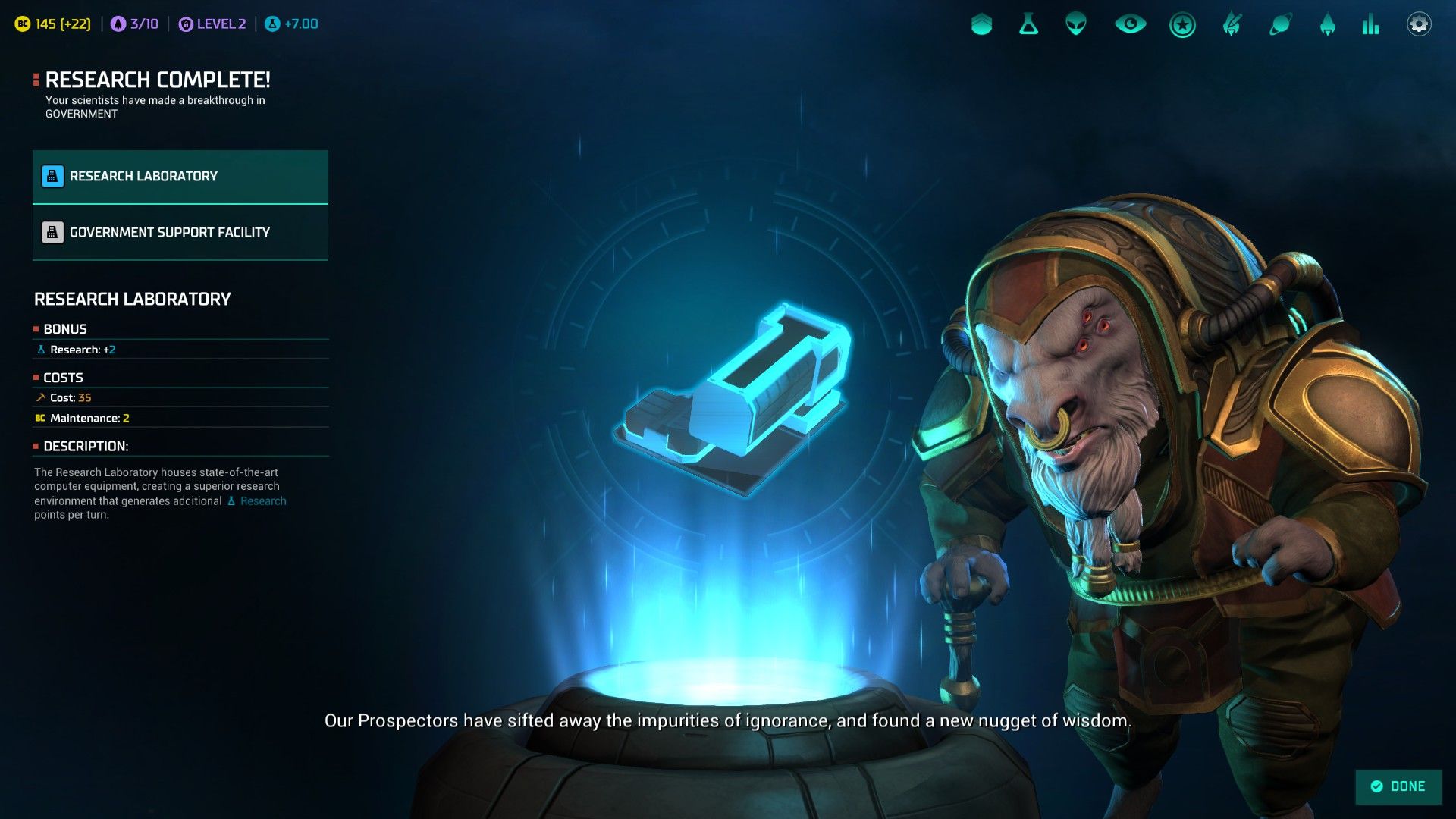 Research into sociology and logistics and the experience of administering a system-wide society spread between Val and Evorak slowly helped the Universal Mercantile League develop effective institutions to bind a society spread across vast distances into a single, unified whole. Improved mechanisms to identify, fund, and support promising research projects could also potentially greatly speed the advancement of Gnolam knowledge, helping improve Gnolam life far into the future, with new research campuses beginning to be established by 1840. The Government Support Facility is a vital structure for managing the morale of colonies off your homeworld, while the Research Lab, like Physic's Automated Factory, is one of the basic infrastructure buildings to help bolster the early game economy. 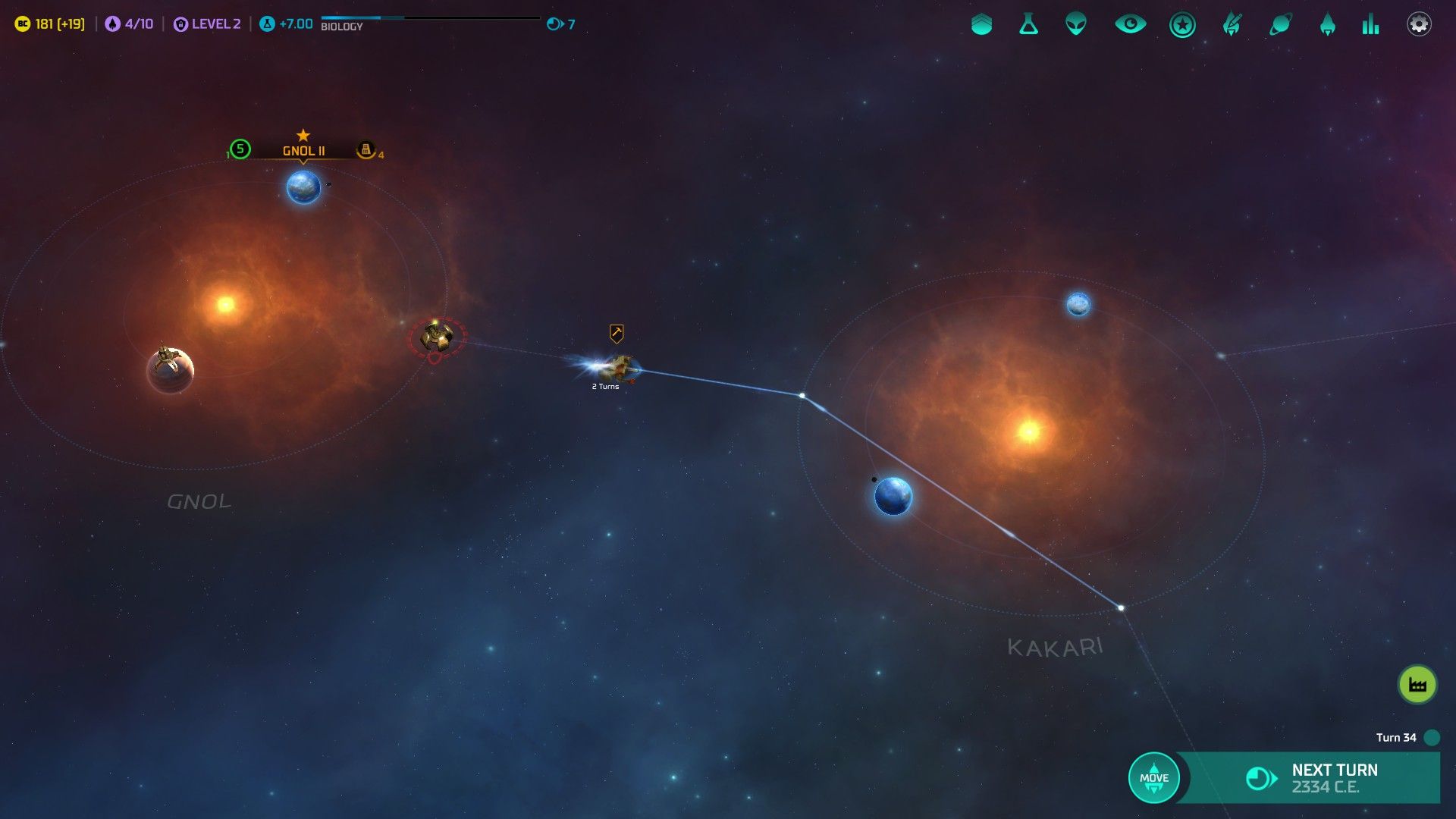  By early 1843, continued development of shipping infrastructure- both on-planet and deep-space- in the Gnol system marked a shift in the Universal Mercantile League's economy that would doubtless pay off as the economy continued to grow and demand for shipping and logistics picked up. Not only Bortis Shipping and Logistics, but its major competitors, including Blue Horizon Shipping Lines, Einar Transport, and Golden Glory Logistics pushed forward with new investments, supporting traffic on Val itself and between Val, Evorak, and the newly completed deep-space fortifications on the edge of the system. Under the circumstances, we aren't exactly looking at a newcomer taking over a new colony venture. Our new leader boosts cash income at the colony by 10%, but takes 3 BC annually to support. With our current population, this doesn't QUITE break even, but with any population growth, that will change, becoming more and more of a benefit as Val grows- or gets infrastructure that boosts per-capita cash income.  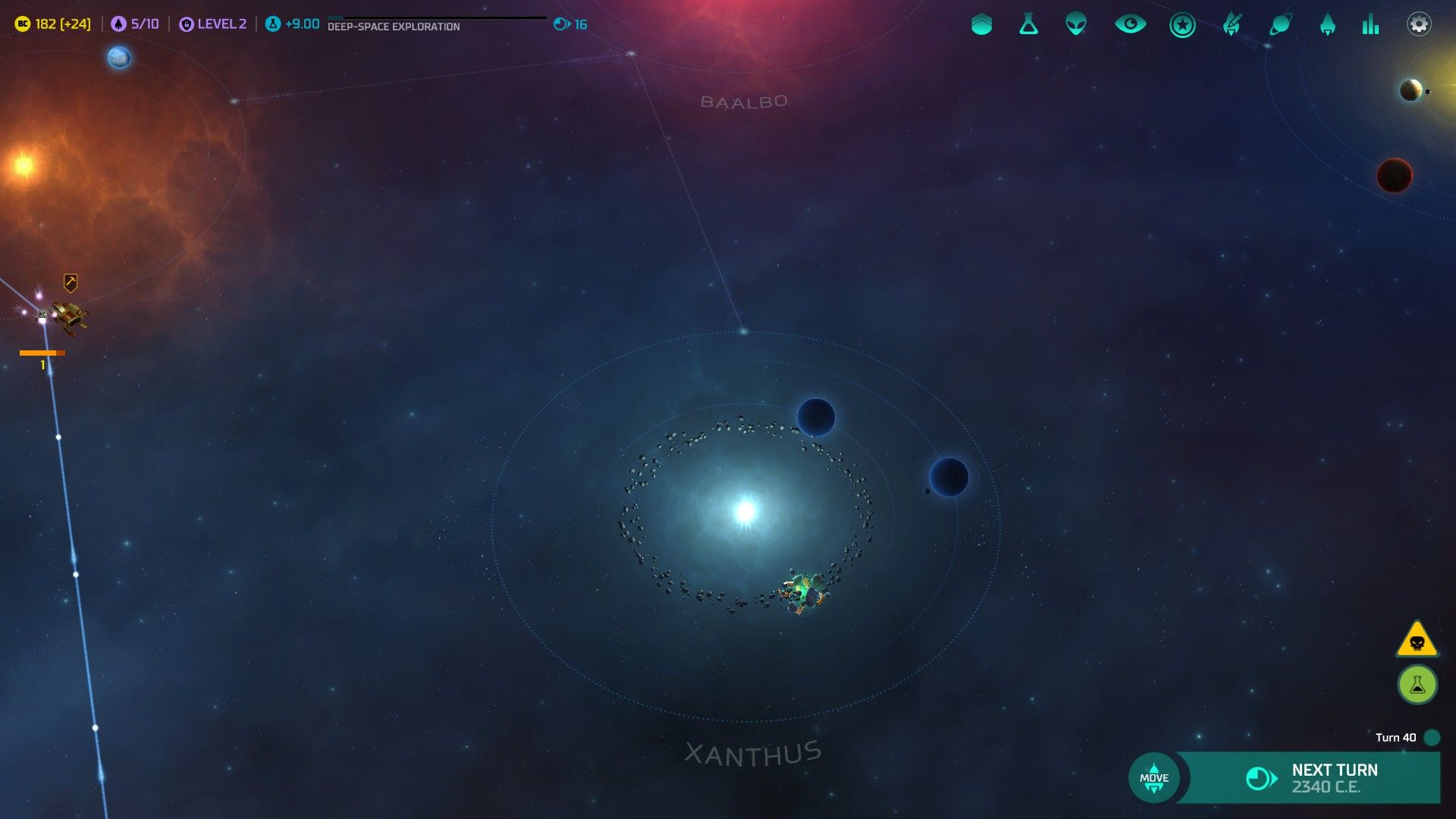 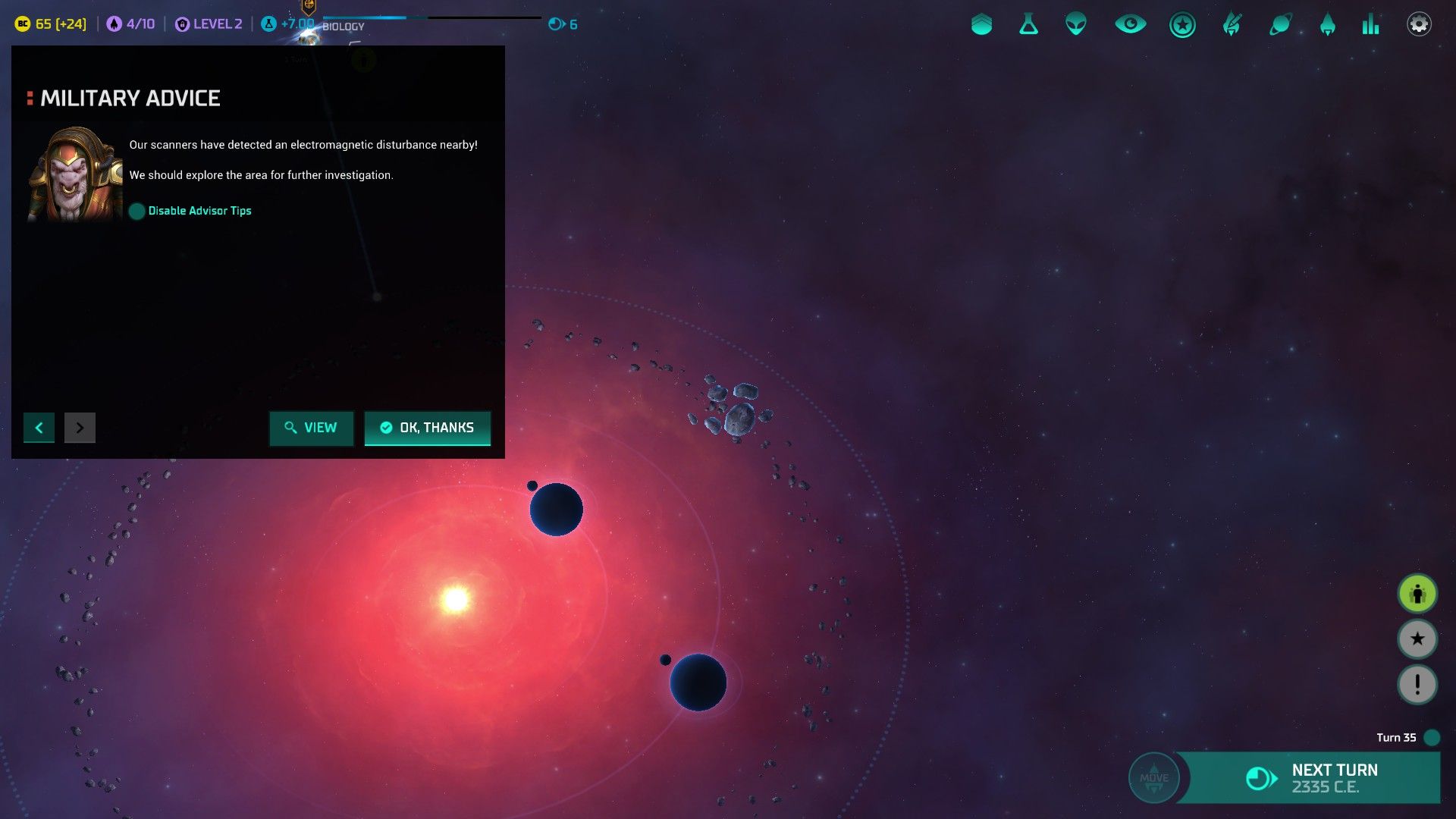 At nearly the same time, but far from Gnol, the Endeavor discovered another massive spaceborne organism lurking in the Xanthus system. As did the Prospector at Laan, the Endeavor chose not to court the danger of a full survey of the Xanthus system. It continued on, detecting clear evidence of radio traffic and power sources in the asteroid belt of the Guad system in 1844.  By 1847, the Endeavor had succeeded in investigating these signatures, discovering a shocking sight- a rag-tag assembly of criminals and outcasts who had self-exiled from the League had established a series of crude habitats in the asteroids, supporting a rudimentary industrial base supported by asteroid mining already in the progress of assembling some crude combat vessels. Although it seemed unlikely that the equipment available to these hardscrabble exiles would stand up against ships manufactured with cutting-edge League technology, nonetheless they could potentially present a critical threat to unprotected civilian shipping or colonies if not dealt with. 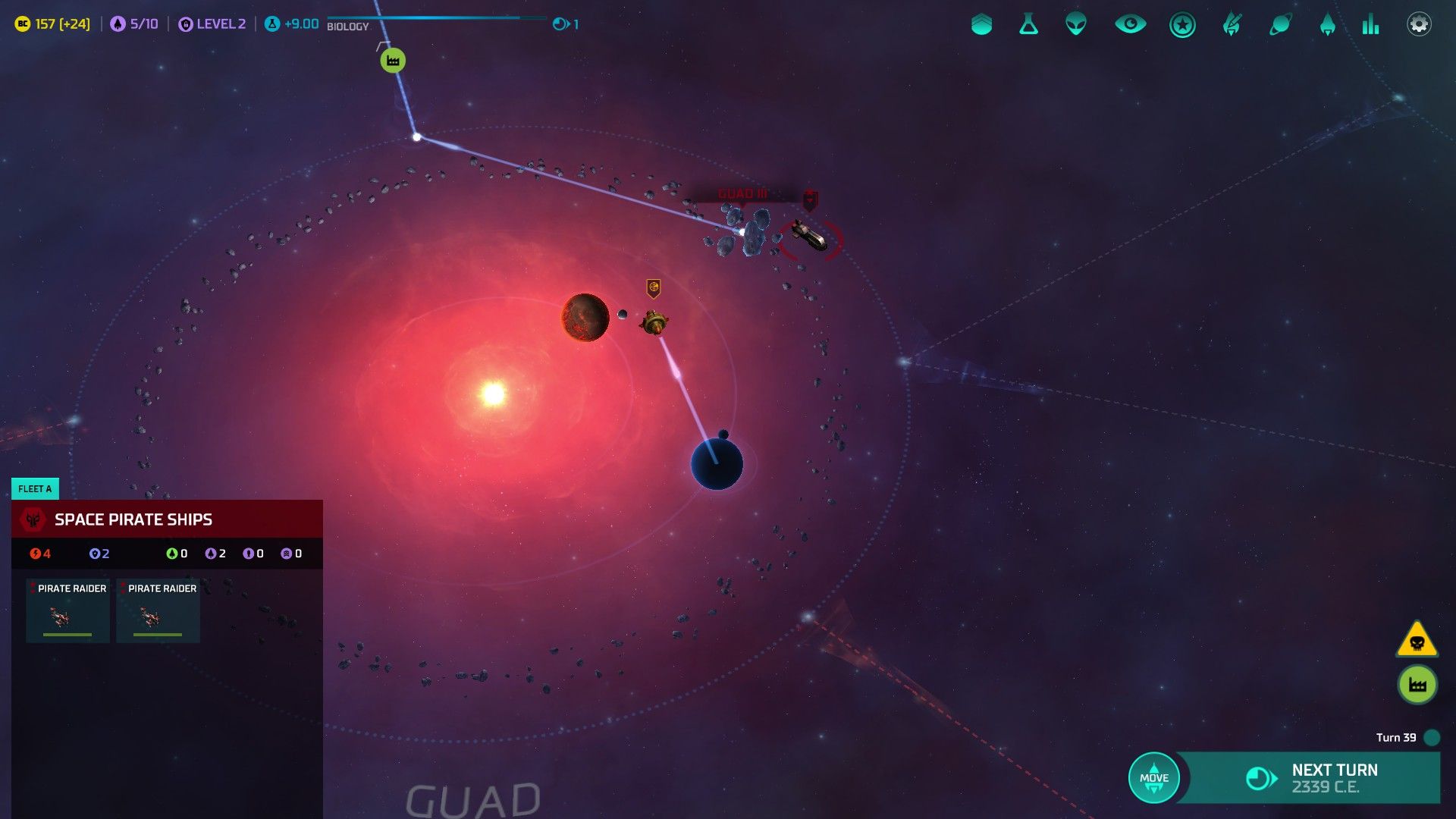  Almost simultaneously in 1849, the Vindicator and a pair of crude pirate cruisers launched from their construction berths and entered operations. The UML, having received reports of the pirate presence in Guad via fast courier drone from the Endeavor, immediately ordered the Vindicator to seek out and destroy the outlaw settlement in Guad, while the crew of the Endeavor prayed to all the gods they held dear that the ships launching from the asteroid belt had higher priorities than their exploration vessel lurking in the inner system. Fortunately for them, the pirate vessels appeared to be charting a course back to Gnol, and the Endeavor remained safe for the time being. 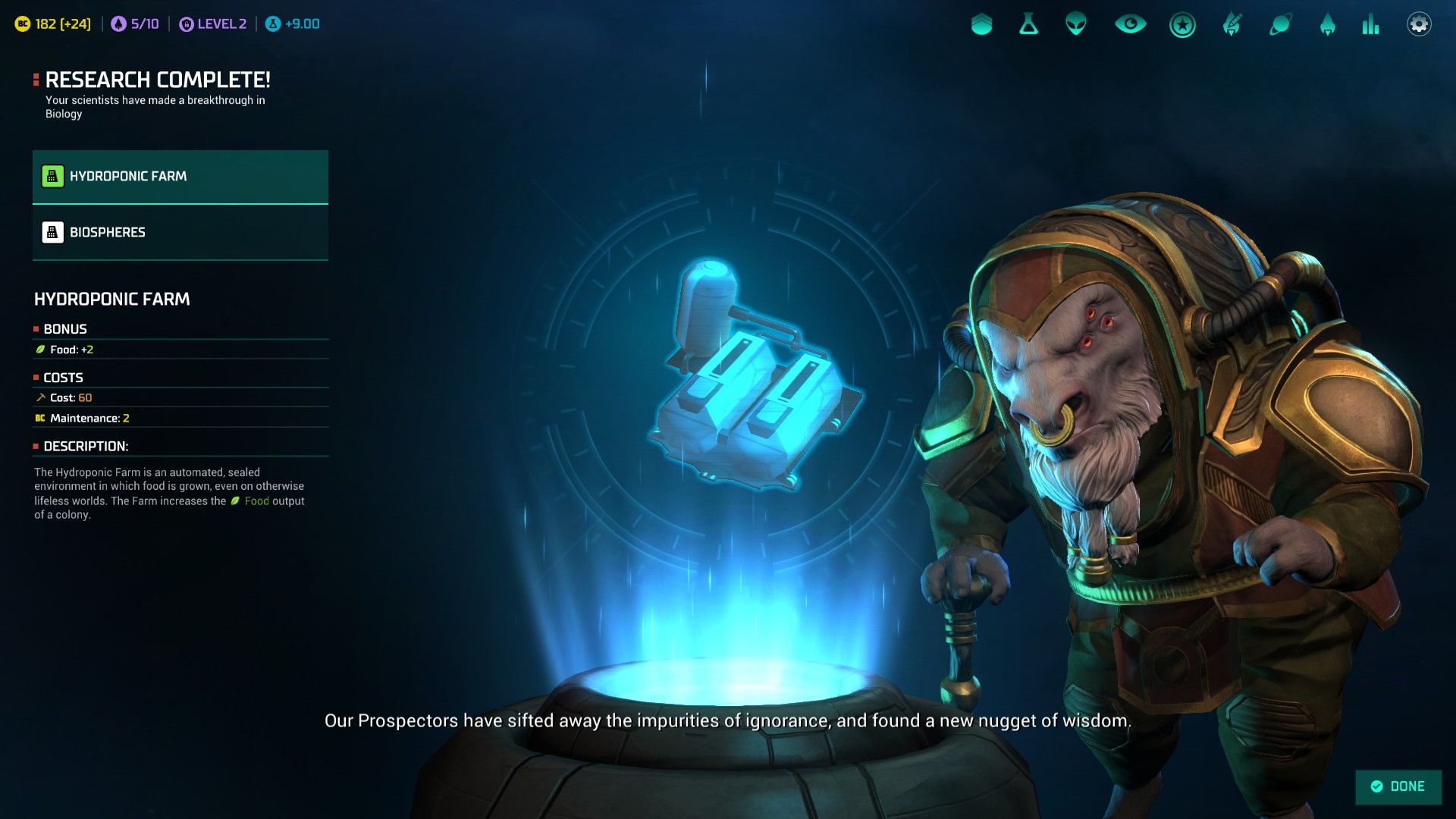 Continued research work back on Val, now bolstered by improved research institutions and extensive support to R&D departments, led to notable breakthroughs in biology and agronomy by 1850. Considerable research into establishing hydroponic farming on an industrial scale spearheaded by the agritechnology conglomerate Nutris would not only allow for effective (if capital-intensive) improvements to the total crop yields of Val, but could allow for effective agriculture in a sealed environment even on lifeless worlds. Other research departments developed methods for small sealed-environment, climate-controlled habitat domes that could effectively create the conditions to grow specialty crops that might otherwise require very specific environmental conditions, or set up research stations to observe the conditions on the least hospitable portions of Val. The Universal Mercantile League and Known Space as of 1850  The Prospector and Endeavor have pushed to explore much of the hyperspace conduit network radiating out from Gnol, discovering many worlds with promising resources or fertile biospheres, although, unfortunately, most are too high-gravity to be truly comfortable for Gnolam habitation.  The Endeavor is currently making best speed out of the Guad system, while the pirate vessels launched from the asteroid belt are just now preparing to enter hyperspace towards Kakari, and, ultimately, Gnol. Although a full five hyperspace conduits lead outward from Guad, two of them leading further coreward are extraordinarily gravitationally unstable and would almost certain rip any ship that attempted to pass through them to shreds of mangled alloy.  Far driftward from Gnol, in Varinia, the Prospector prepares to push even further driftward and towards the core.  In Kakari, the Creator has almost completed establishing a listening post and sensor array with a minimal staff of couriers on-site to provide early warning of any approach to the Gnol system. It is a far and lonely posting, the furthest-flung outpost of the League, and the first permanent League presence outside the Gnol system itself. 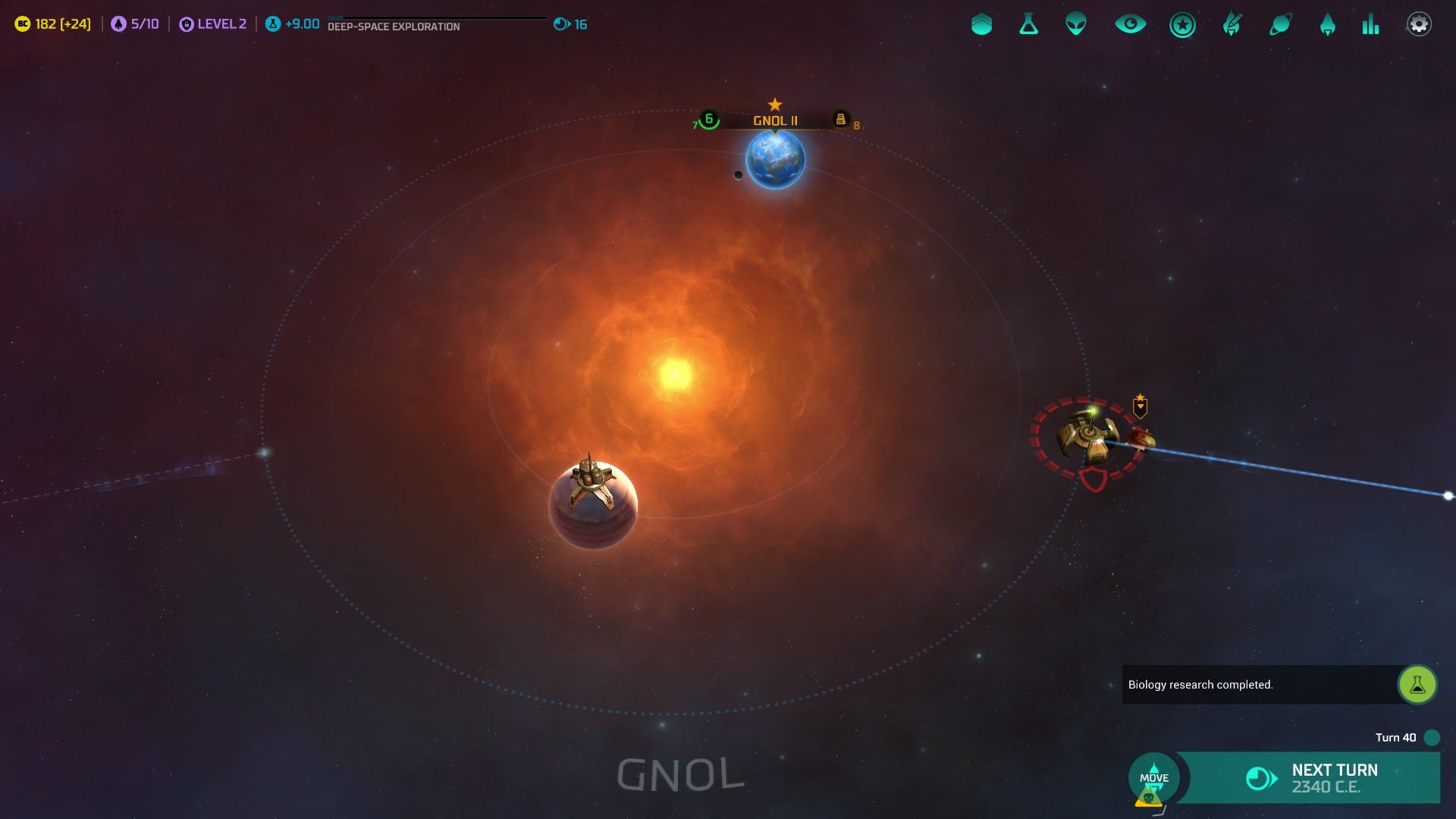 In Gnol, Val, Evorak, and the Navy's fortifications securing the hyperspace conduit to Kakari form three corners defining busy shipping and transfer lanes. Civilian space traffic has become commonplace within the Gnol system. 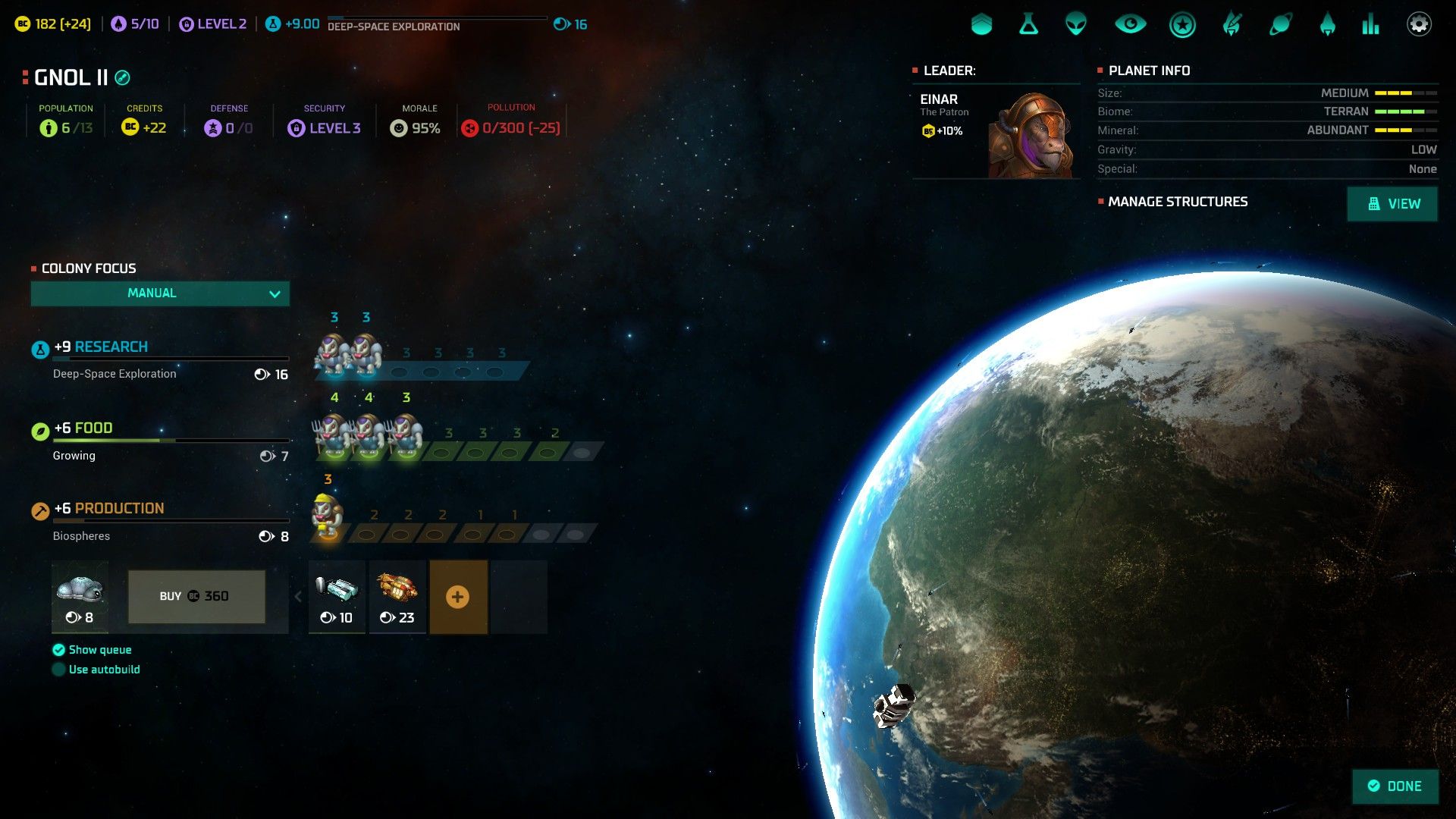 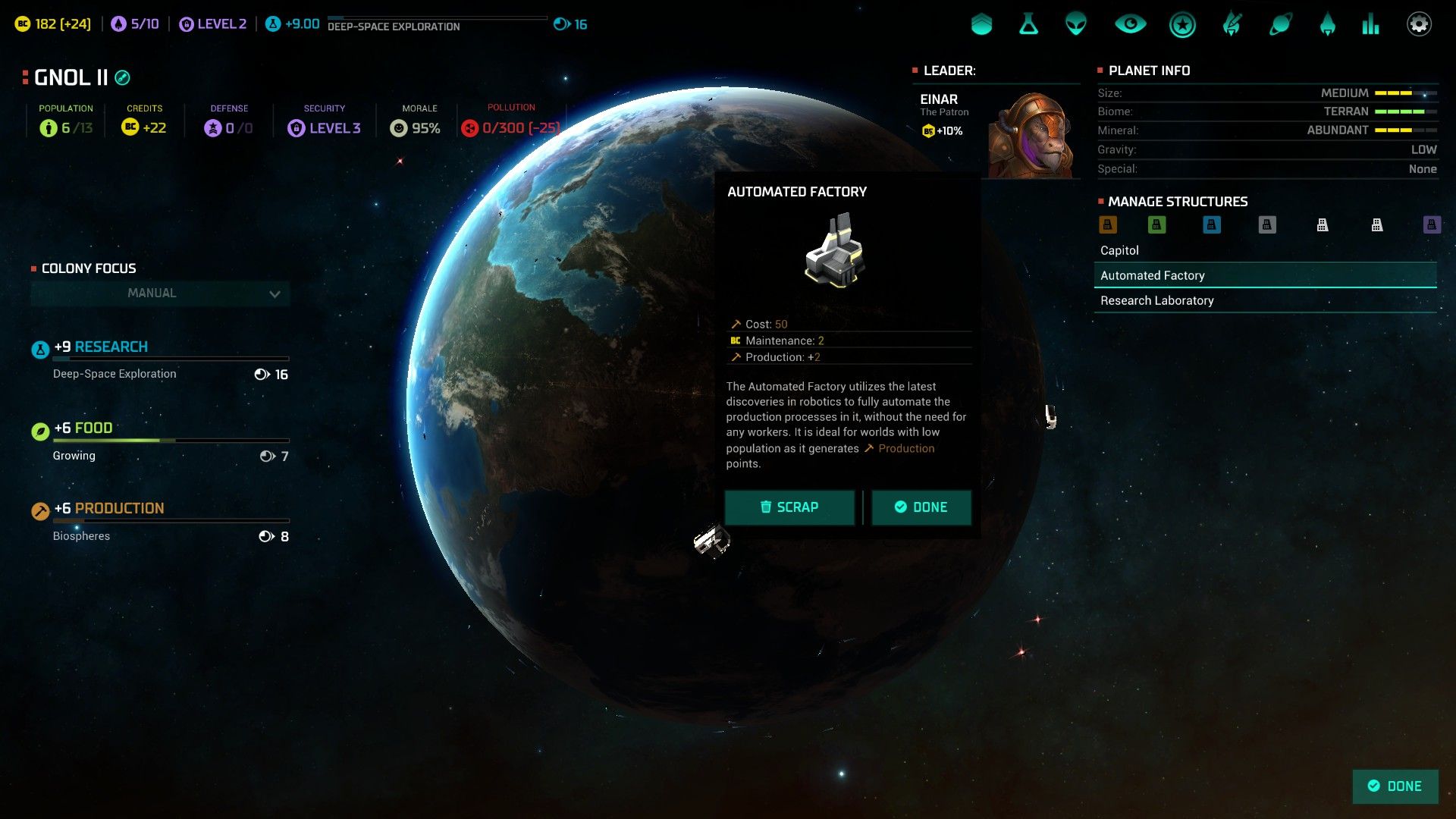 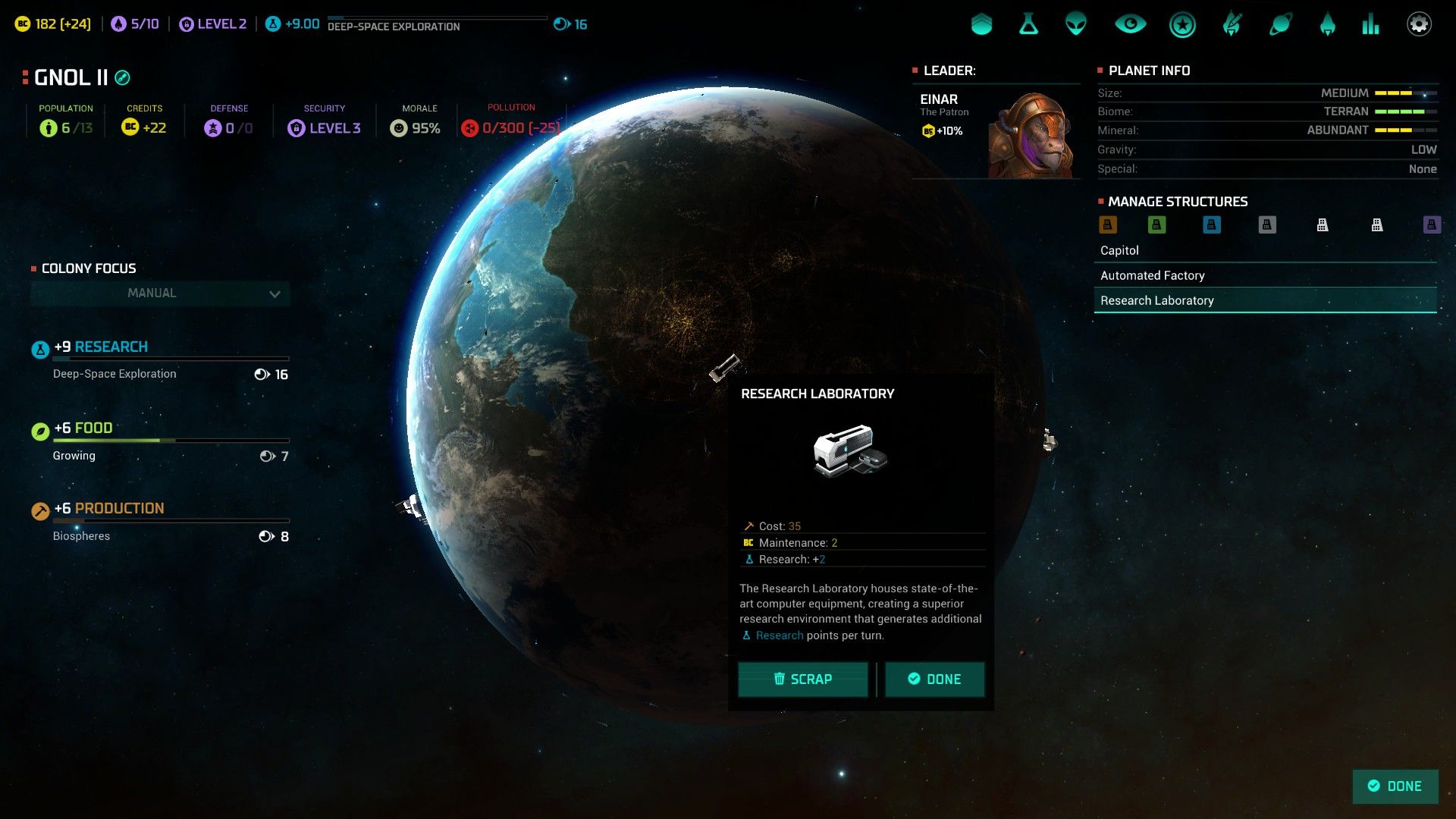 Val now exceeds six billion persons in population, with a burgeoning agricultural sector employing over 150 million Gnolams supporting increased demand for cheap, plentiful food. Work has begun by agricultural concerns and researchers to take advantage of new biological breakthroughs, in the hopes of even further boosting crop yields in the future. Improved industrial and research infrastructure have bolstered the economic output of the planet, and growth has slowly begun to accelerate on Val. Distant plans have begun to be put in place to establish a true colony on a new world beyond the Gnol system. 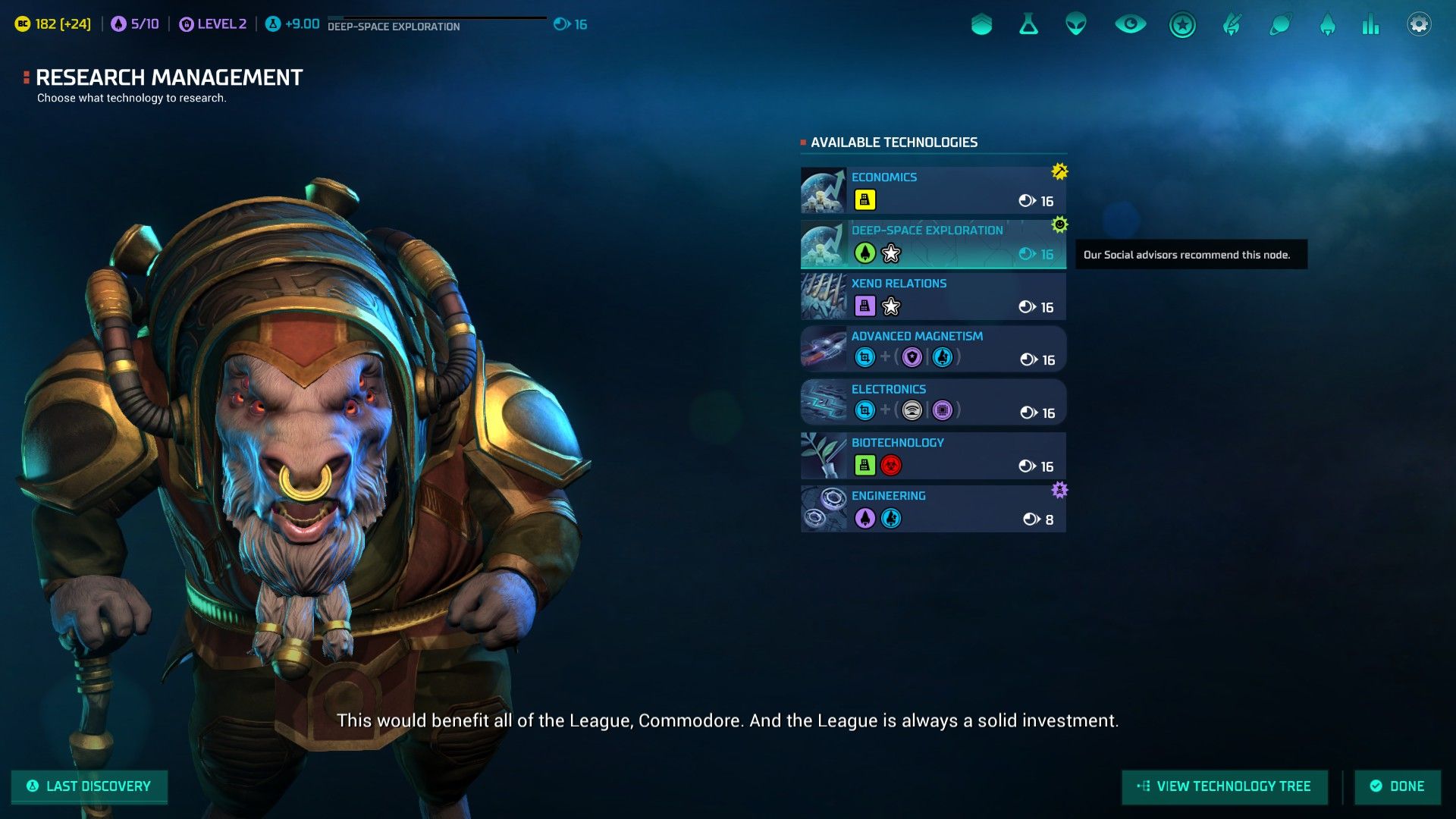 The logistical challenges of establishing permanent colonies with major populations in another star system are immense, leading theorists and investors working to solve these challenges and assemble the best possible package of infrastructure, gene samples, and specialists to rapidly and reliably establish viable colony populations on new worlds that can thereafter grow, prosper, and join in profitable trade with the homeworld. Proposals for the Universal Mercantile League Research Proposals Development of the logistics and infrastructure to support large-scale space colonisation is, of course, the research priority currently receiving the most support within the League, but other fields nonetheless bear attention. Further development of economic methods as analytic tools for corporations, investors, and governments are likely to help provide a more efficient and powerful economy, and lay future groundwork for effective corporate research projects that could bolster efficiency even further in the future. Further research into basic physics could prove valuable both for space-based weapons systems and for ship defenses, while refining electronics to the theoretical limit of their effectiveness could lead to notable advancements in sensors and computing. Continued work on physics and computing is likely to lay the foundation for further developments in weapons technologies and possible new energy sources for industry. Further biotechnological research focusing on hardy extremophilic organisms is likely to be of minimal immediate use- although some marginal applications on particularly hostile colony worlds may be likely- but would be necessary for laying the groundwork for future, far more valuable, biological research. Finally, a relatively inexpensive program of research into improved spaceframe engineering could allow for larger combat vessels, highly-effective defenses against enemy missile fire, and would lay groundwork for further breakthroughs that could improve drive systems, missile designs, and civilian chemical engineering. We are researching Deep-Space Exploration first, but we will be able to continue on with new research after we complete that project. Please vote between Economics, Advanced Magnetism, Electronics, Biotechnology, and Engineering. Technology in nuMoO is split between several 'tiers' based on separation from Space Travel, the 'tier 0' technology. Technologies at each tier are more expensive than those in the previous tier, but share the same research cost as those in the same tier. All our options save Engineering are currently tier 2 technologies, which cost 137 research each. Engineering, as a Tier 1 technology, costs 68 research. That said, I suspect that there are other applications that are more immediately valuable than Engineering- which is why they may be worth researching, despite their greater cost. Ship Design   Jian Boyt, a senior officer within the League Navy, was extraordinarily dissatisfied with the Vindicator design, believing it lacked the manueverability and flexibility to effectively pursue its primary mission objectives. His consultation with the Vindicator project's lead engineer has led to another proposal, the Enforcer, that Boyt has been advocating that the Navy adopt as standard, rebuilding the drives for better strategic and tactical maneuverability and shifting to use of guided nuclear missiles as primary weapons, hopefully to then serve better in counterpiracy and scouting roles. If the Enforcer were adopted as standard, the Vindicator could potentially be refitted at the deep-space fort at Gnol before leaving the system, losing minimal time, although it would present some expense in the rapid refit work. Please vote between the Vindicator and Enforcer standards for the Naval counterpiracy cruiser. If you support the Enforcer, vote yea or nay on whether to immediately refit the Vindicator to the new standard. Colonisation Priorities A number of promising targets have been identified by the Prospector and Endeavor for the first Gnolam colony on a new world- some larger planets with fertile biosystems that could potentially support large Gnolam populations, even if they have regrettably high gravity, and some small bodies with good access to resources and comfortable gravity, which would be immediately productive but which may be limited in the populations they can easily support. Please vote between Hoshi II, Kakari Prime, Kakari II, Baalbo II, and Taurio Prime for our first colony planet. Full descriptions of each are available in the 1850 survey report, linked in the thread index. Val Labor Force The growing population on Val shall allow for expanded employment in agriculture or heavy industry in the near future. Please vote between sticking our next 50 million members of the strategic workforce in agriculture or industry. Massive deep-space organisms and the presence of pirates in Guad present security challenges to the League in the future, but steady economic growth has thus far continued on Val, with the resources of space now clearly improving matters on the homeworld. With luck and hard work, it may be hoped that economic growth will continue on Val, and that the League will continue to prosper into the future, as it begins to look beyond Gnol itself. nweismuller fucked around with this message at 20:41 on Jan 17, 2021 |
|
|
|
If any contributor wishes to 'take over' the role of corporations I have mentioned in the text, rather than devise their own, they should feel free (save for Bortis Shipping and Logistics, which I reserve rights to). I have edited the corporation reference list to indicate corporations open for anybody who wishes to claim them.
|
|
|
|
Uncle Trorn's Foods Advertisement posted:If you have an appetite that just won't quit, why not try Uncle Trorn's Spotcap and Grain Stew? This hearty blend of mushrooms and grains, with just the right seasonings and vegetables, is sure to satisfy the whole family, providing the energy you need to get on with your day with a flavor that you'll love. Uncle Trorn's. Available anywhere quality foodstuffs are sold.
|
|
|
|
News All Day Network posted:... in an announcement today, Nian Bortis, speaking for Bortis Shipping and Logistics, established the Bortis Prize for Excellence in Economic Research. This money, totalling to... Nian Bortis, to the Assembly posted:Ladies, gentlemen. In my position as Commodore, I have responsibility for the Navy, and so I feel obligated to advocate for the appropriations necessary to perform its functions. On review of existing designs, I believe future Naval vessels should be built according to the Enforcer pattern, and, further, that the Vindicator be refitted to this pattern before leaving the Gnol system. I hope, heh, to bring you all good news from the Vindicator's first combat mission, and that our trade lanes will continue to enjoy security into the future! League Herald News posted:... growing excitement amongst small investors about the precious metals deposits on Kakari Prime, combined with the excellent prospects for local agriculture. Efforts to pool capital to support... Nian Bortis, private correspondence to Jyalla Bortis posted:Mark my words, young lady, you could do worse than investing in one of the blue chip heavy industrial companies right now. With the number of breakthroughs coming up and the growing need for massive shipbuilding projects, demand for manufacturing capacity is going nowhere but up. Do your own research, of course, but if you want more analysis from your Uncle Nian, go right ahead. I'm confident you'll do well, though- you've become a very clever young lady, and you should know I'm very proud of you.
|
|
|
|
Point of information- it appears the refit will cost us 1 BC, if we do it.
|
|
|
|
ManxomeBromide posted:I'm still getting a handle on the mechanics at this point, but I'm confused in particular on one point: The Enforcer is listed as being nimbler, with newer and better drives, but the combat speed on the stats list seems to be identical to the Vindicator. What's the actual difference in propulsion on these designs? If you'd like, I can try and discuss some elements of mechanics so you can improve your understanding. Just tell me what you're most interested in hearing about. E: Also, I'm open to suggestions for possible loreposts to make now. I'm not nearly ready to close voting yet, but am getting the itch to write more, so would gladly take suggestions for topics to explore. nweismuller fucked around with this message at 16:59 on Jun 3, 2020 |
|
|
|
Eastern Nalas Of the various geocultural divisions of modern Gnolam society, it is arguable that the ones that shaped the modern Valian system are centered around the nations around the eastern portion of the continent of Nalas. This area, which contains both the heartland of the ancient 'Empire of Storra' (which lasted from 1 Old Imperial Reckoning to 452 Old Imperial Reckoning, before its collapse in civil war) and the homelands of the various Levan nations which resisted Imperial expansion, saw the Industrial Revolution begin in Levas and thereafter spread across both Levan and Storran nations. Eastern Nalas hosts two primary linguistic groups, Storran (generally found further west) and Levan (generally found further east), both of which are branches of the greater Nalan language family. In climate, Eastern Nalas ranges from subarctic to warm temperate, with generally high precipitation and fertile terrain, and the region is well-populated and heavily developed. Culturally, the nation of Levas is arguably the prototype for modern international Gnolam culture, while the other major Levan nations of Ernar, Holle, Pruen, and Sodeg exhibit their own quirks that are nonetheless recognisable as branches from a single root. Levas, Ernar, and Sodeg are democratic republics, while Holle and Pruen are plutocratic republics. The Storran nations are, stereotypically, somewhat more religious and (marginally) less materialistic than the Levan nations, and both the rump nation of Storra itself as well as neighboring Evlas still retain ceremonial monarchies (although functionally being democratic republics, as are, in fact, all the major Storran nations). Eastern Nalas is also notable for hosting the first-established sovereign corporate government on Val- the ethnically-Pruenian city of Lunis (its government being formally known as 'the Lunis Authority Corporation'), on the border between Pruen and Ernar. The current Commodore of the League, Nian Bortis, originates from eastern Nalas, being a Hollean. nweismuller fucked around with this message at 23:47 on Jun 3, 2020 |
|
|
|
As absolutely every freaking category put up for vote is currently tied, I would appreciate a tiebreaker. (Hopefully we will end up researching the Obviously Correct Technology For Gnolams at this stage in the game after the tiebreaker, but I'll abide by it, whatever the result. But search your feelings. You know which technology sings to the very soul of the Gnolam people.)
|
|
|
|
Soylent Pudding posted:Economics Excellent, that's half the tie broken. Refits to the Vindicator and labor mix are still live issues. 
|
|
|
|
Soylent Pudding posted:Uhhhh, food I guess. Great, agriculture and 'do the refit' are confirmed. Now to play through update; probably do writing after I get some sleep later. I'll continue to take questions if people have them in the meantime.
|
|
|
|
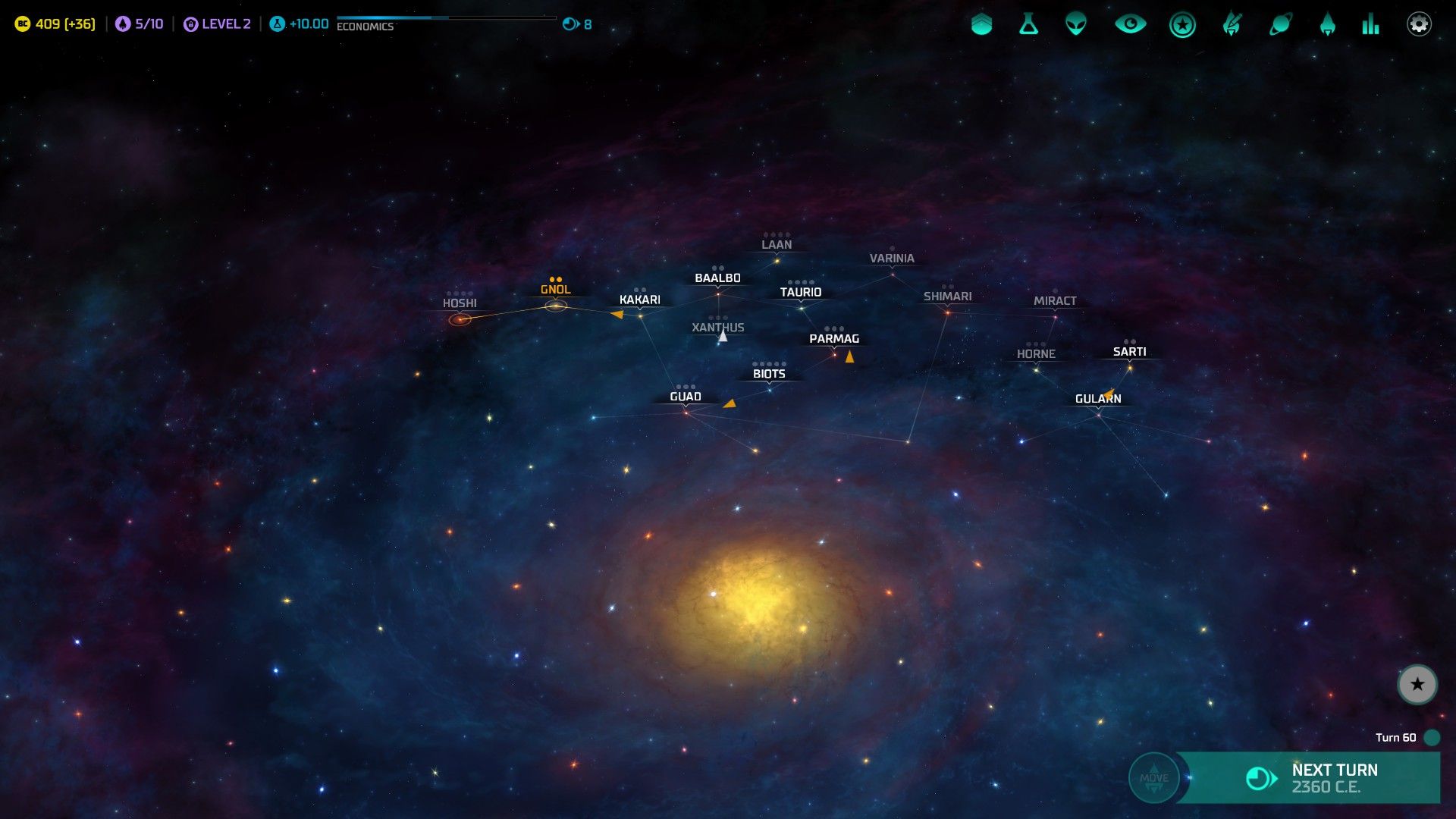 Internal document from the office of the Commodore posted:With the continued efforts of the surveyors in the Prospector and Endeavor, a more complete map of accessible hyperspace conduits has presented itself. Three systems accessible through the conduits have yet to be charted, which may eventually reveal additional stars, but the disruption of further conduit links driftward from Gularn suggests that we may be largely isolated from other segments of the galaxy- we appear to occupy approximate a quarter-arc of the galaxy, cut off nearer the galactic core. Spacelane security will be a critical function of UML governance in the future as interstellar colonisation and trade increases, and to that end effective control of the spacelanes to ensure spacelane security would appear to be critical. nweismuller fucked around with this message at 17:16 on Jun 4, 2020 |
|
|
|
FredMSloniker posted:As the guy behind Dreamland Games in your SMAC LP and the Big Brother cafe in your other, aborted SMAC LP, I feel contractually obligated to ask: what do Gnolams do for fun? The other SMAC LP wasn't mine and I wasn't participating. I'll think about fun and entertainment, though. Later. yawns
|
|
|
|
jng2058 posted:Buy and sell things? I presume Monopoly is what Gnolam toddlers play instead of Candyland. Gnolams would love Settlers of Catan.
|
|
|
|
Cat Mattress posted:Like everyone else, they also play first-person shooters. Seeing that game summary makes me question the design decisions involved in ever making that game.
|
|
|
|
FredMSloniker posted:Given how many people said, "Yes, and?" I don't see why it wouldn't be popular. (See also society's reaction to "The Jungle".) The main thing Gnolams wouldn't find natural about Monopoly is the implicit goal to outright bankrupt everybody else- that's not what they expect as a standard, even with adversarial competitive actions. 'Races to see who ends up with the shiniest pile of loot', however, are right up their wheelhouse, and the Game of Life would fit easily with implicit Gnolam assumptions, as far as 'easy games accessible to children' go. Again, Settlers of Catan, which is a game focused on building up, collecting resources, and engaging in both trades and adversarial moves to hinder your competitors on a race to collect the most victory points, would be something they'd find very natural. All this said, Gnolams share many of the same basic cultural forms of entertainment as Humans- 'sport', 'music', 'dance', 'drama', 'fiction', 'games', and so on. Specific emphases and formats can vary. nweismuller fucked around with this message at 21:10 on Jun 4, 2020 |
|
|
|
ManxomeBromide posted:... of course, this assumes that Gnolam playing a friendly game of Monopoly do not find themselves benefiting from whatever mysterious circumstance provides that "Lucky" trait. And if they do, at some point after the invention of computerization they must have noticed that certain kinds of gameplay produce different results when mechanized, even when both skill and cheating are removed from the equation... It is worth noting that Gnolams rolling dice, in whatever context, produce a statistically-expected distribution of results. It is also worth noting that it is a popular superstition amongst Gnolam gamblers that they can 'feel' when to cash out on high-risk gambles, and that in fact it is vanishingly rare for Gnolam gamblers to end up 'losing their shirt' on gambling. They can and do end up costing themselves a good amount of money, but rarely end up making commitments that end up with them losing everything. nweismuller fucked around with this message at 14:23 on Jun 5, 2020 |
|
|
|
Extragnolar Survey Report, 1875 With the survey of Biots and Parmag by the Endeavor and the survey of Shimari, Miract, Horne, and Gularn by the Prospector, some Gnolam scientists believe only four more stars are accessible within the hyperspace conduit network, although unstable conduits out of Guad and Gularn could eventually present further avenues of expansion- assuming the technology to handle travel through such unstable conduits is even achievable. Whether or not it is achievable, it does not seem likely any time in the near future. 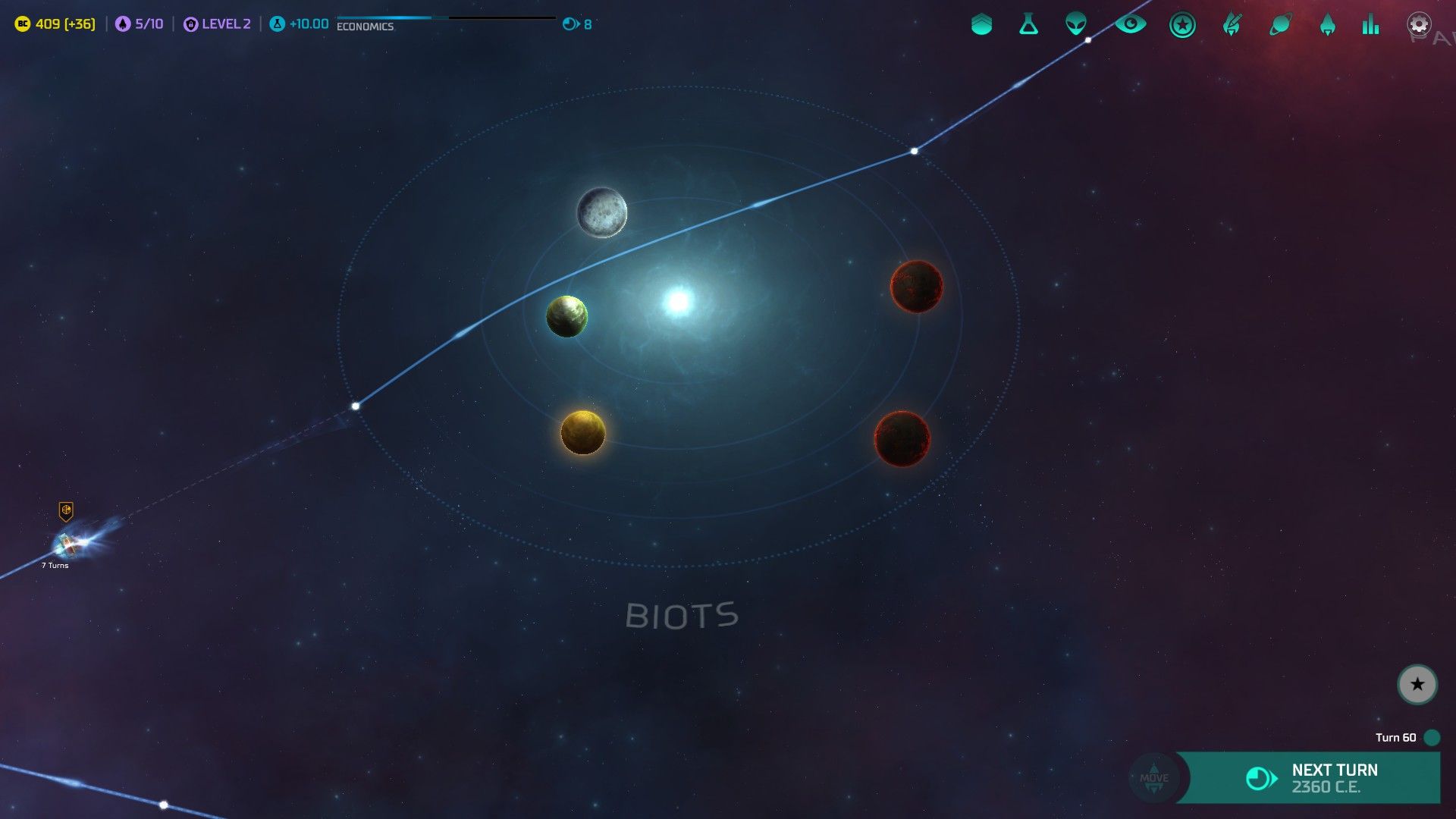 Multiple theoretically exploitable planets exist around the white star Biots, all of which have high concentrations of heavy metals that could be of use in industrial applications, but all of which likewise have unpleasantly high gravity and most of which have very hostile environments that would present challenges for colonisation. Biots Prime is the one exception to the rule that the environments of the planets around Biots are quite hostile- it is a hot garden world with high atmospheric water content and heavy precipitation on most of its surface. Torrential rains, sweltering heat, mud, and vast stretches of swamp and jungle may present some challenges to establishing population centers and agricultural land compared to more moderate Val-like planets, but the local biosphere is highly productive and successful, and beneath the mud lies almost unimaginable wealth in metals. Biots IV, although extraordinarily hostile to ordinary water-solvent based life, with endemic vulcanism and tectonic activity and a thick, hot, corrosive atmosphere, supports a crude local biosphere using certain acids as solvents. Biots Prime is small, swamp, ultra-rich, and is normal-G, with a maximum population of 8 billion. Biots II is medium, barren, rich, and is normal-G, with a maximum population of 8 billion. Biots III is small, radiated, ultra-rich, and is normal-G, with a maximum population of 4 billion. Biots IV is medium, volcanic, rich, has the red fungus (+2 food) special, and is normal-G, with a maximum population of 5 billion. Biots V is medium, volcanic, ultra-rich, and is heavy-G, with a maximum population of 5 billion. 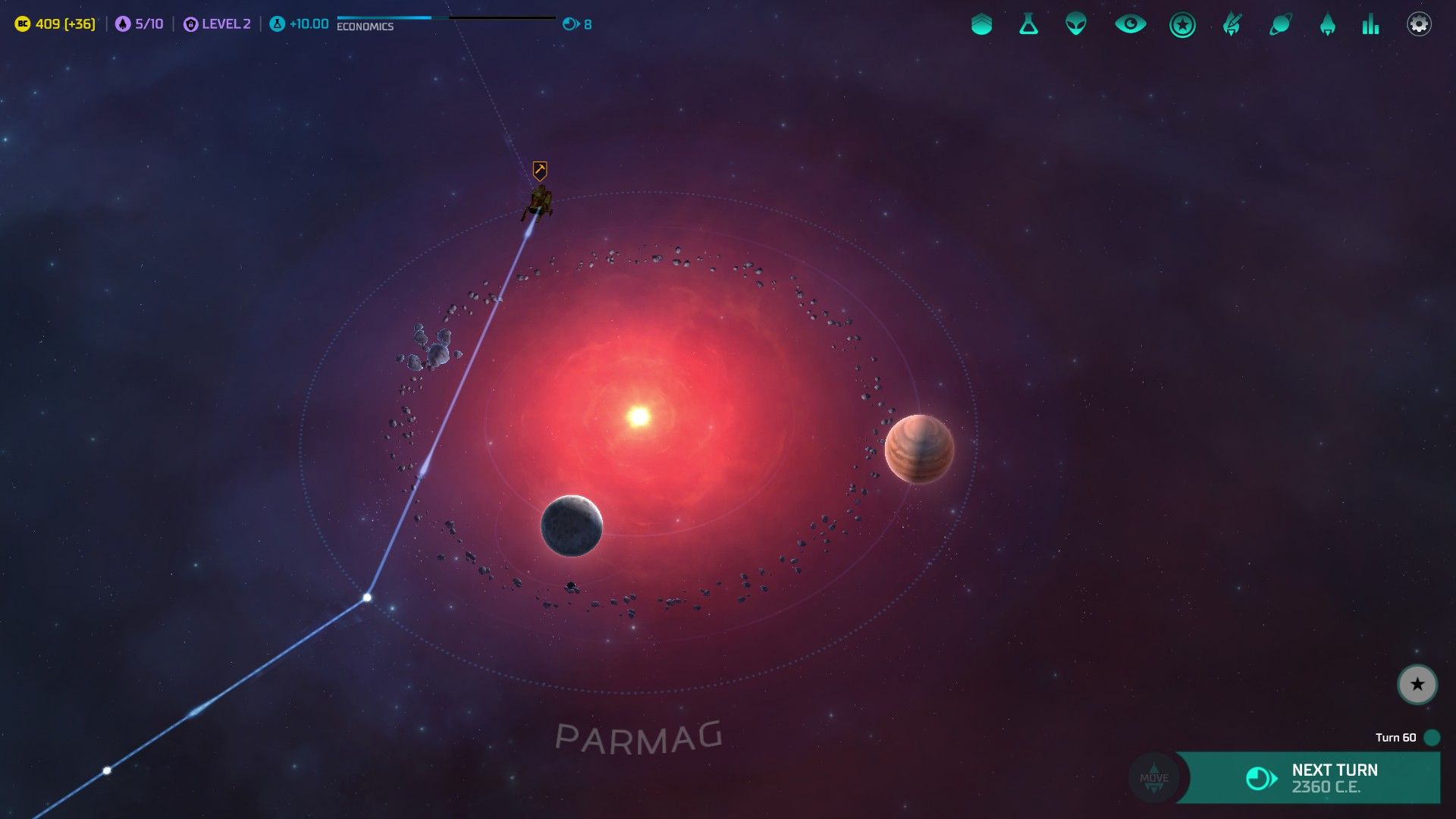 Although the sole planet hypothetically suitable for colonisation in the Parmag system is of fairly limited interest on its own merits, being a cold, lifeless world with an inert atmosphere and with only extensive surface area and reasonable local mineral and metal deposits to recommend it, the wealth of accessible resources in the Parmag system that could be extracted from a rich asteroid belt and a gas giant with an atmosphere rich in valuable gasses may eventually provide some incentive to colonise Parmag Prime, even if only as a logistics base for deep space resourcing operations. Parmag Prime is large, barren, abundant, and is normal-G, with a maximum population of 10 billion. 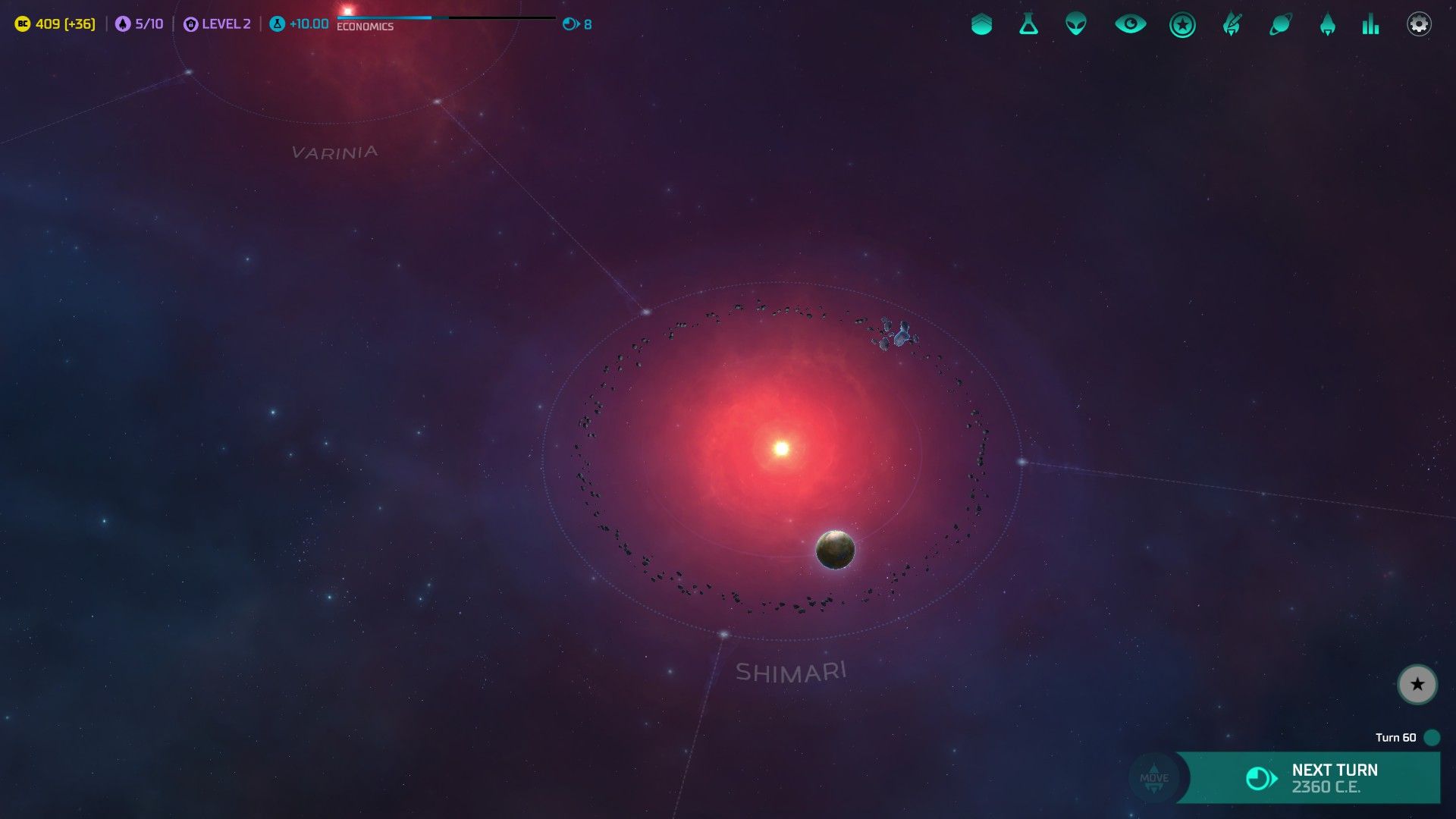 The Shimari system supports a dry garden world, that although uncomfortably high-gravity and relatively poor in most industrial metals has extensive platinum deposits, as well as a resource-rich asteroid belt in-system. Shimari Prime is medium, arid, poor, has the gold (+2 BC) special, and is normal-G, with a maximum population of 11 billion. 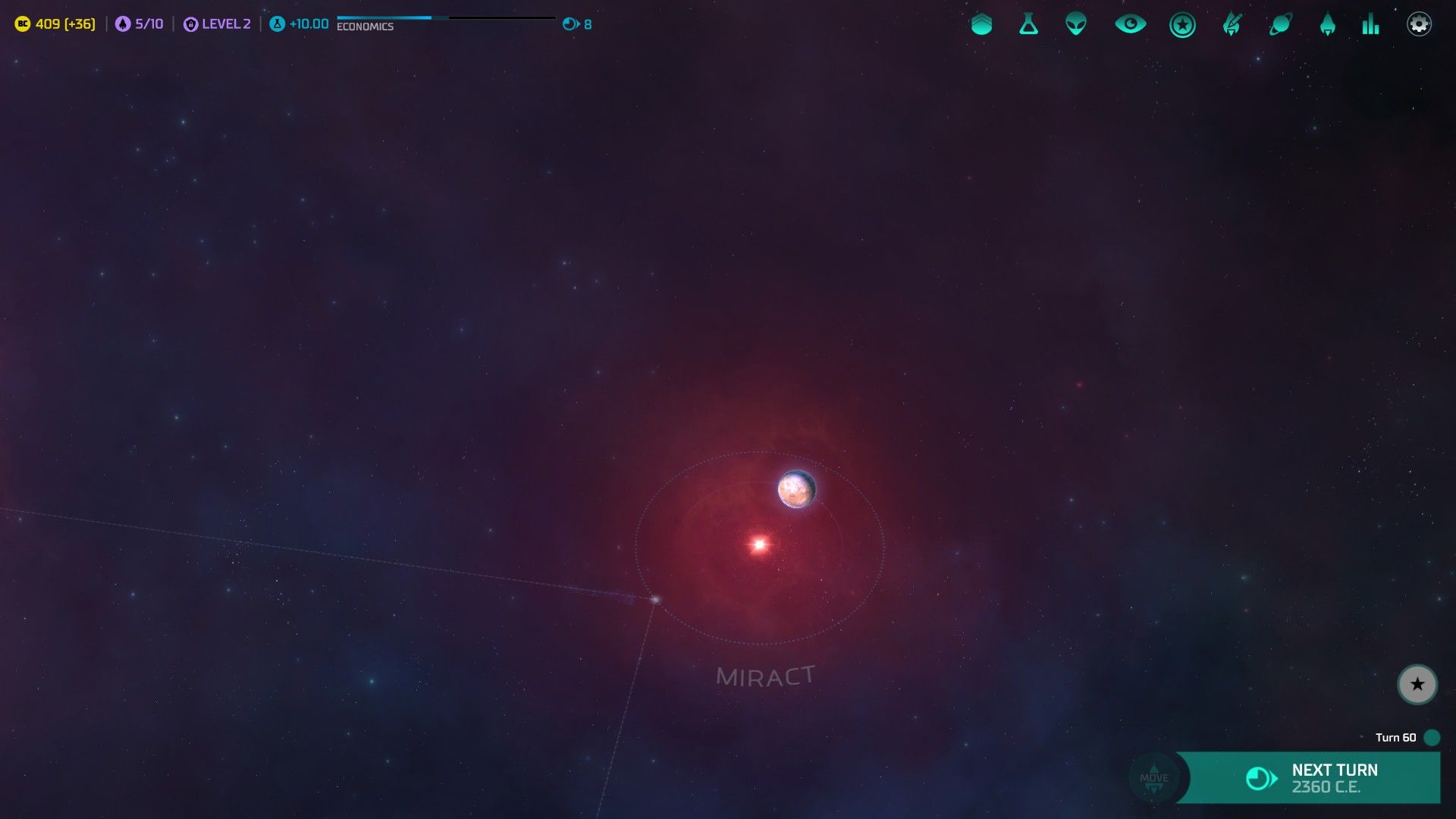 The sole colonisable body around the red dwarf Miract is a cold planet with a marginally-breathable atmosphere and a rudimentary biosphere that economises heavily on the limited supplies of liquid water on the planet, with few extraordinary features to make it truly attractive for settlement. Miract Prime is medium, desert, abundant, and is normal-G, with a maximum population of 9 billion. 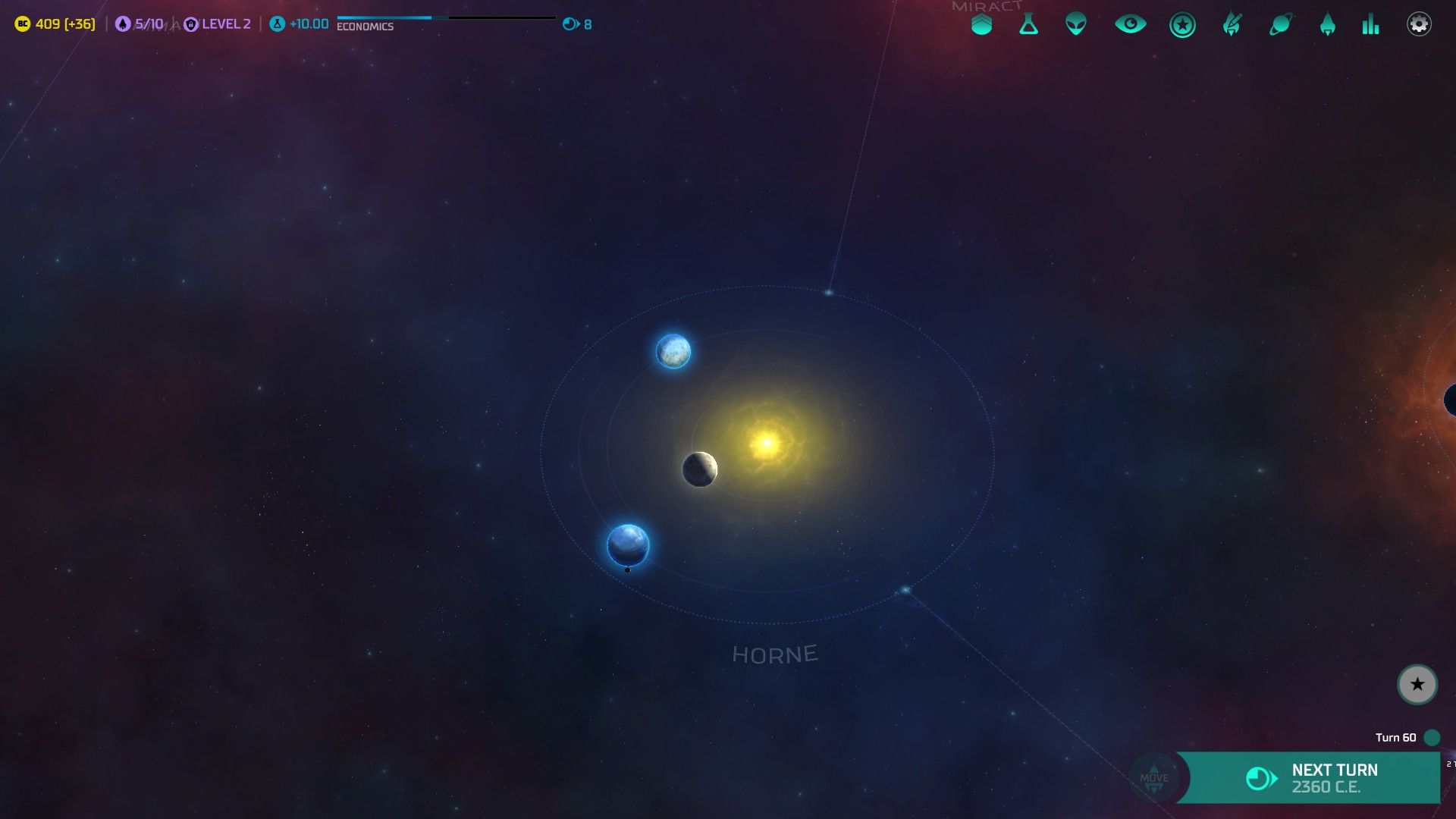 The Horne system contains three potentially-colonisable planets- a hot, lifeless wasteland with an inert atmosphere protecting it from stellar radiation, a frozen planet with a marginal biosphere and a minimal atmosphere that fails to trap most heat on the planet, and, by far the most interesting, a large Val-like world with a lush and inviting biosphere. Horne III, although reasonably poor in heavy metals of industrial use, is larger than Val with a greater habitable area, and has enjoyed an interesting geological history that has been highly friendly to the formation of various crystalline minerals, some of which could be easily mined for gem-grade stones and others of which form vast, dream-like crystal formations amidst the planet's teeming life. Horne Prime is medium, barren, abundant, and is normal-G, with a maximum population of 8 billion. Horne II is medium, tundra, poor, and is normal-G, with a maximum population of 10 billion. Horne III is large, terran, poor, has the gems (+2 BC) special, and is normal-G, with a maximum population of 16 billion. 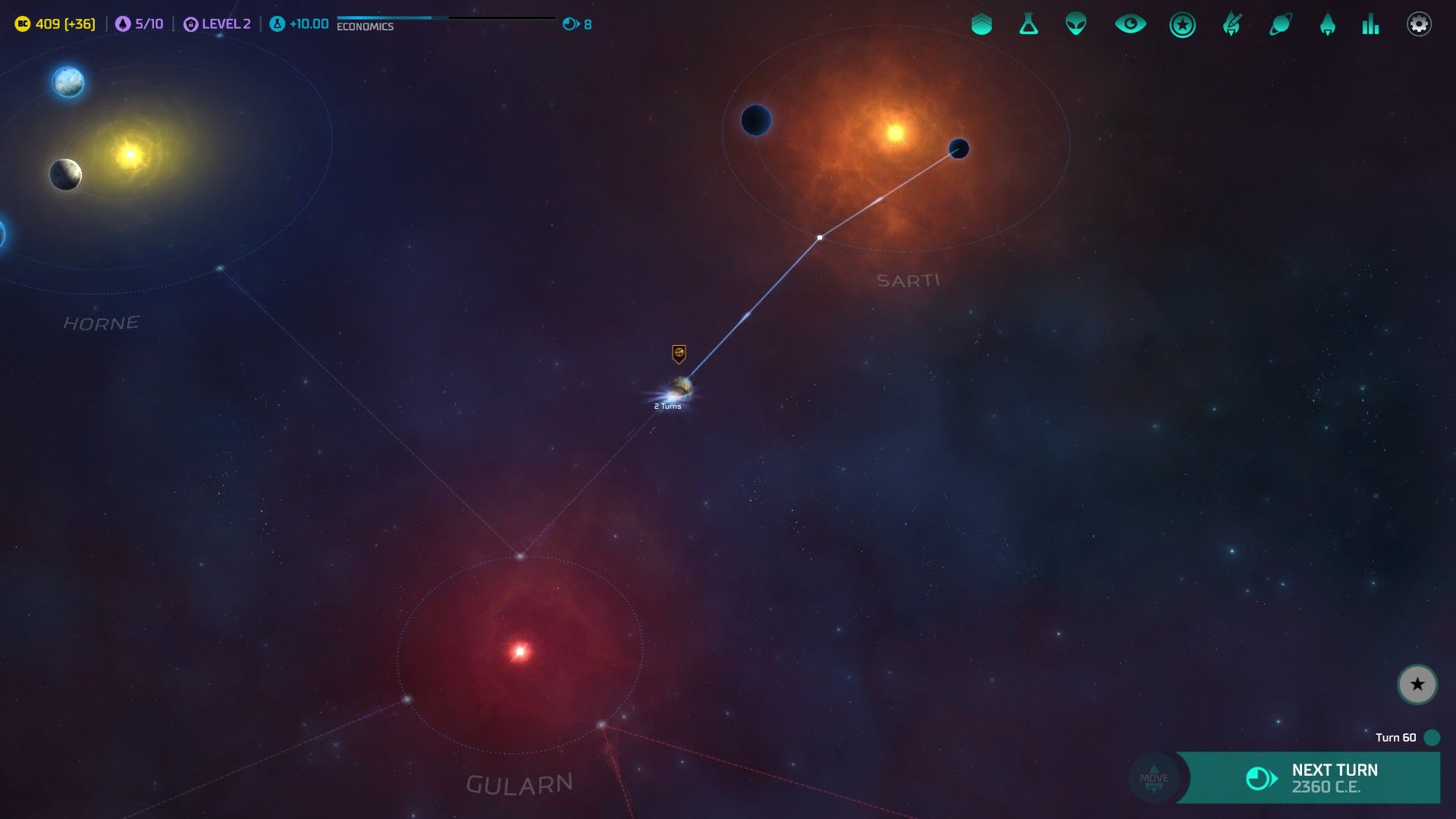 Gularn's planetary system consists exclusively of uselessly tiny, irradiated rocks and an extensive but low-density debris belt. It is anticipated that no permanent presence beyond, perhaps, a listening station, could be supported in the system. The two hyperspace conduits leading further driftward from Gularn are too wracked by gravitic instability to be traversed, marking Gularn as the driftward frontier of accessible space. nweismuller fucked around with this message at 18:42 on Jun 5, 2020 |
|
|
|
Soylent Pudding posted:Does this mean we can't fortify Gularn at all? That's right.
|
|
|
|
MechaCrash posted:A lot of these places are kind of buttso, but the hyperspace lane layout does at least carry some advantages. It'll be a good while before you have to worry about it, but Miract and Guad make excellent chokepoints. If you take those, then every system you've explored except Horne, Sarti, and Gularn become locked off unless someone can punch through those borders. Gularn would make a better point than Miract, of course, because then Horne and Sarti would be inside the border instead of outside it, but Gularn has no planets to colonize to support setting up various forts. Miract does not secure everything, until we can confirm what's going on in the yellow star linked to from Shimari and Guad.
|
|
|
|
MechaCrash posted:Well, worst case, the chokepoints would be Guad and Shimari, then. I made the point in an earlier post that any one of Taurio, Varinia, or Shimari would secure most of the spinward portion of our quadrant in conjunction with Guad. We may want to prioritise our first chokepoint of those three based on economic considerations, given that the value of Guad other than as a chokepoint is... limited. nweismuller fucked around with this message at 20:52 on Jan 17, 2021 |
|
|
|
Cat Mattress posted:Taurio, Shimari, Horne seems like a promising way to expand the empire, with additional defense colonies at Guad and Miract. We don't even need a defensive point at Miract. Shimari and Horne, between the two of them, control all approaches to Miract.
|
|
|
|
Vindication  A refit of the Vindicator was carried out in early 1851, updating it to the recently-approved Enforcer pattern, improving its engine output and shifting its primary space-to-space armament to three launch tubes for guided nuclear missiles linked to magazine space for multiple launches. With these refits complete, the Vindicator set out from the Gnol system, heading first to establish a defensive position at the edge of the Kakari system. 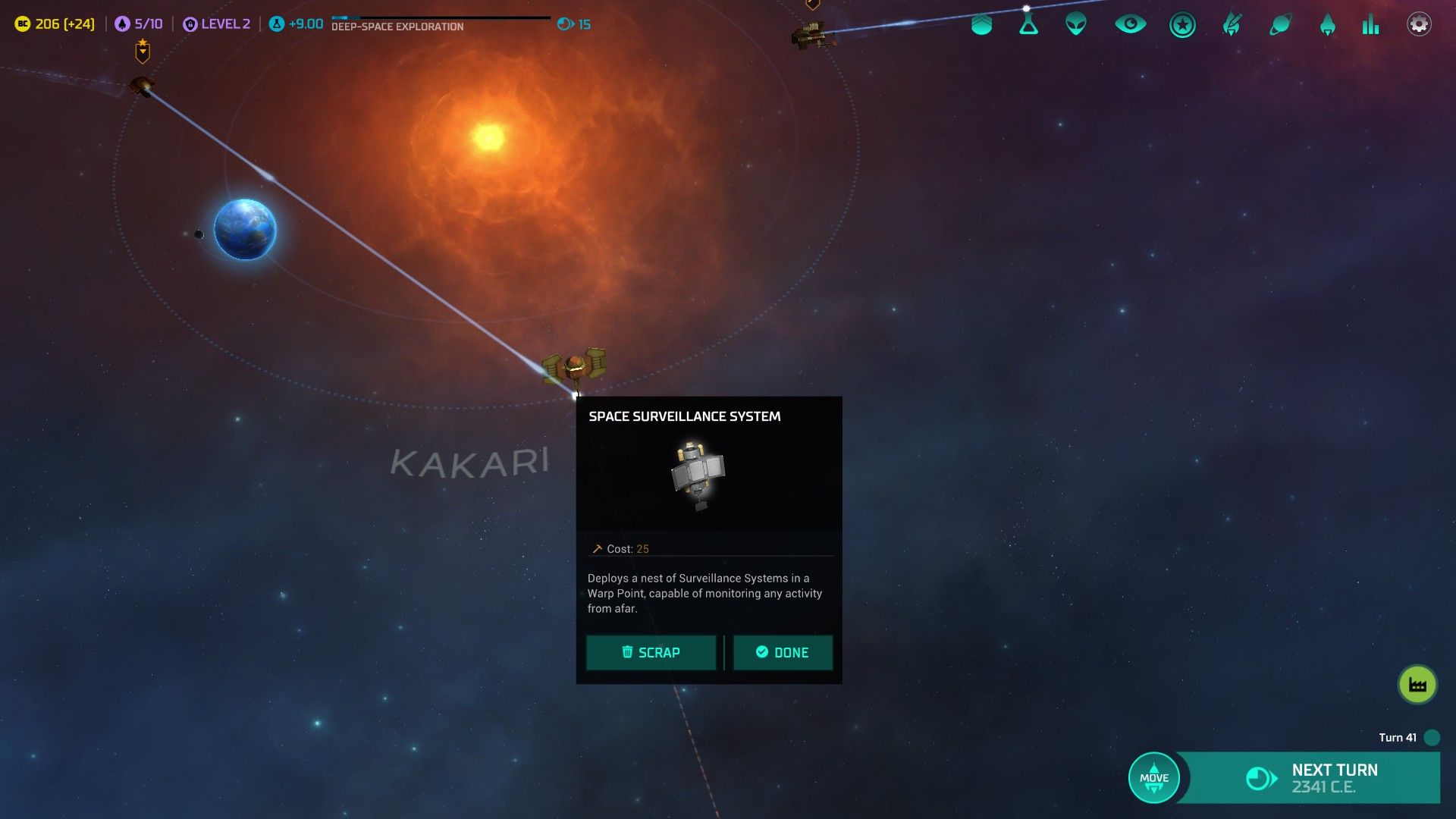 This defensive position was needed because of the listening post that the Creator finished constructing in early 1852. Although minimally-staffed with a few sensor technicians and courier crew, simply abandoning this lonely outpost to destruction when a Naval commitment could save it was considered to be unnecessary. 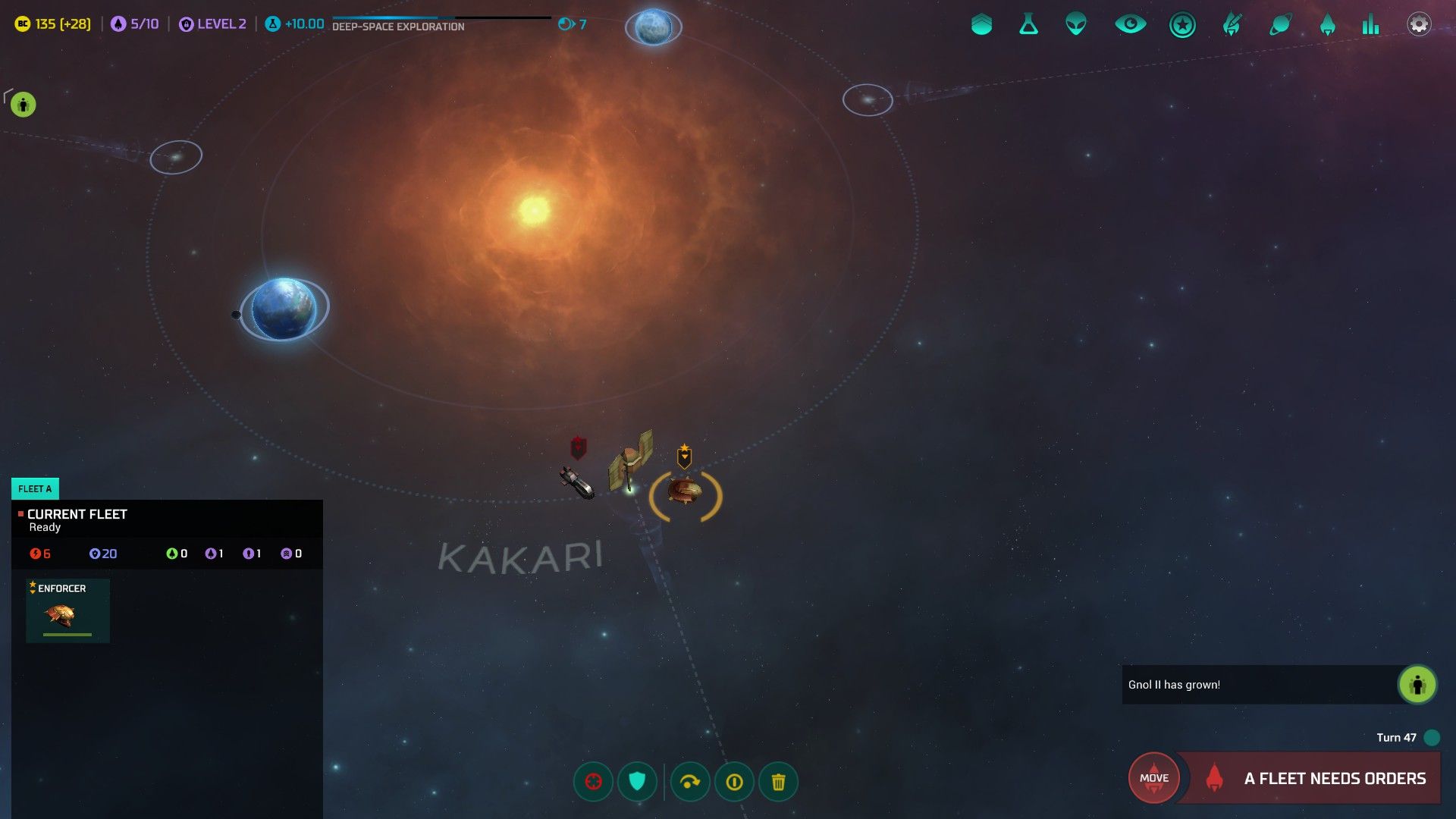  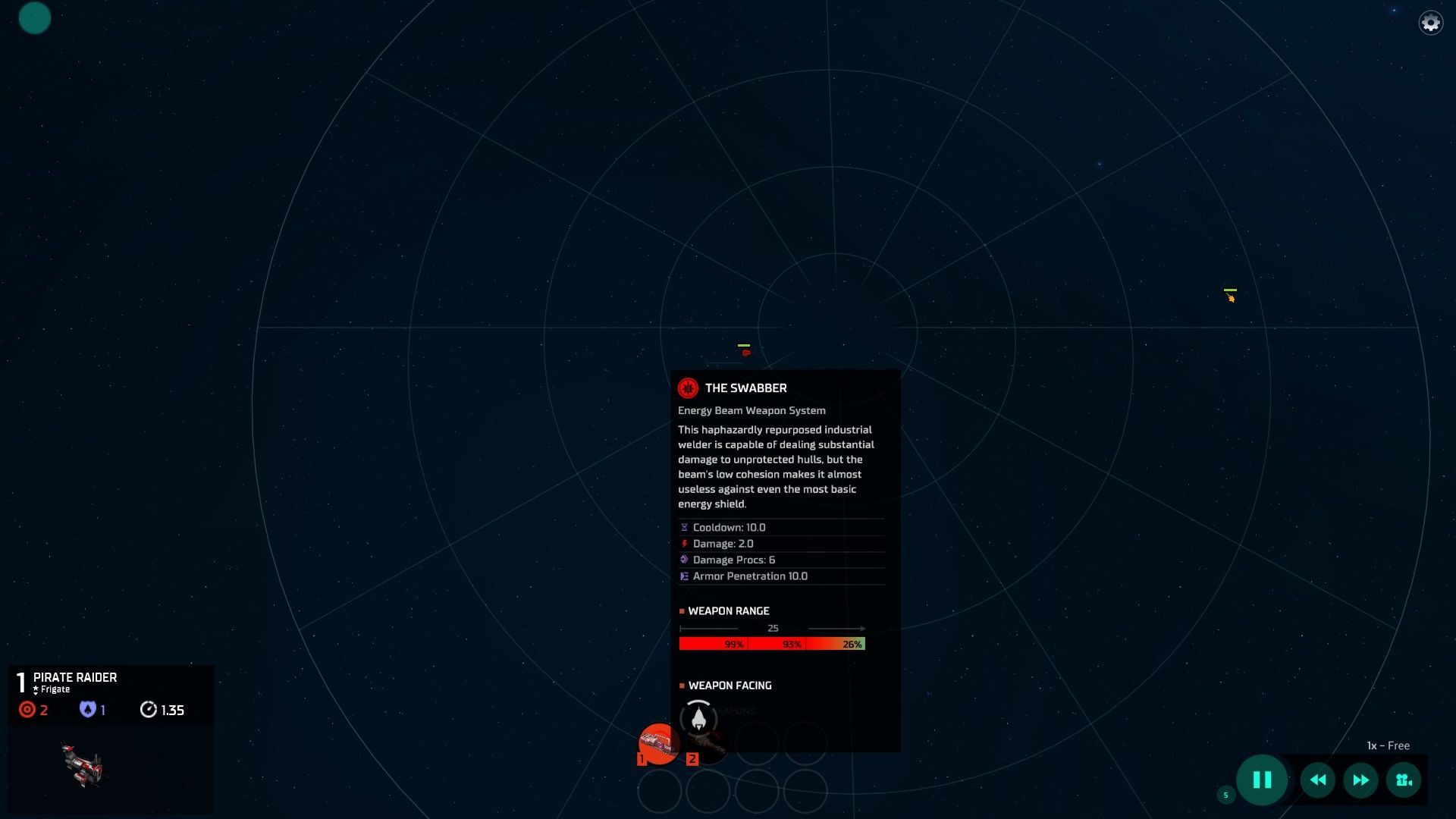 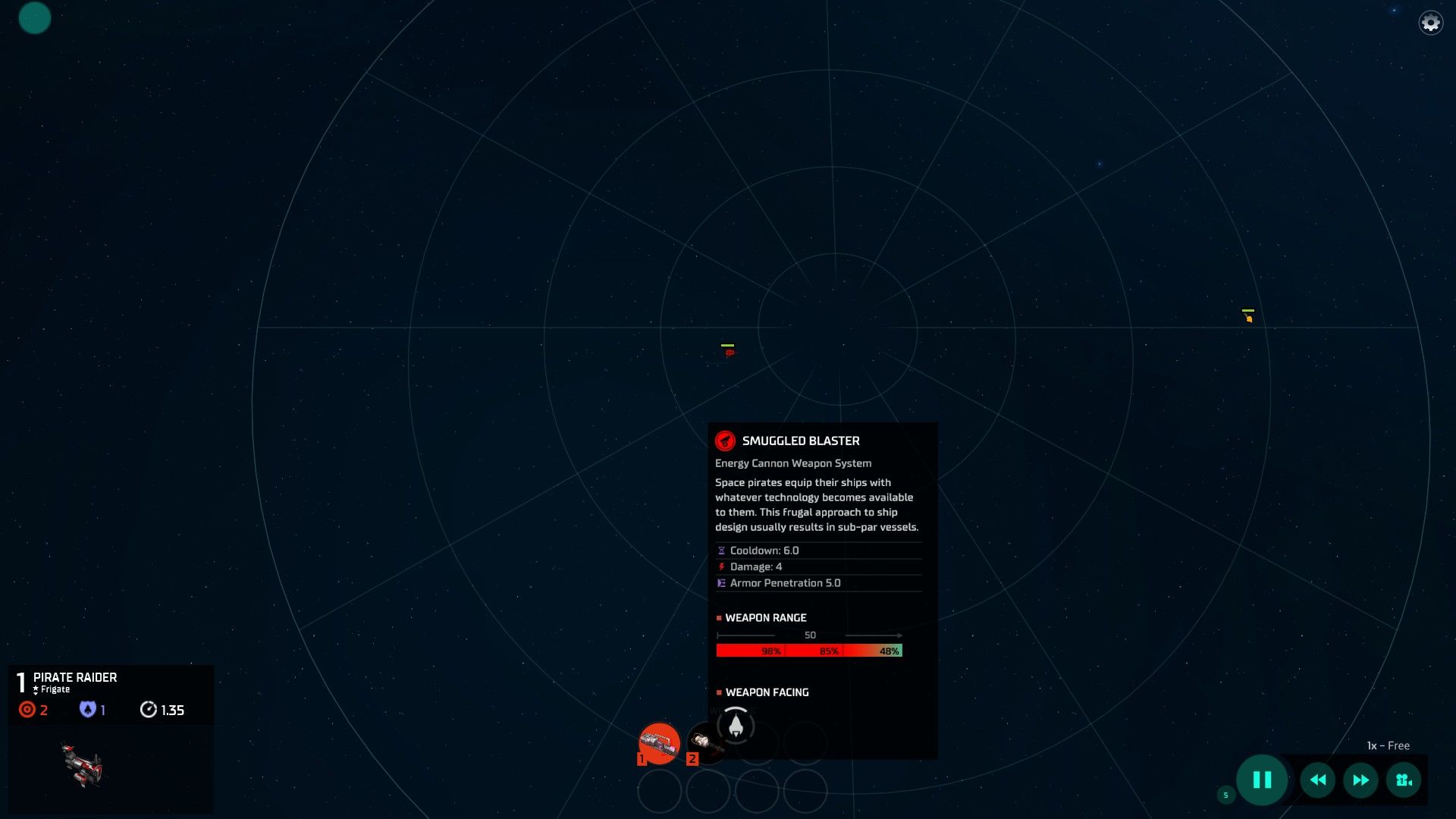 In 1859, the pirate vessels bound for League space finally arrived, and the Vindicator was able to assess the construction of the pirate vessels at short enough range for a detailed study. A pair of high-powered chemical laser mounts made up the primary offensive firepower of each ship- bulky and crude compared to the solid-state lasers used by Naval vessels, but with enough power despite this to present at least a moderate threat to Naval armor. This was supplemented by a makeshift but ingenious refit of several of the forward manuever thrusters to attempt to channel superheated ejecta from the drive system into a more or less coherent beam at close range. The ships themselves, although not meaningfully smaller than the Vindicator, had a much thinner armor layer, barely sufficient for protection against cosmic radiation and the stresses of FTL travel. Pirate weapons are, to put it bluntly, crap, and their hulls appear to have fewer than half the hit points of the frigates they match in size. About the only genuine threat they pose is if you let them get up close enough to use their sustained beam weapon. They essentially can be outfought by just about any military design that bothers to make any efforts towards a space superiority role at all, but they'll cheerfully destroy unprotected infrastructure and ships if not stopped by warships. 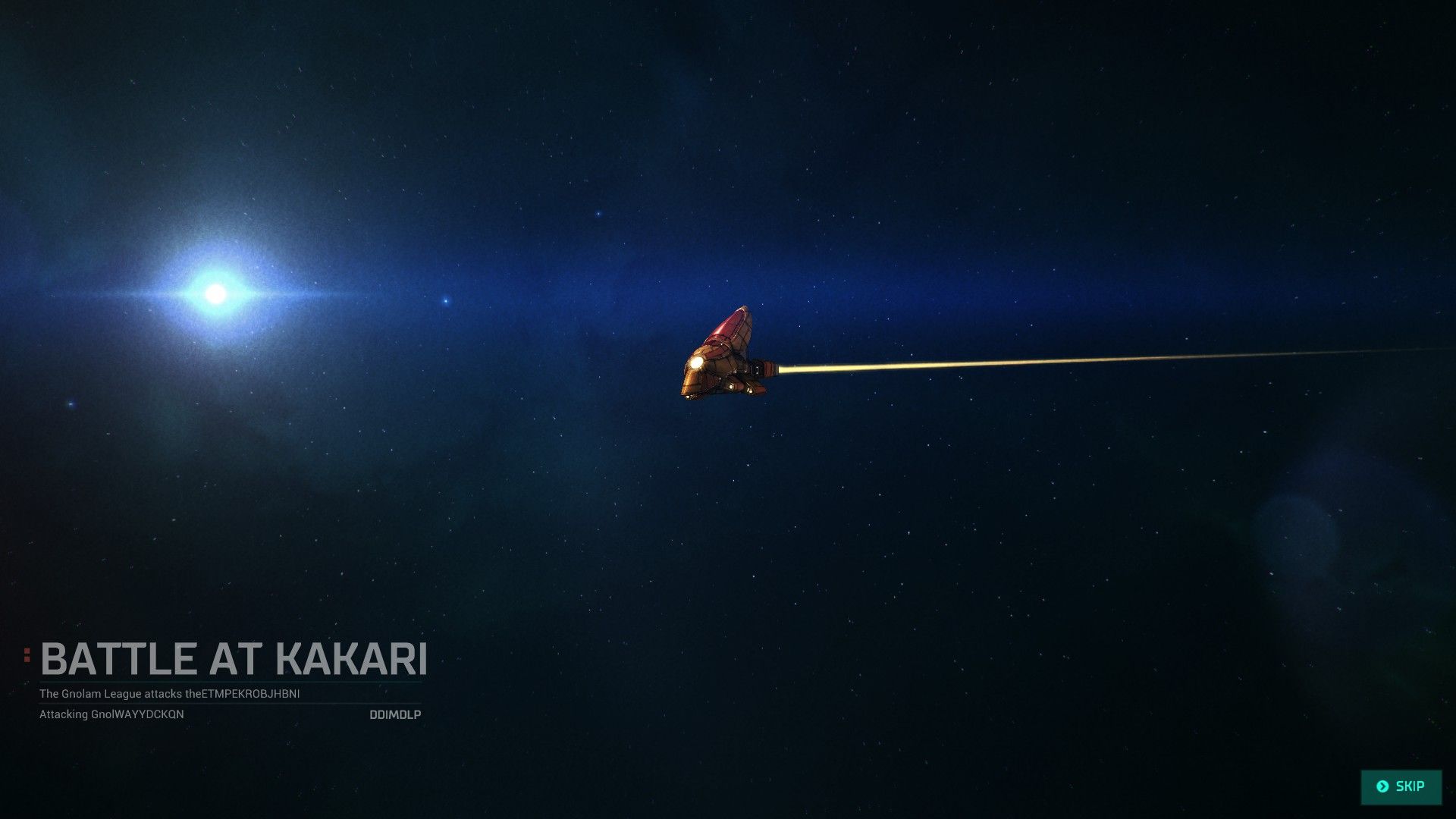 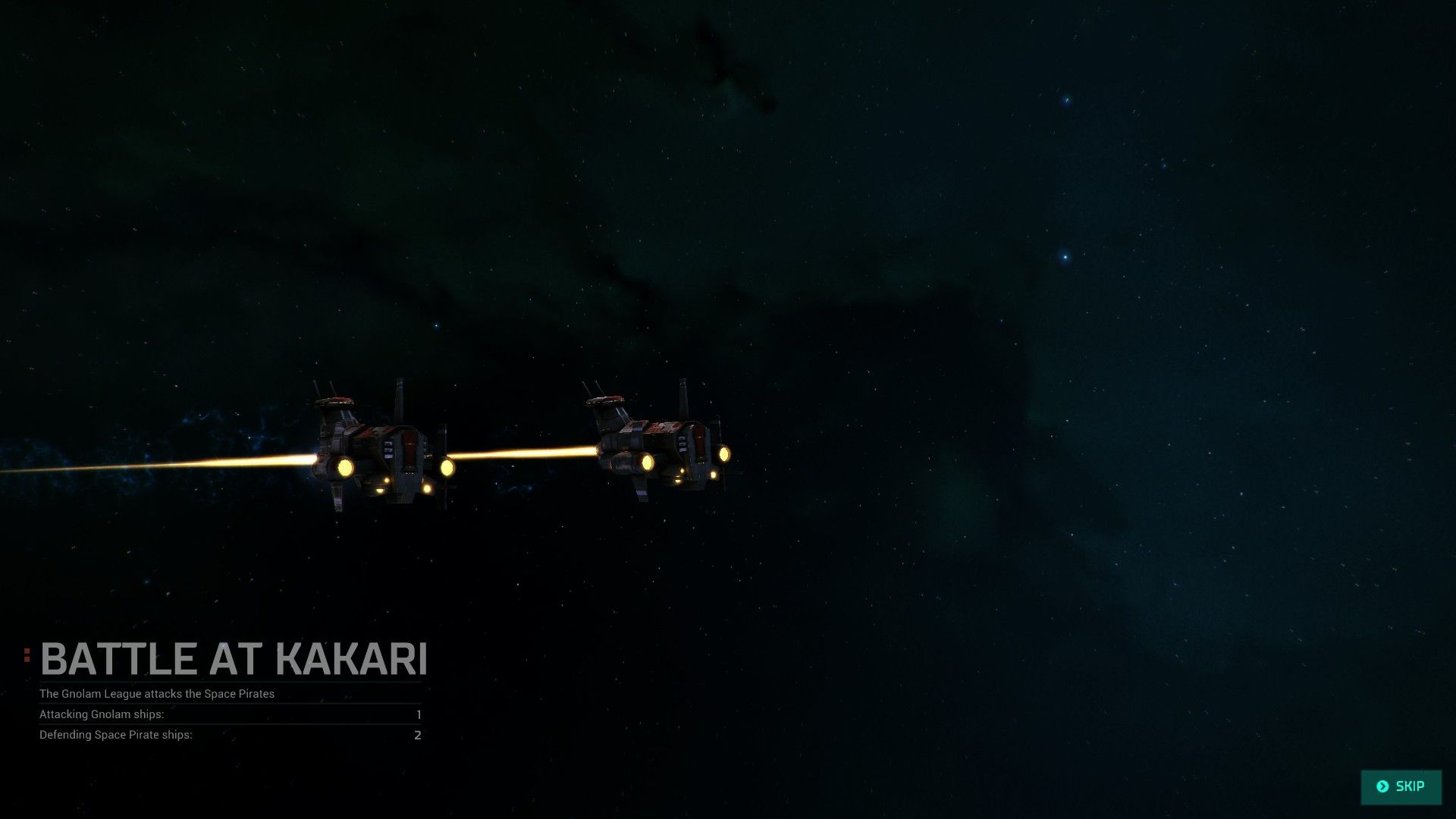 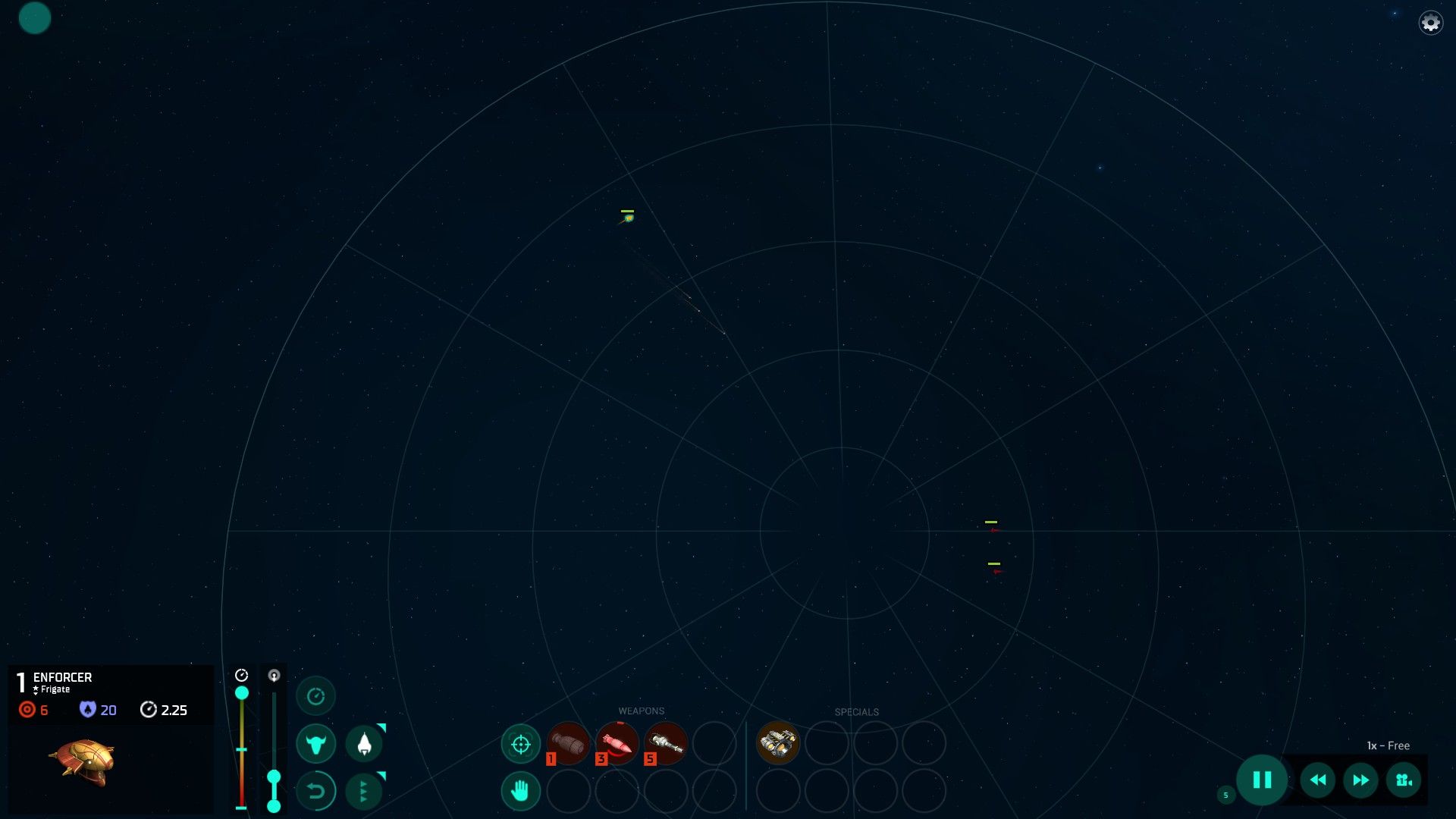 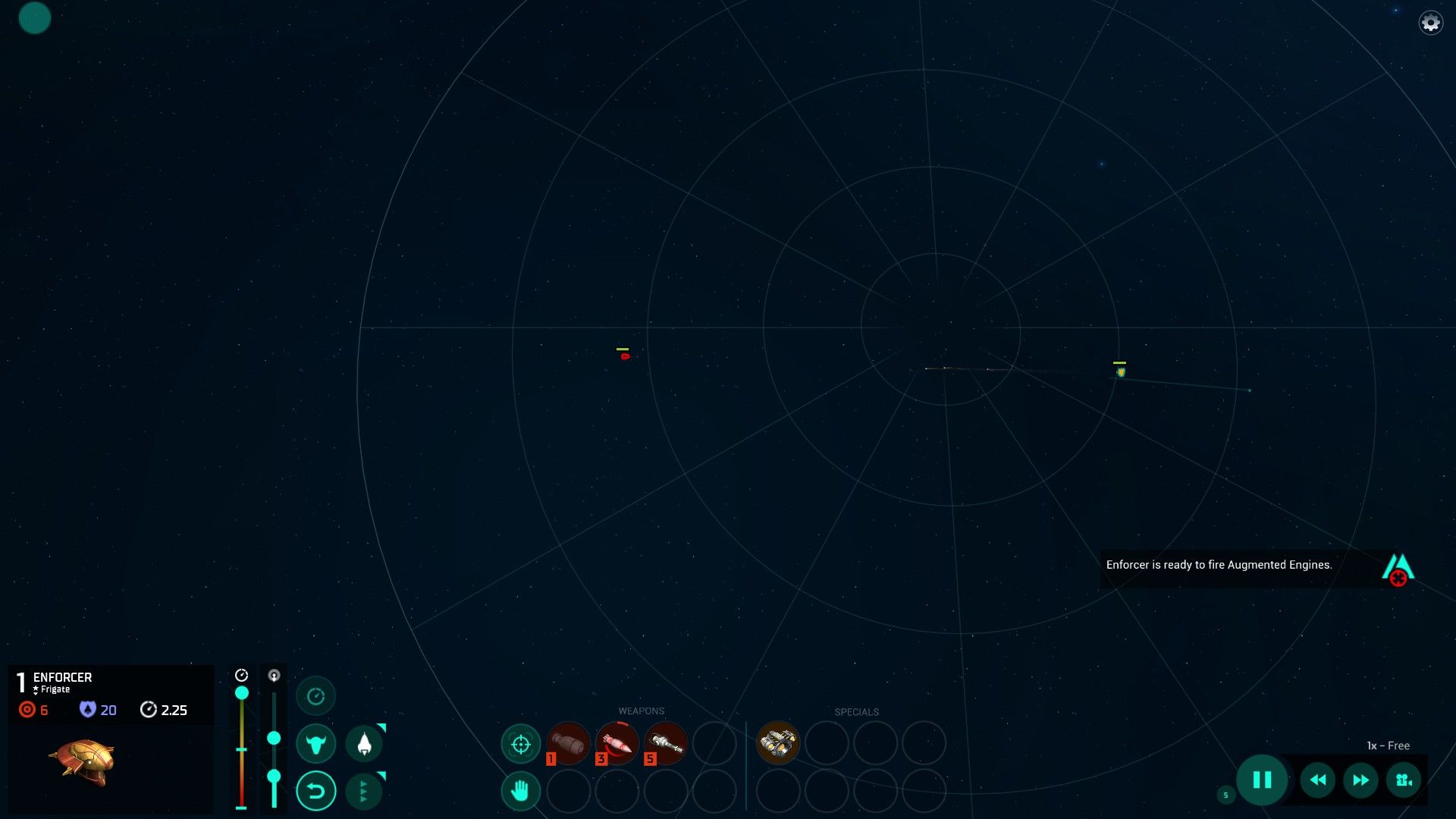 The Vindicator immediately made efforts to minimise the ability of the pirates to develop firing solutions, using its superior maneuverability to swing around the flank of the pirate formation and release a volley of missiles at one pirate vessel at maximum range. Although one missile failed to make intercept, the other two were sufficient to melt breaches into the pirate vessel's hull, leading to catastrophic depressurisation and simultaneous incineration of the pirate crew. It was able to release another volley at the other pirate vessel, this one with all missiles on target. The third detonation was enough to break apart the mangled hulk left behind by the first two proximity detonations. 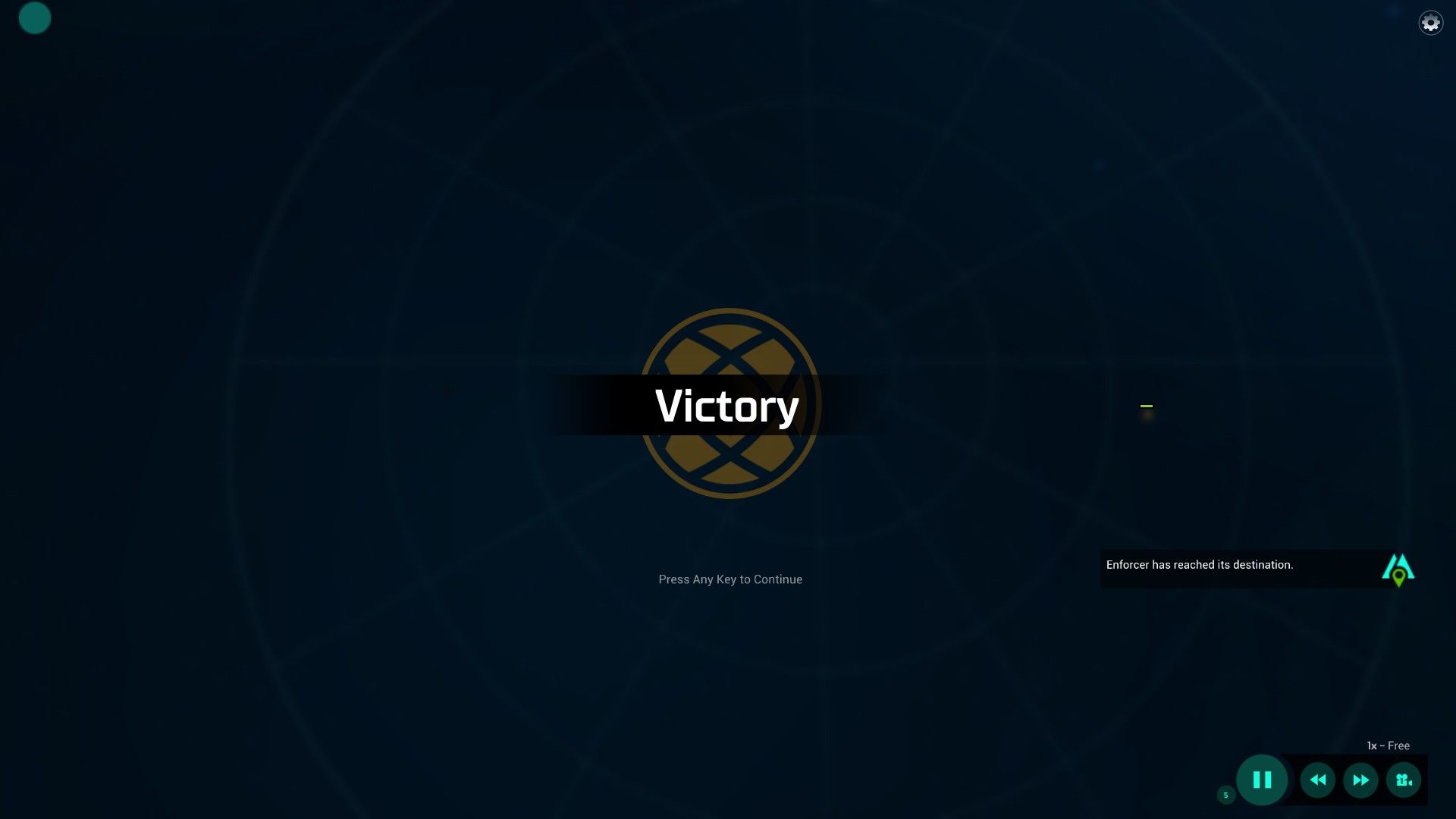 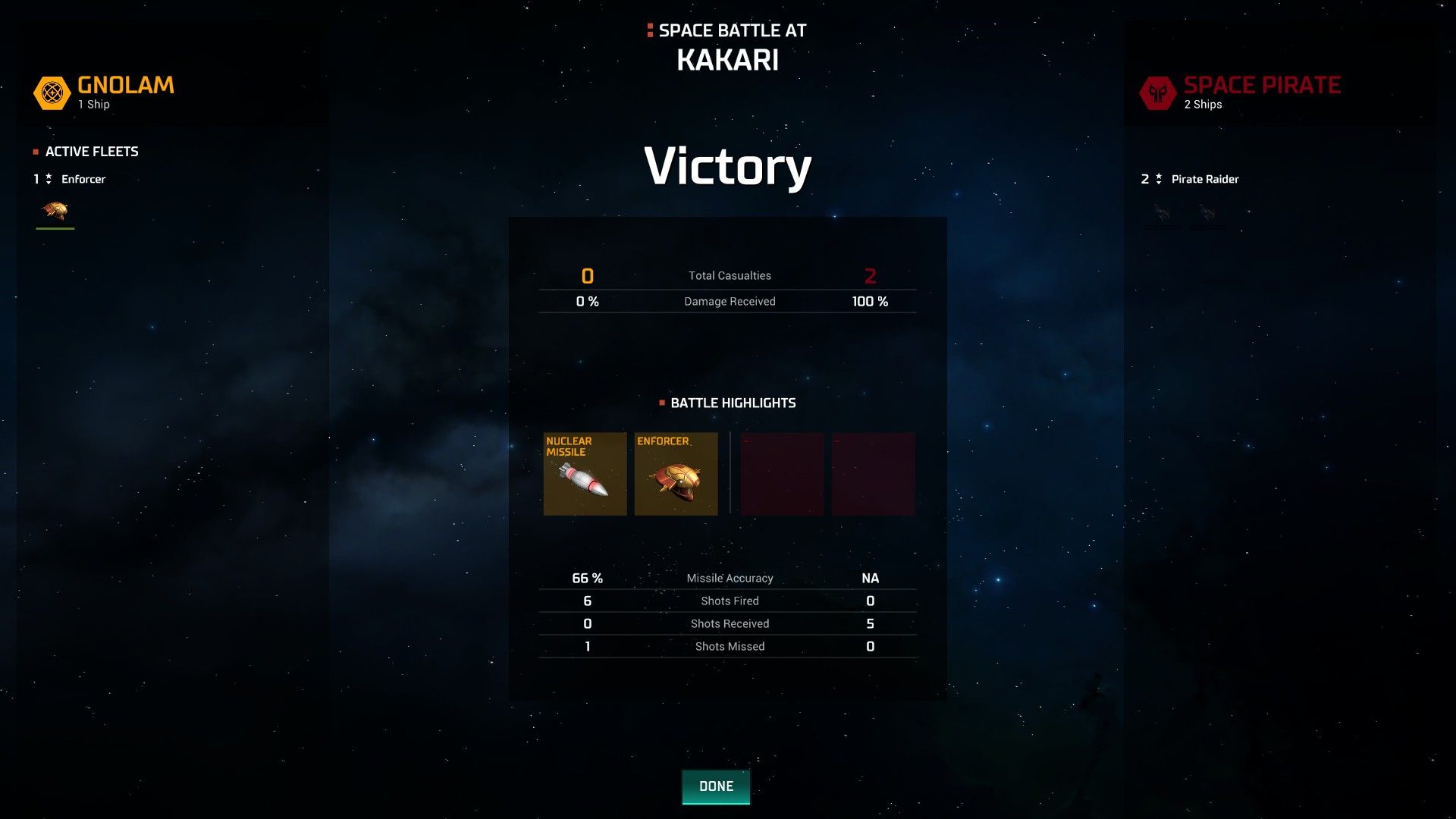 The first space battle in the history of the League was complete, and the Vindicator- and, by extension, the Navy- had performed flawlessly. The pirates had never been able to resolve a targeting solution, and the Vindicator was completely unscathed. With the listening post secure, the Vindicator made way for Guad, there to settle this pirate menace once and for all. 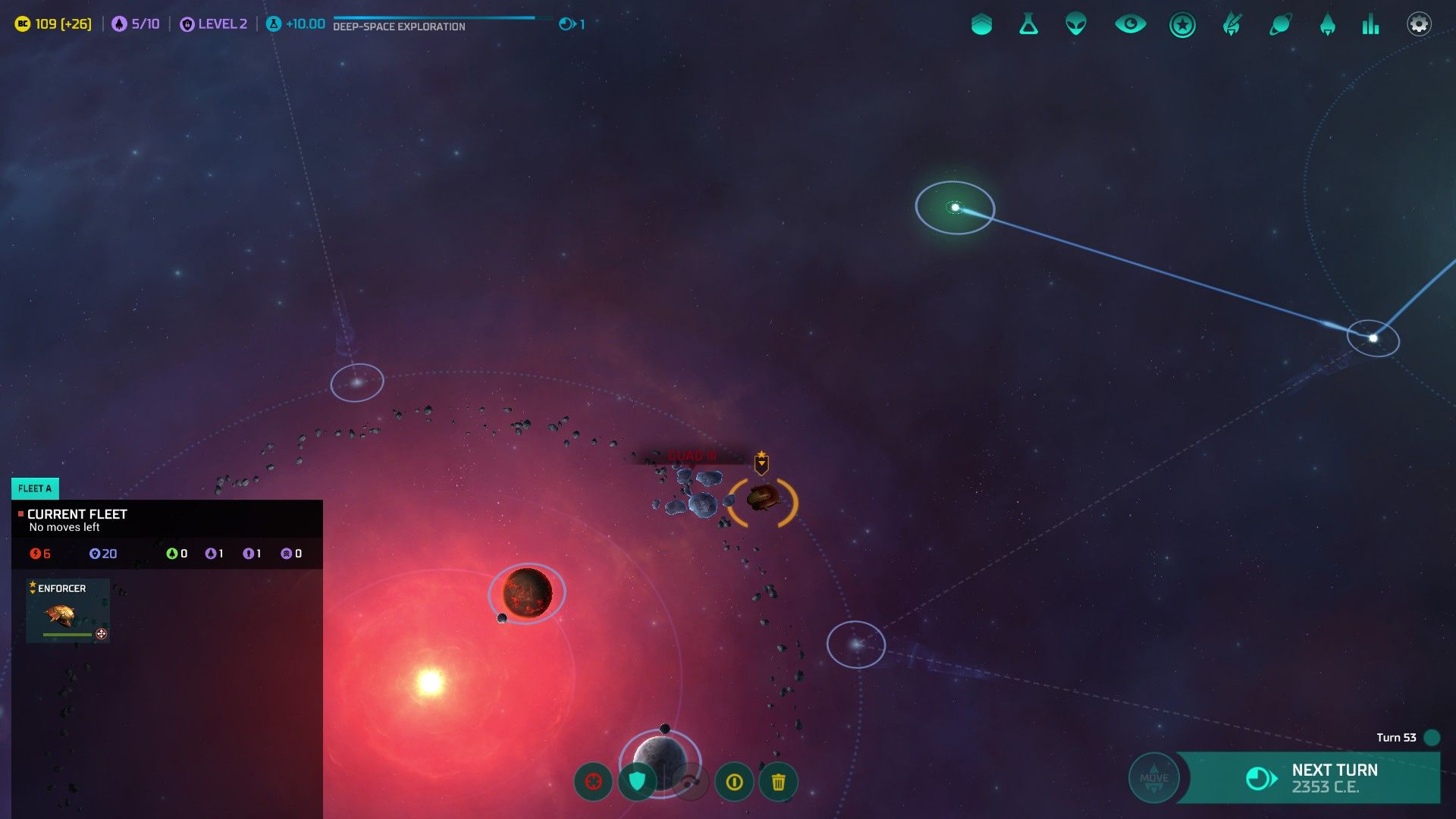 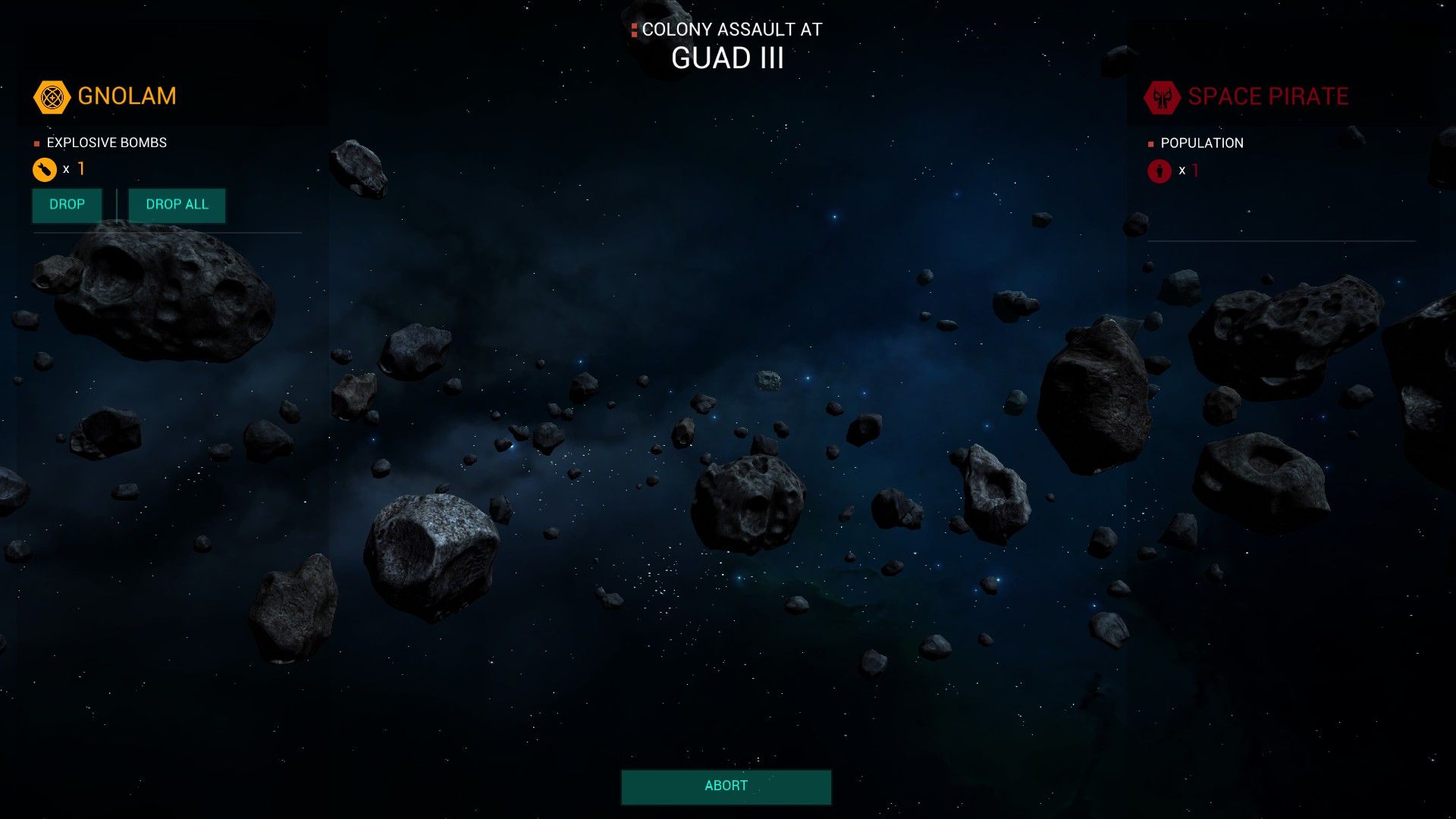 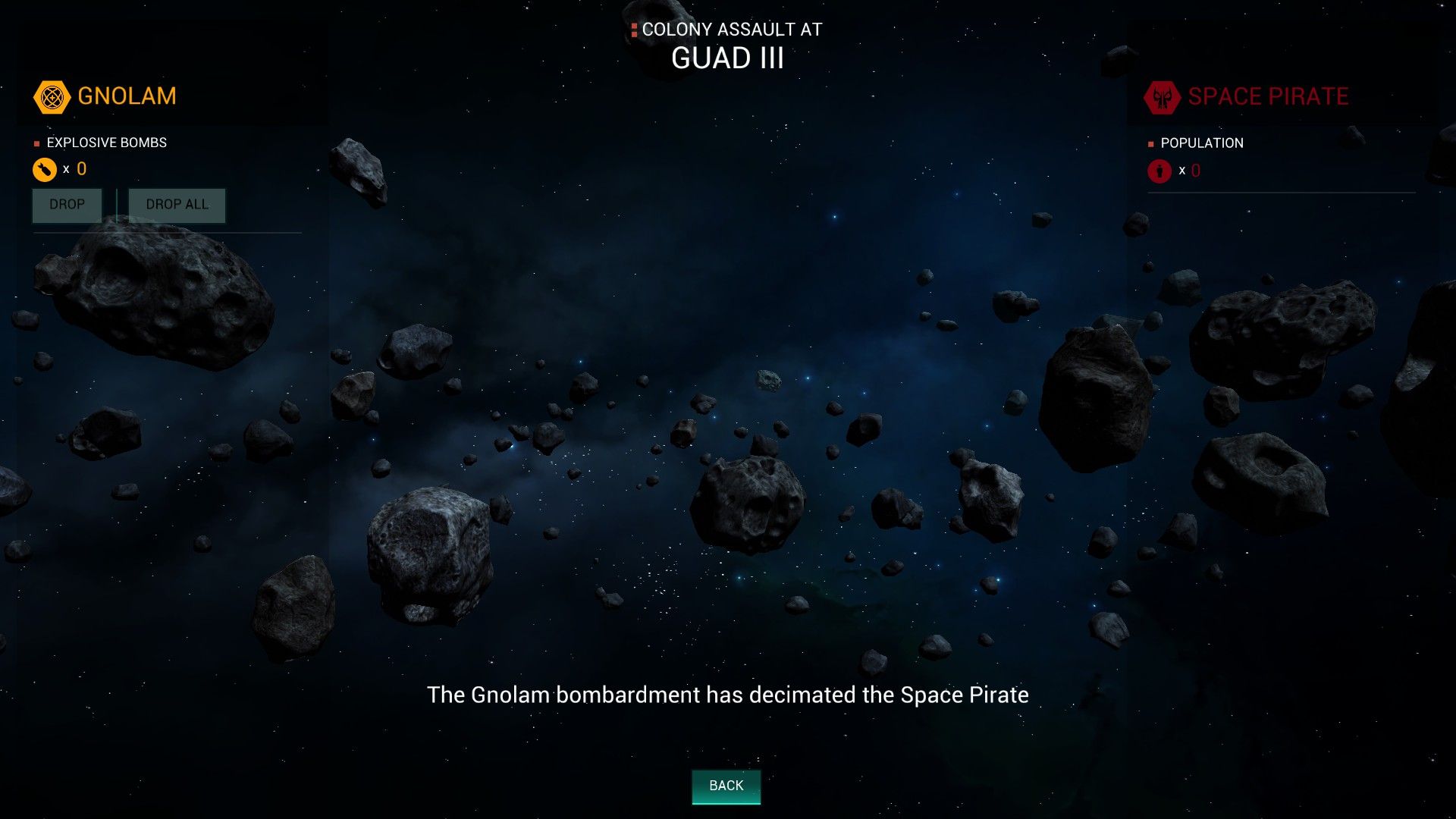 It was in 1867 that the Vindicator finally arrived at Guad, using its unguided nuclear warheads to perform demonstration strikes on the shipyard facilities and command centers to of the pirate warlord there. 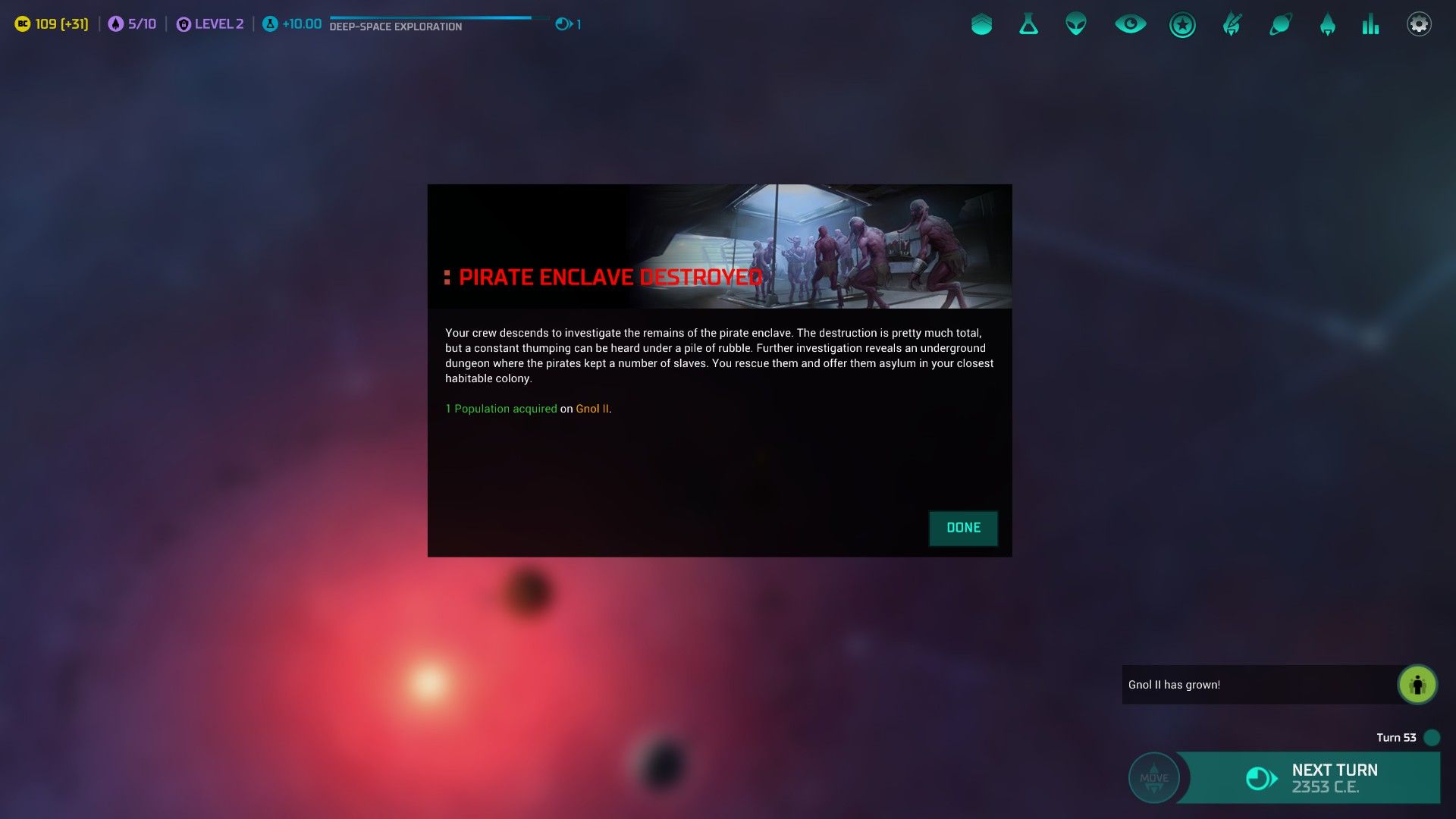 It proved that, over the decades of exile, population growth had continued in the Guad system as it had in the Gnol system, and, with the pirate warlord dead, League authority was able to be exercised on the scattered settlers and miners of the asteroid belt, who by this time were largely quite disillusioned with the harsh rule the pirate warlord had exercised. Over the next years, first in a trickle and then in a flood, the exile population of Guad largely returned to Val, the last holdouts eventually surrendering to the collapse of the simple economy which had sustained life in Guad. Hundreds of millions of Gnolams arrived on the homeworld over the course of a decade, many of whom had never seen Val at all. 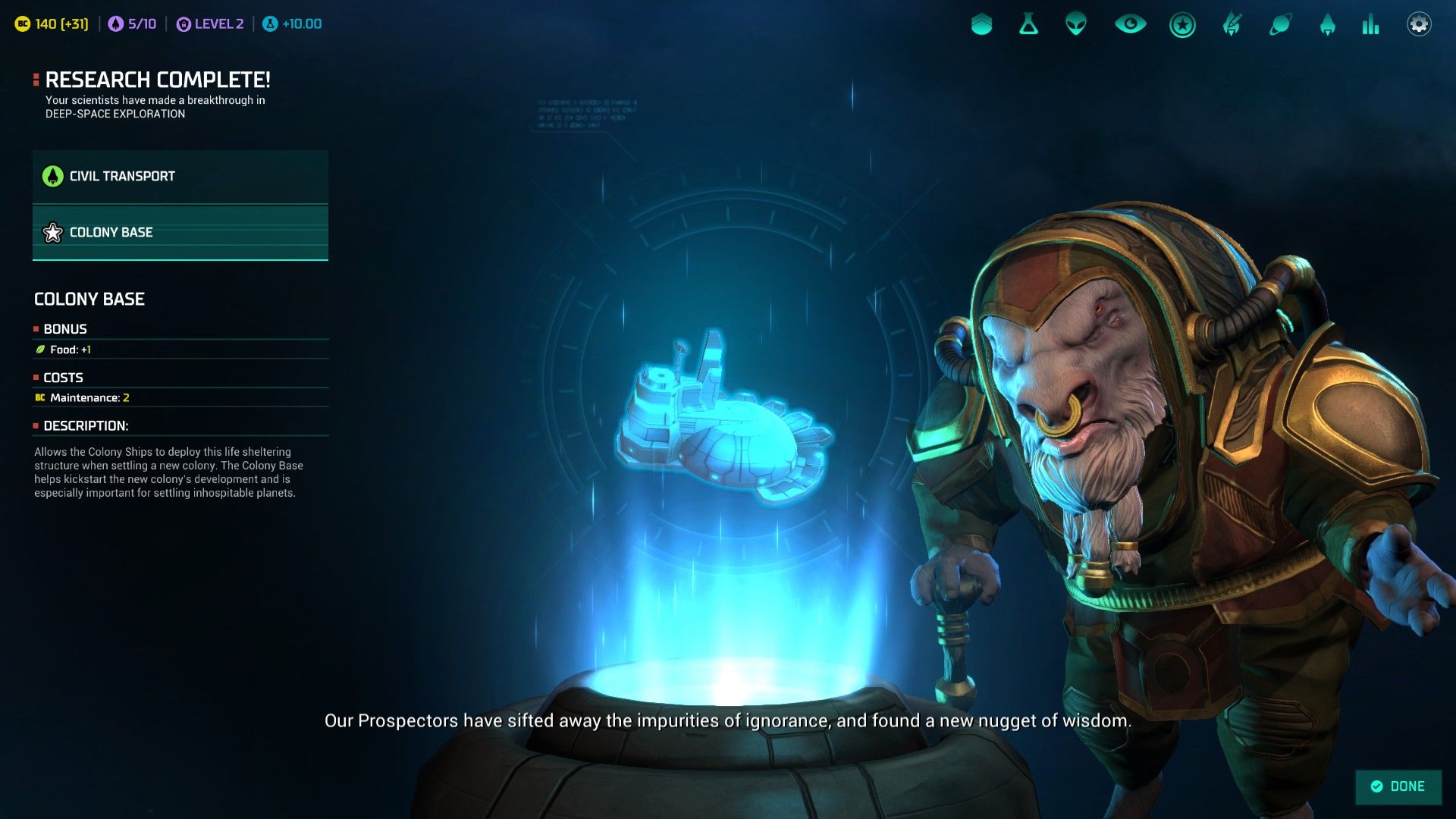 While the Vindicator had been ending the pirate threat, the civilian population of Val had not been idle, building up the homeworld and advancing knowledge. Late in the same year of 1867, a full plan for the starting equipment and expertise demanded by a colony mission had been drawn up. Effective early establishment of local surface agriculture on life-bearing worlds or sealed hydroponics on the most hostile worlds and rapid establishment of colony settlement prefabs could help ensure that colony populations would be securely established as quickly as possible, and lay the groundwork for future economic growth. Large-scale civilian shipping could, potentially, allow for major migrations between planets. The colony base structure, although relatively expensive in upkeep for producing only 1 food, is a critical boost to a newly-established colony and supplements overall agricultural yields in the future. It is automatically built at no cost when establishing a new colony, and cannot be built later if you don't have Deep-Space Exploration when first setting up the colony. I tend to view getting Deep-Space Exploration as fairly critical for colonisation efforts. Civil transports, for their part, are fairly cheap to build and carry a unit of population to resettle elsewhere, also potentially useful for speeding the development of new colonies. 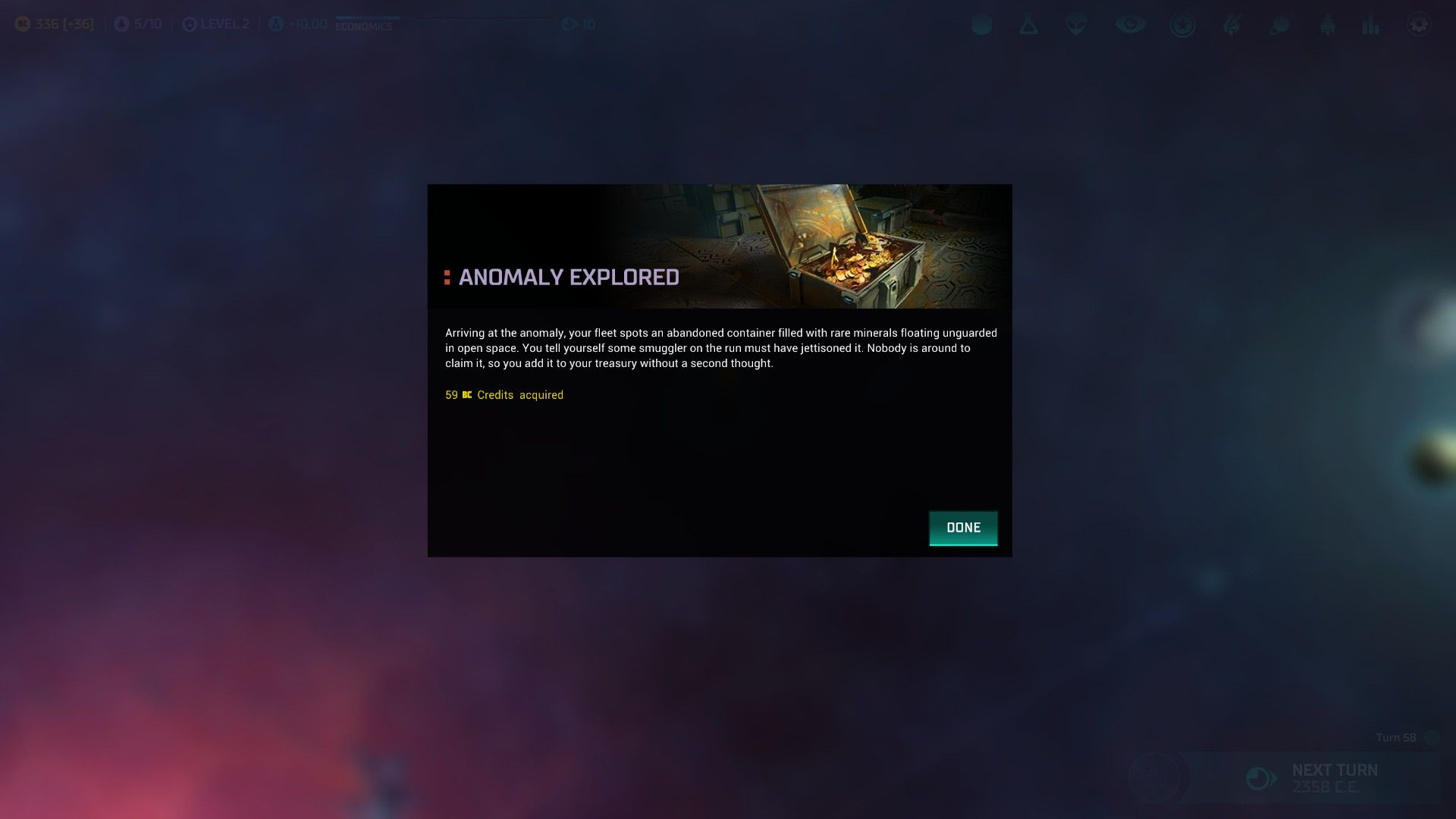 While returning through the Biots system from its survey of the Parmag system in 1873, the Endeavor noted unusual sensor returns in the outer portions of the Biots system. Investigation eventually revealed another stray cargo container like the one discovered in the Gnol system, similarly dating back thousands of years and marked with what appeared to be the same language. Recovery of what proved to be another container of refined elemental metals was a windfall both to the crew of the Endeavor and the overall economy of the League. Known Space and the Universal Mercantile League as of 1875  The efforts of the Prospector and Endeavor have charted many new stars, and found more unstable hyperspace conduits blocking further exploration driftward from the Gularn system. It appears that a rough quadrant of the galaxy is accessible to Gnolam travel. It is believed that only a few stars on the hyperspace conduits accessible to Gnolams remain to be surveyed, and it may well be that all accessible space will have been surveyed within the next 25 years, allowing for a retirement of the Prospector and Endeavor after distinguished and valuable careers. 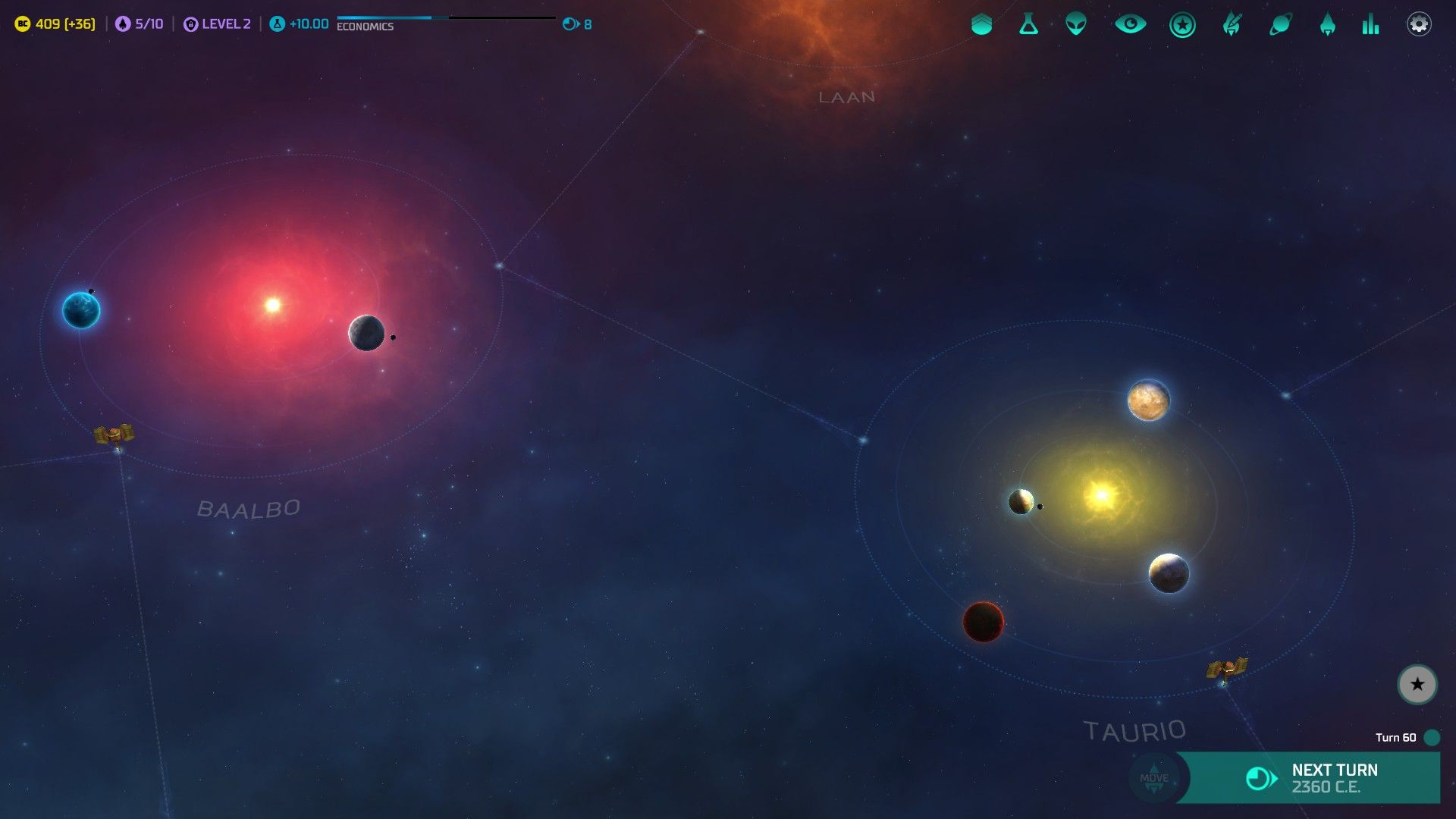 The Creator, under commission from the UML, has extended the chain of listening posts through the Baalbo and Taurio systems. The eyes and ears of the UML extend, if thinly, across multiple systems, hopefully to provide early warning if needed. 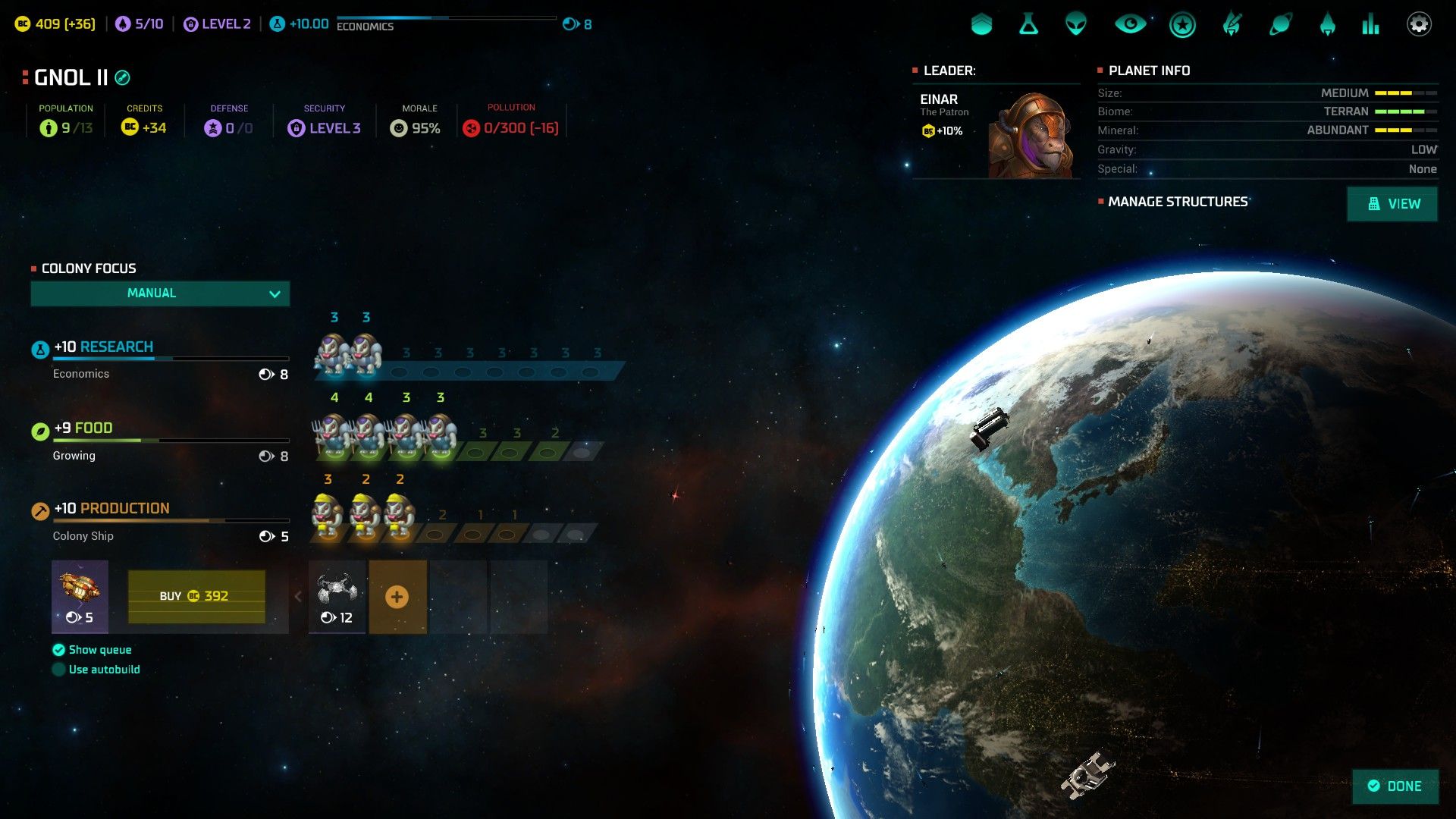 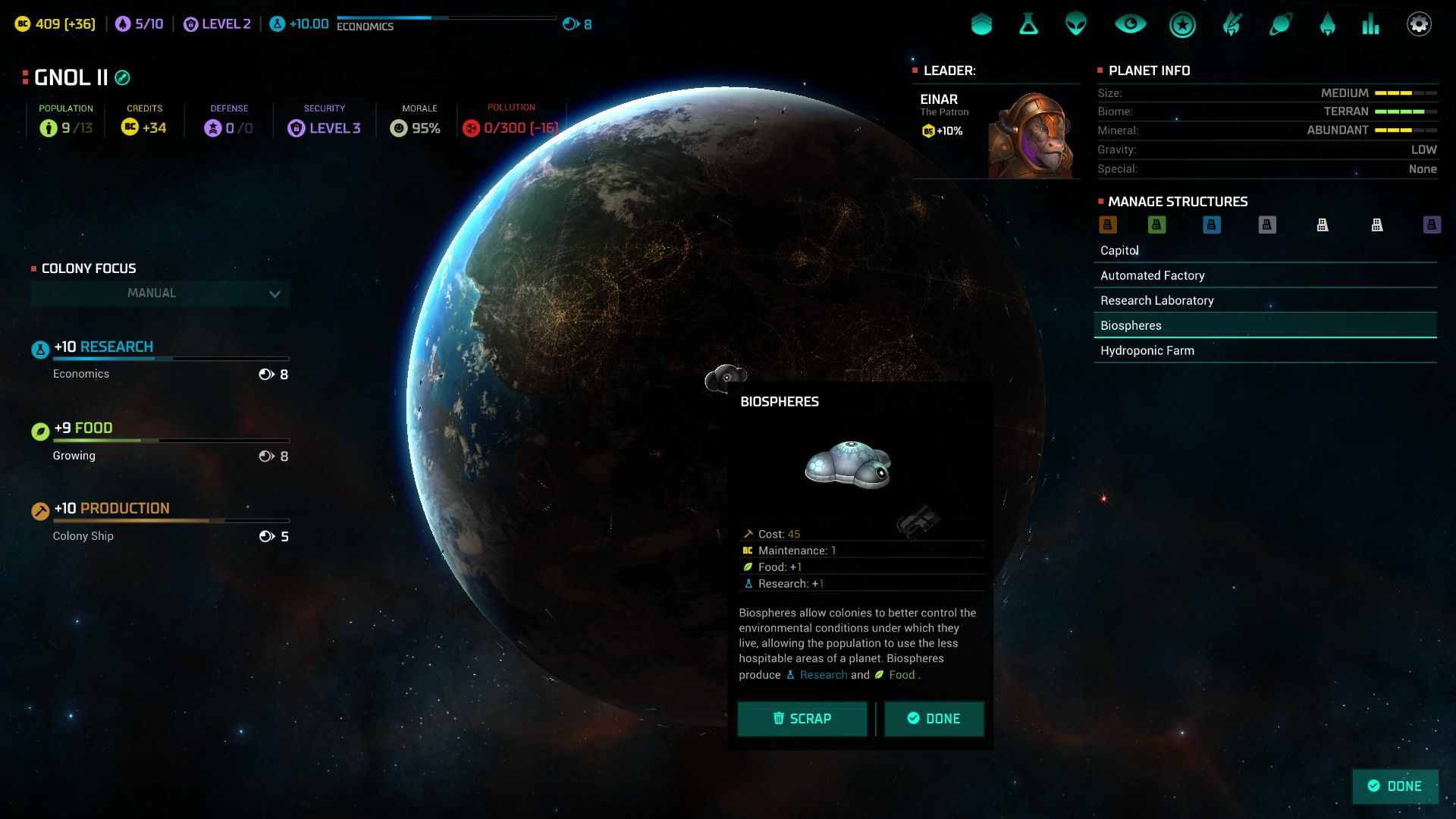 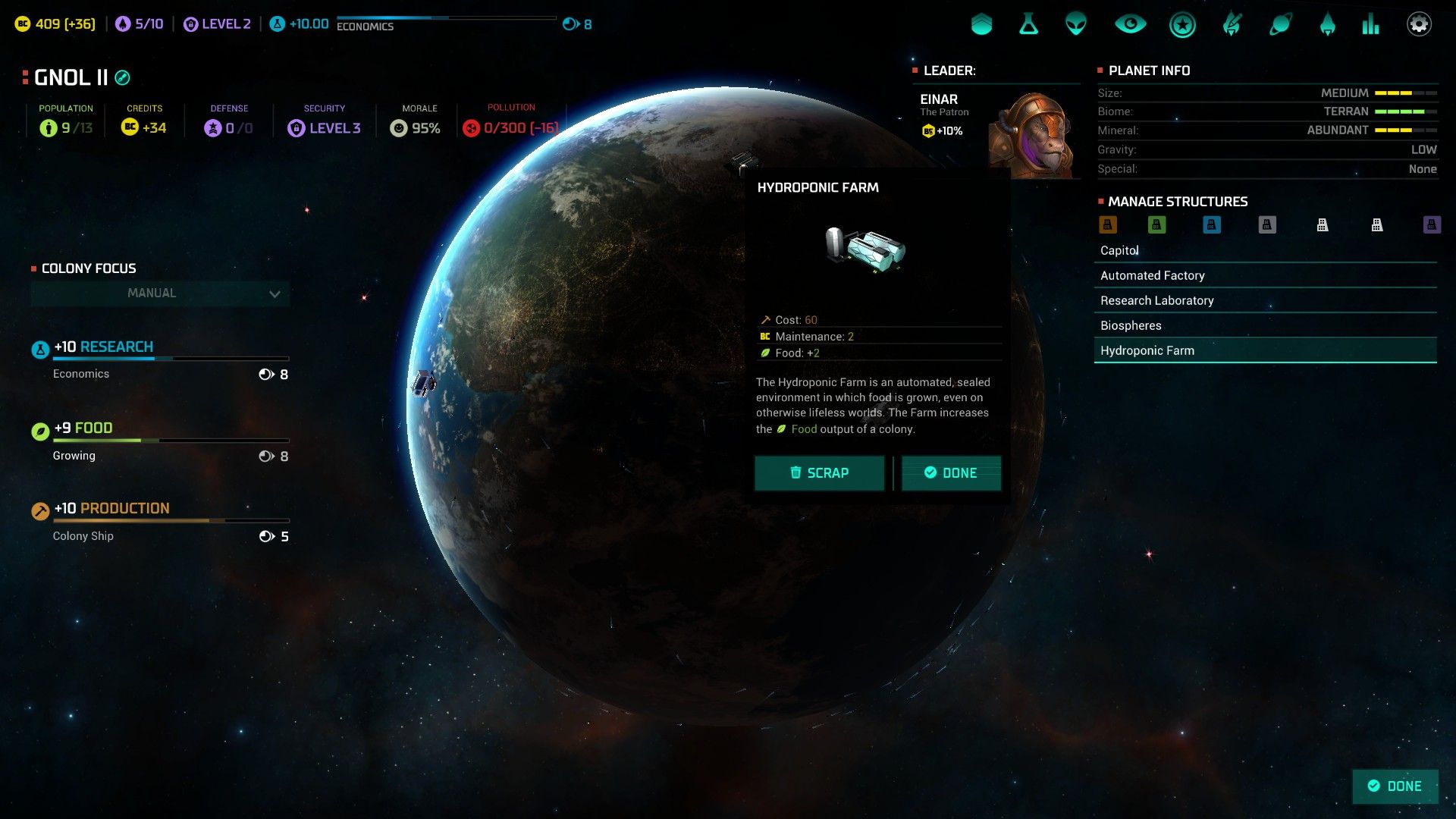 On Val, the population now exceeds 9 billion, with agriculture and industry having grown considerably over the past 25 years. Use of sealed-environment outposts has allowed for small research stations on the ocean floors, tallest mountains, and deep arctic, while use of sealed-environment domes to grow climate-sensitive specialty crops has joined with industrial-scale use of hydroponics to bolster agricultural yields even further. Food is perhaps even cheaper than it was 25 years ago, despite population growth. A major investment effort is under way, helping to ensure that the first Gnolam colony mission shall leave to Kakari within a year. 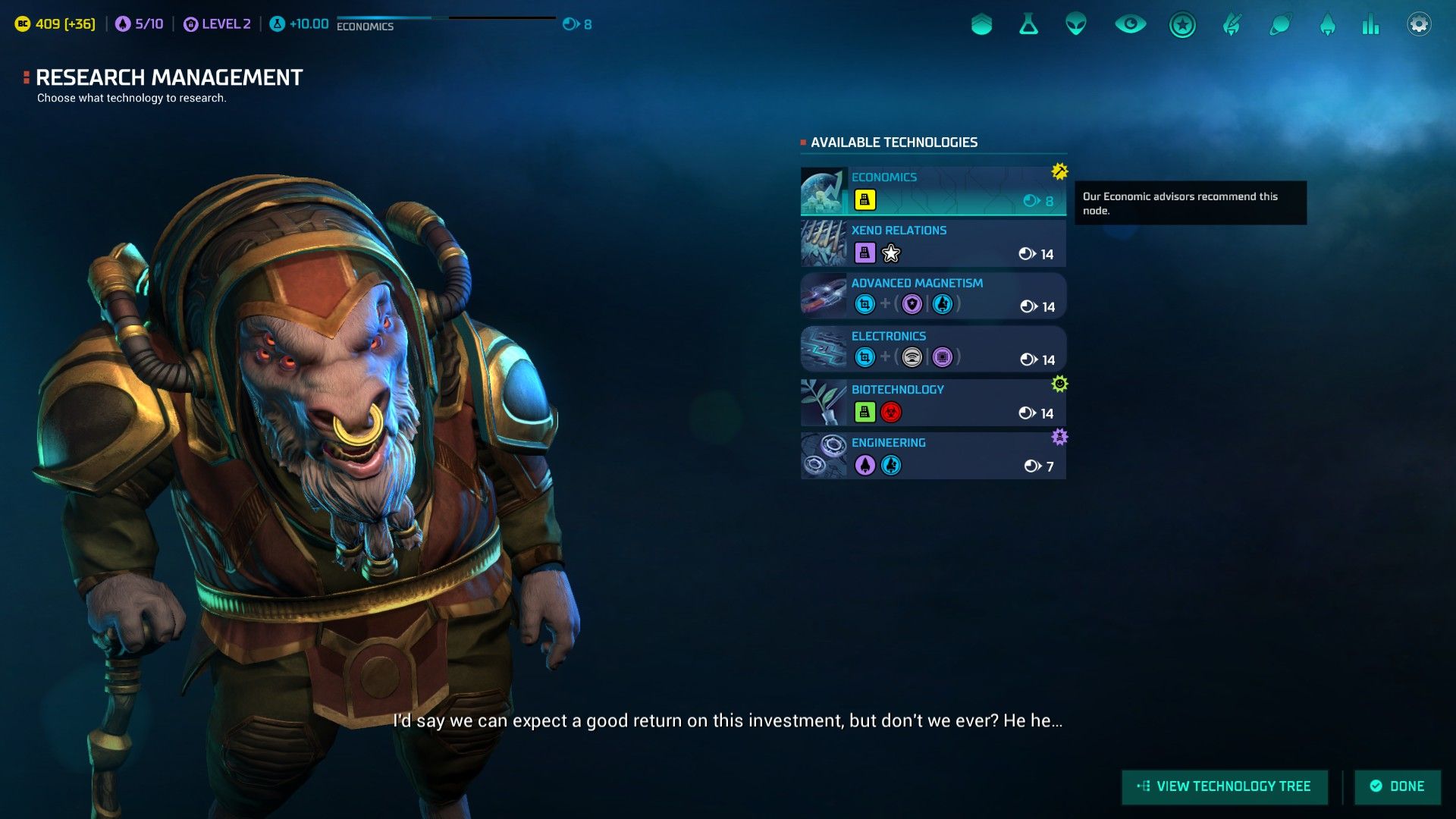 Work to formalise analytic tools, business methods, and institutional structures to minimise overhead costs and more effectively respond to customer demand is well under way. It seems likely that, as more sophisticated economic tools and business methods become available, the League's economy shall enjoy a great surge of growth. Proposals for the Universal Mercantile League Research Proposals With the strong background of economic growth expected to be available within the next 10 years, some corporate research proposals looking into effective scientific and industrial development for the future may begin to show their first fruit. Although these proposals will require extensive research funding and a great deal of time to complete, they may well help ensure the industrial viability of worlds with more marginal metals content and a strong culture of innovation into the future. More advanced study into the properties of electromagnetism is likely to come along with refinements to neutron cannon design and improved ship defenses, and may well allow for effective industrial-scale fusion, which would revolutionise Val's energy sector. Meanwhile, perfecting the design of electronics should help allow for valuable advances in computer sciences. Development of artificial organisms may be of some limited value on marginal-environment worlds, and lay the framework for further advances in biosciences. Finally, improved spaceframe engineering, as well as opening new options to the Navy, would lay the groundwork for improved chemical engineering and better drive systems. Please vote between Private Funding, Advanced Magnetism, Electronics, Biotechnology, and Engineering research. If you vote for Advanced Magnetism, also vote between basic shield systems and ECM systems to counter missile fire, which still remains the most dangerous threat to our ships at this tech level. If you vote for Electronics, please vote between targeting computers and survey sensor applications- but note that we've nearly completed surveying our quadrant of the galaxy by now. Private Funding is a tier 3 technology and costs 268 research compared to the 137 for the tier 2 technologies that make up most of our remaining alternatives, so bear in mind the increased expense if you choose that. Naval Appropriations The anticipated expansion in the size of the UML has the Navy eager to prepare for the staffing and logistics challenges it shall no doubt face in the future, as well as considering commissioning the Enforcer as a sister ship to the Vindicator, allowing for more flexibility of operations. The Assembly shall have to consider just how much of a budget the Navy shall get. Please vote on whether or not to complete a Star Base before starting on a second colony ship, and on whether or not to construct the Enforcer as a second naval vessel. Colonisation Priorities The Assembly has voted to approve subsidy funds to encourage the next colony mission after Kakari to settle the Taurio, Varinia, or Shimari systems. All three systems have enough value as colonisation targets to draw independent interest from civilian colony backers. Please vote between Taurio Prime, Varinia Prime, or Shimari Prime as our next colonisation target. The League stands on the very cusp of establishing its first true extragnolar colony. With this momentous development, the future seems bright indeed. nweismuller fucked around with this message at 20:58 on Jan 17, 2021 |
|
|
|

|
| # ¿ Apr 27, 2024 15:44 |
|
Cat Mattress posted:I see max population is still at 13 with biospheres, meaning that you didn't use the unofficial patch. (It changes the biosphere bonus to +2 max pop, like in MOO2.) That's right. Using the current official version, and happy enough with it.
|
|
|



